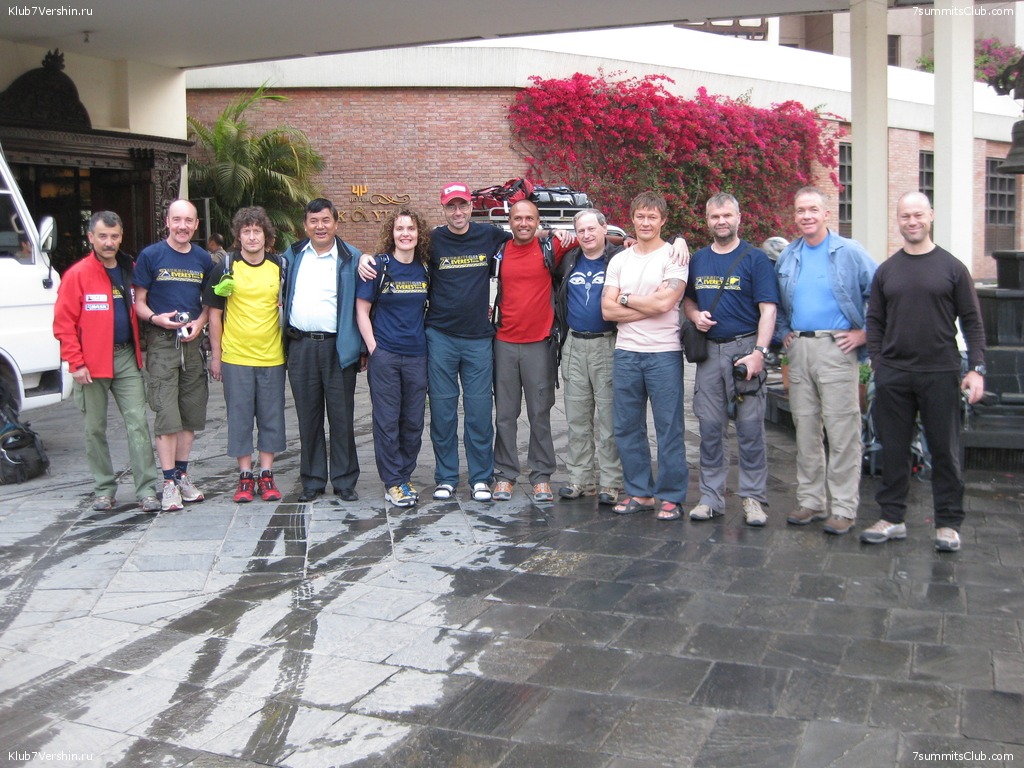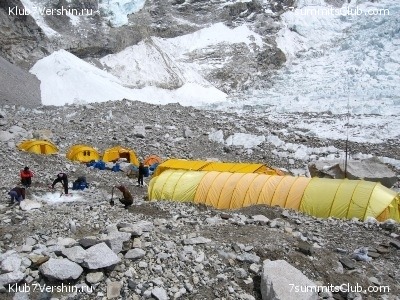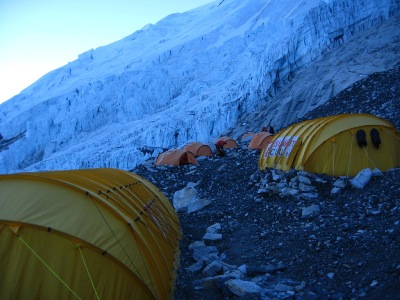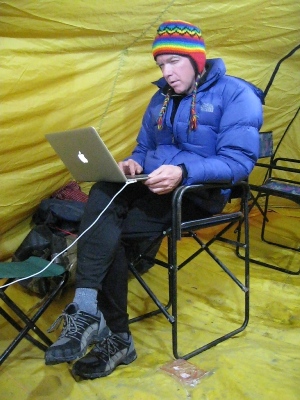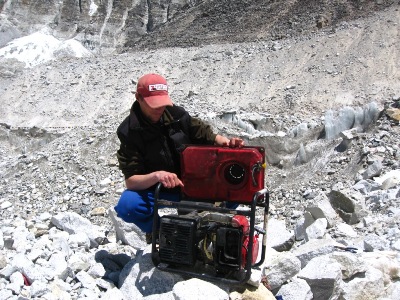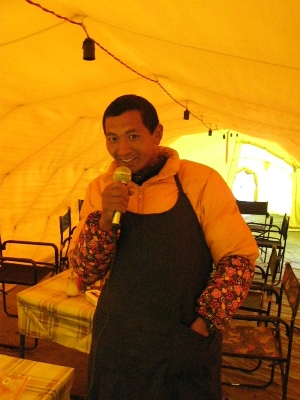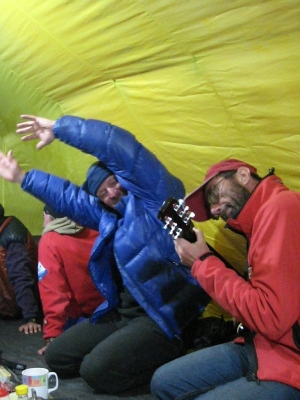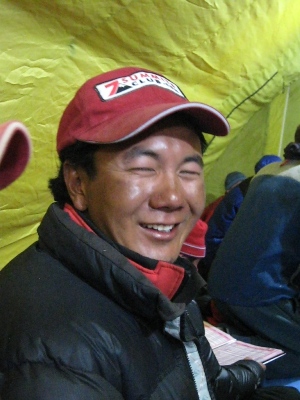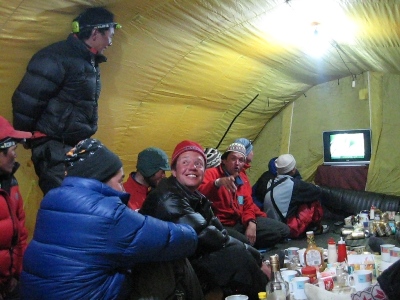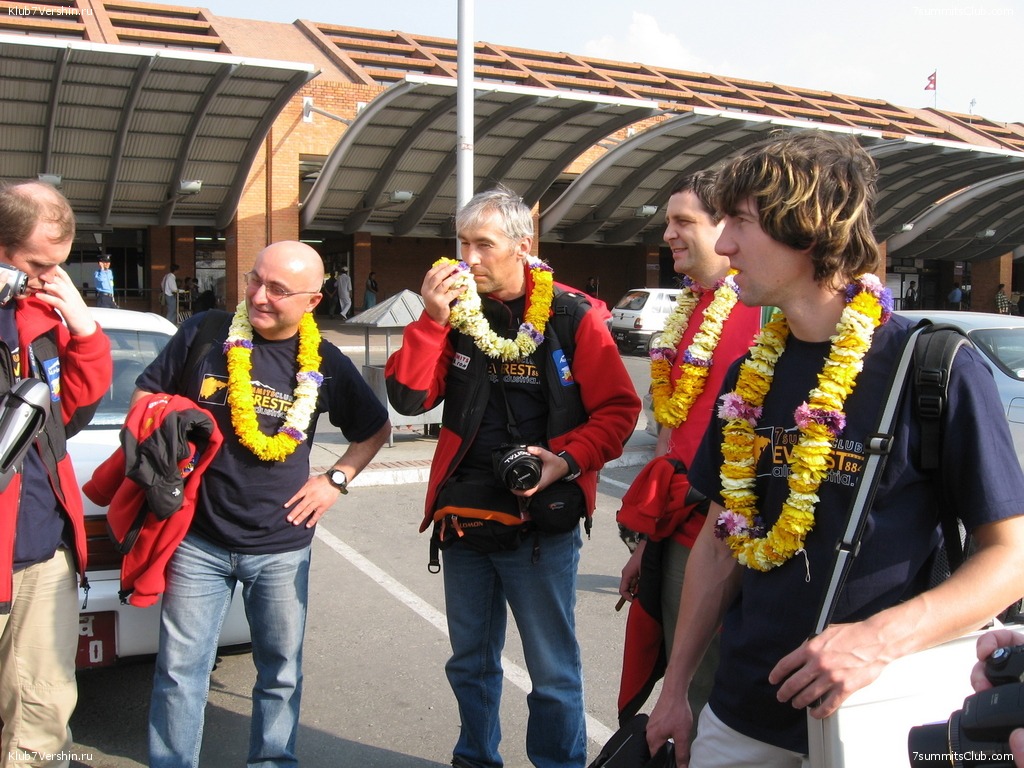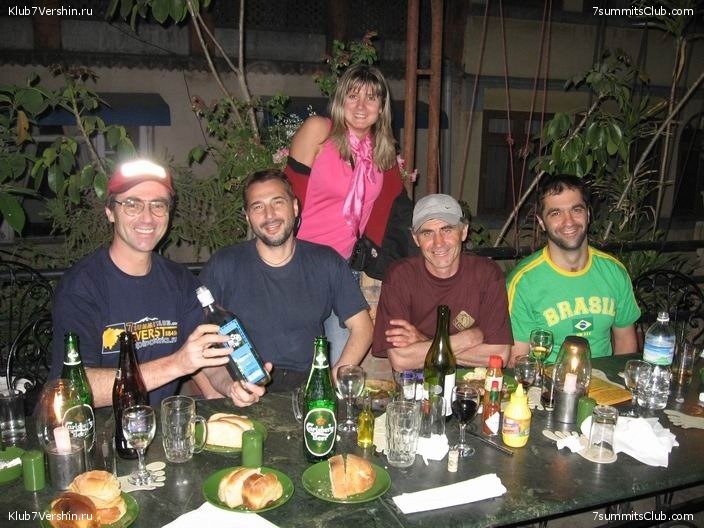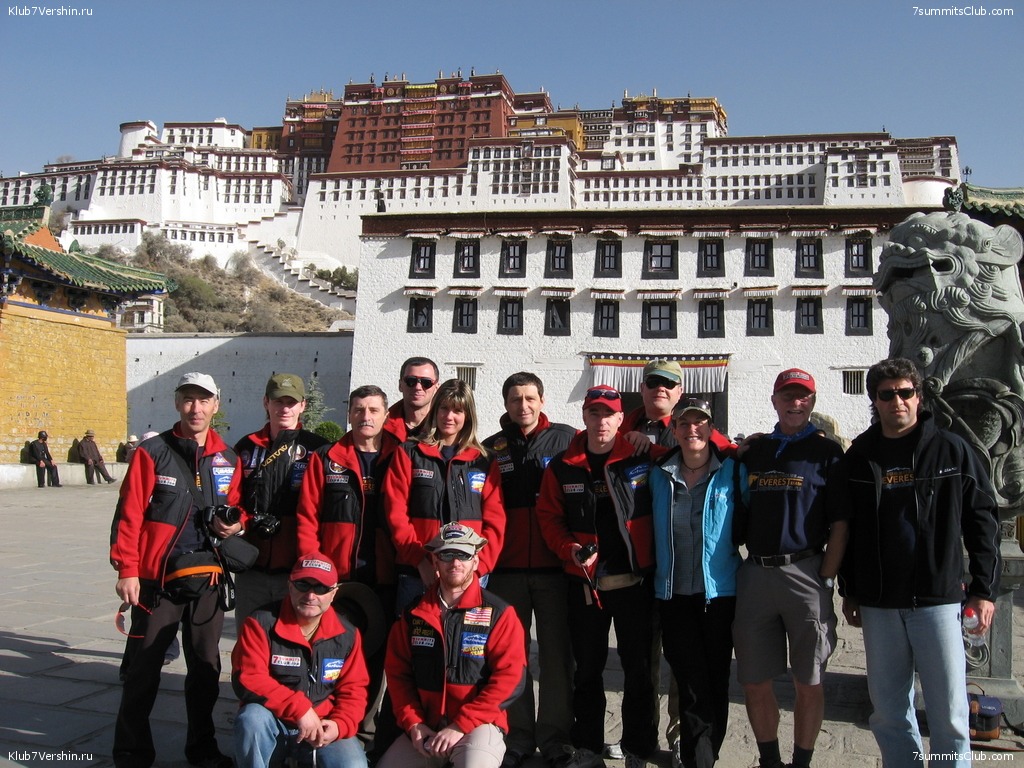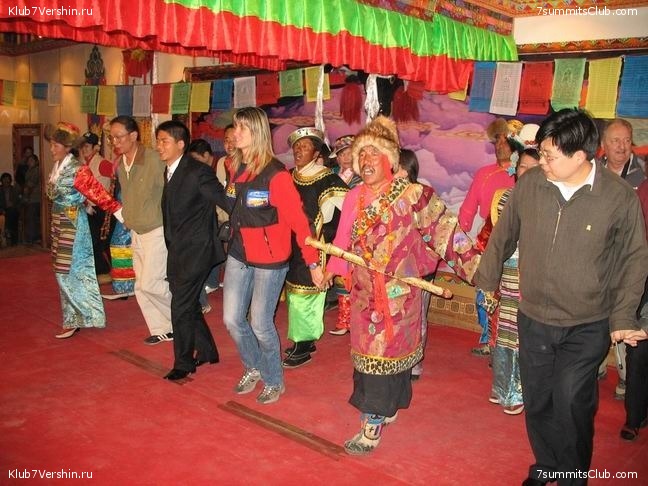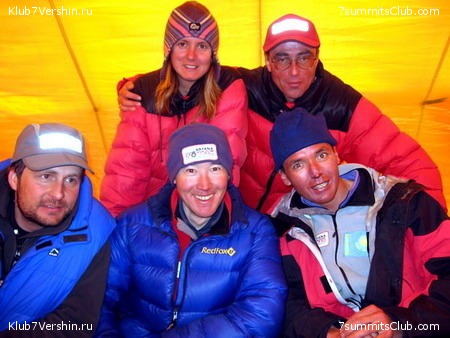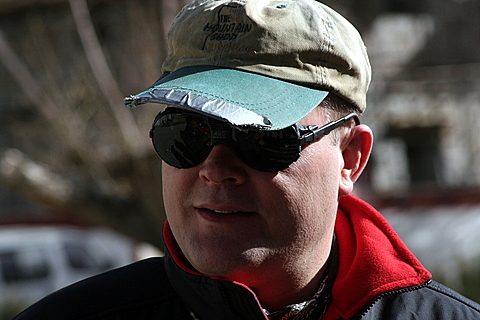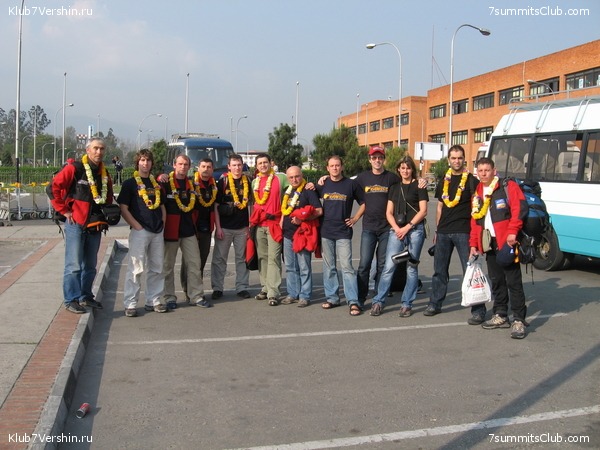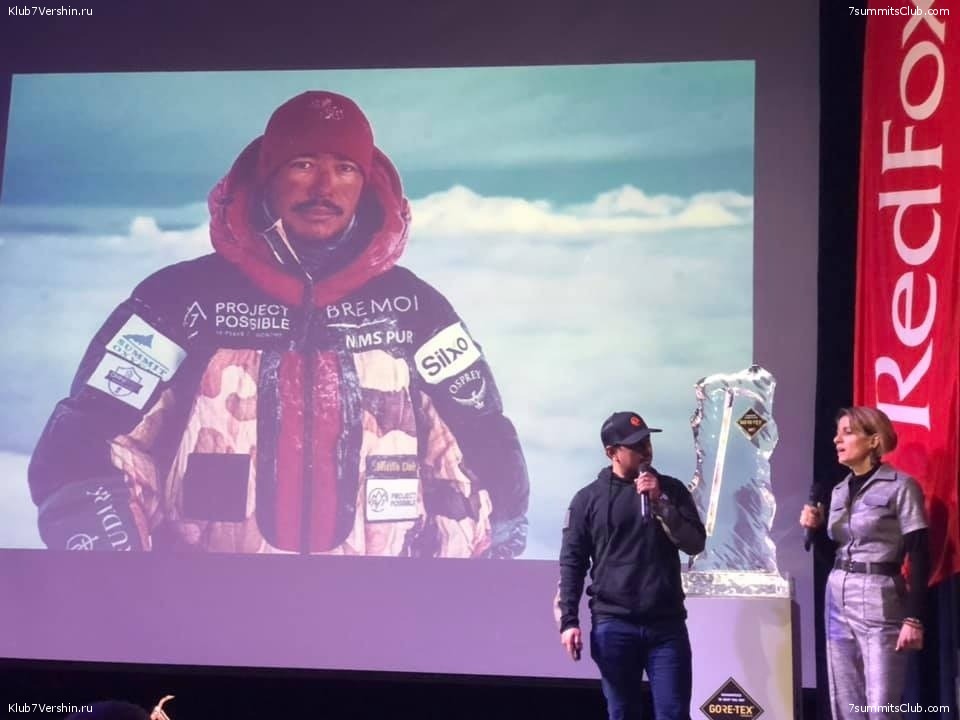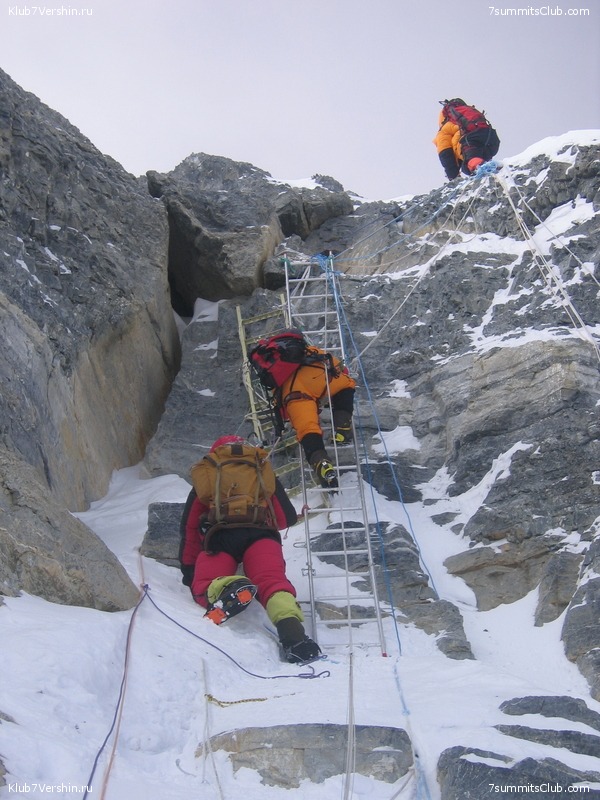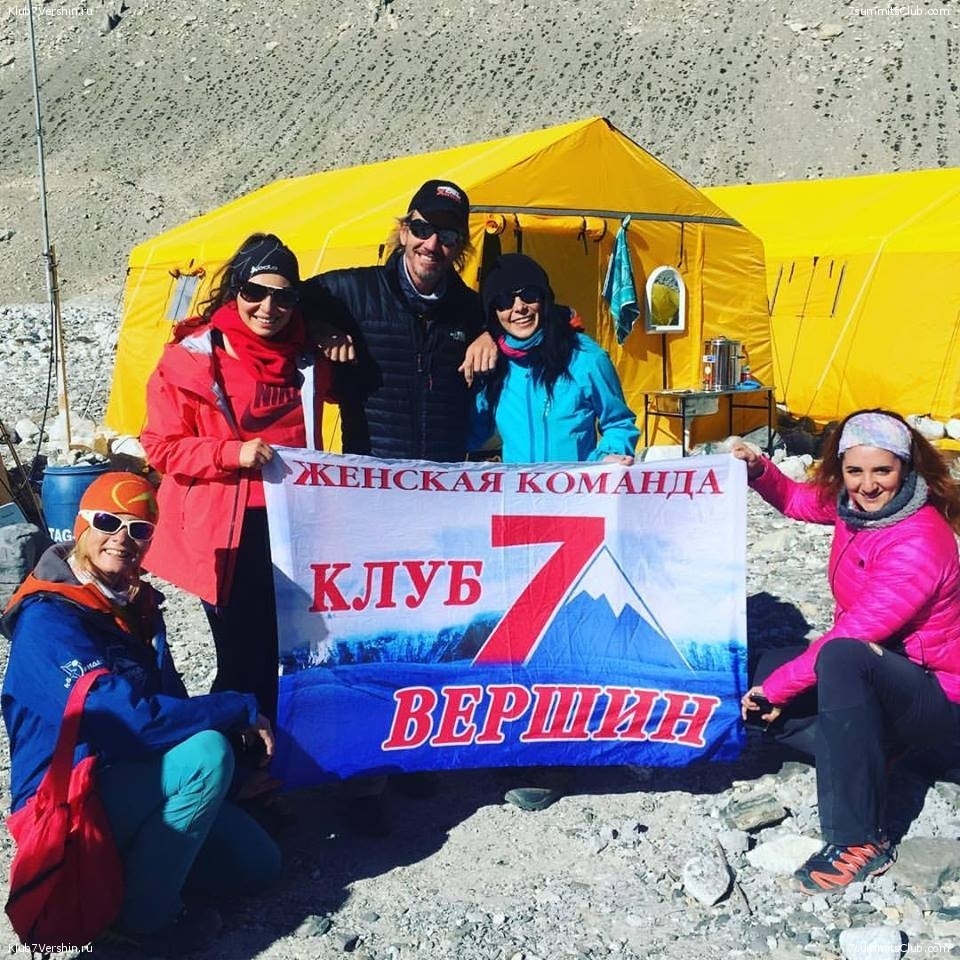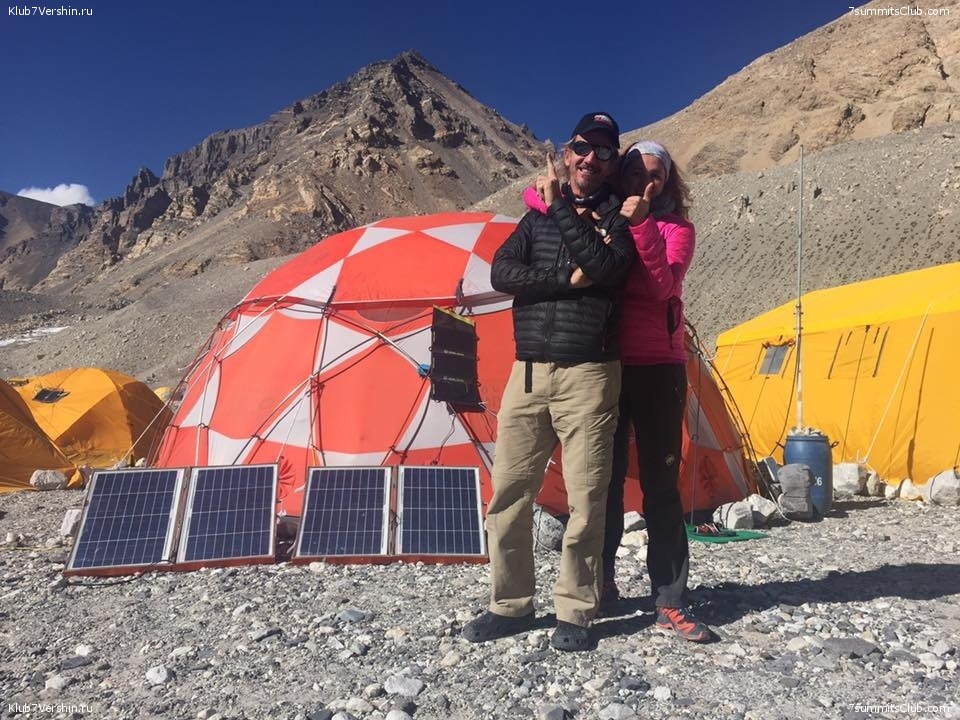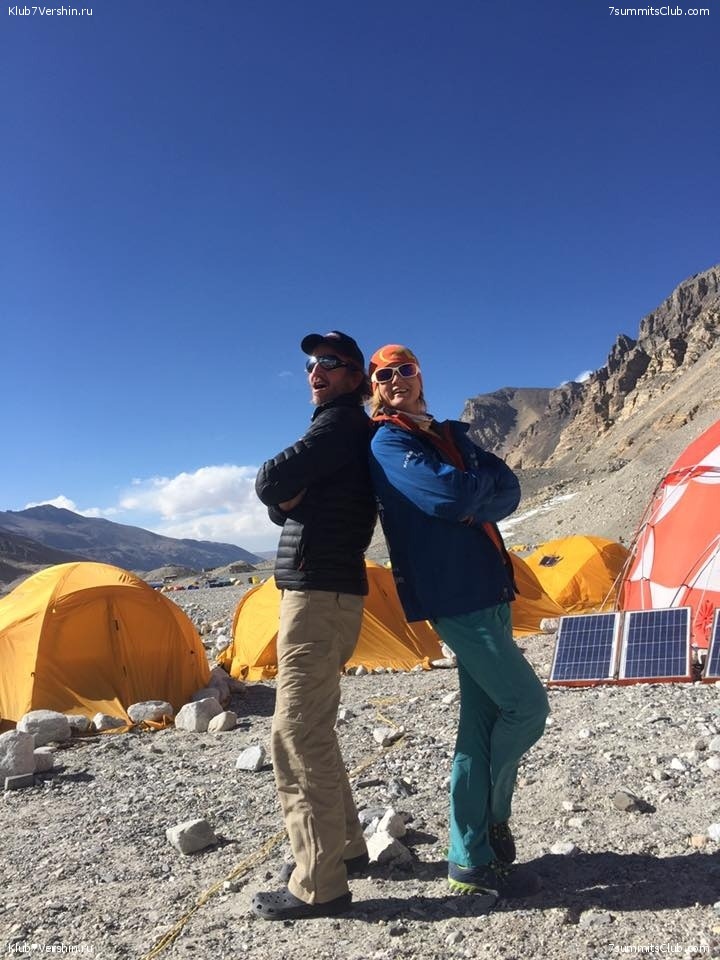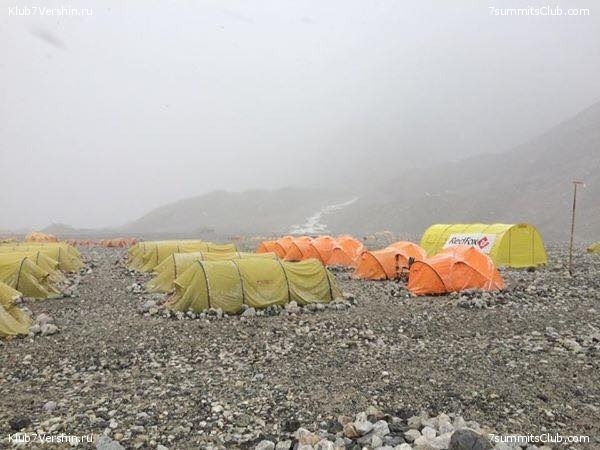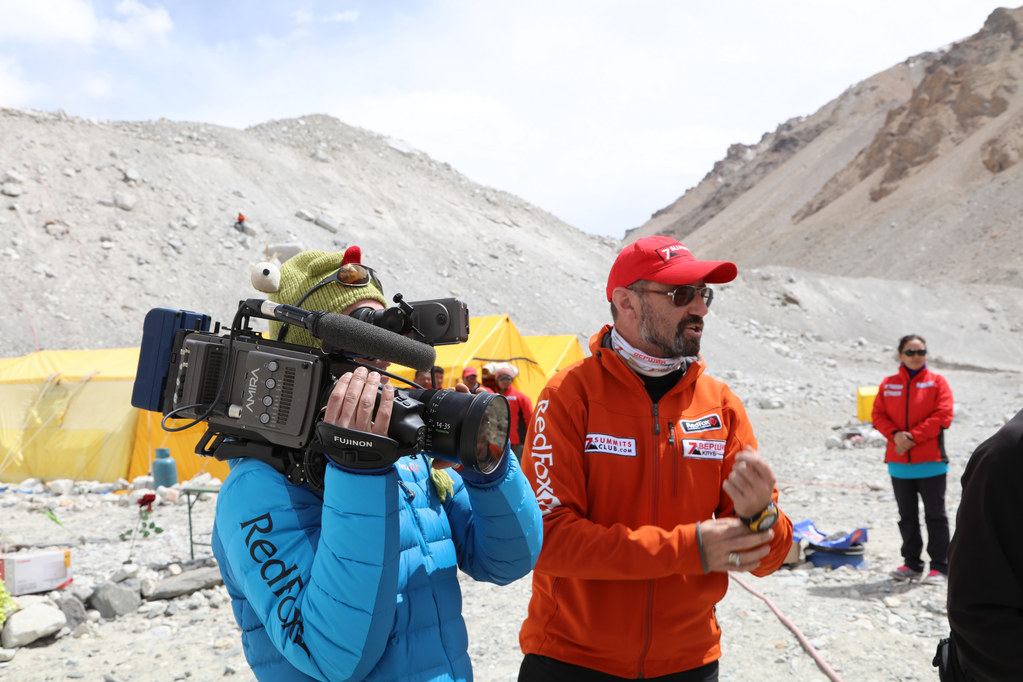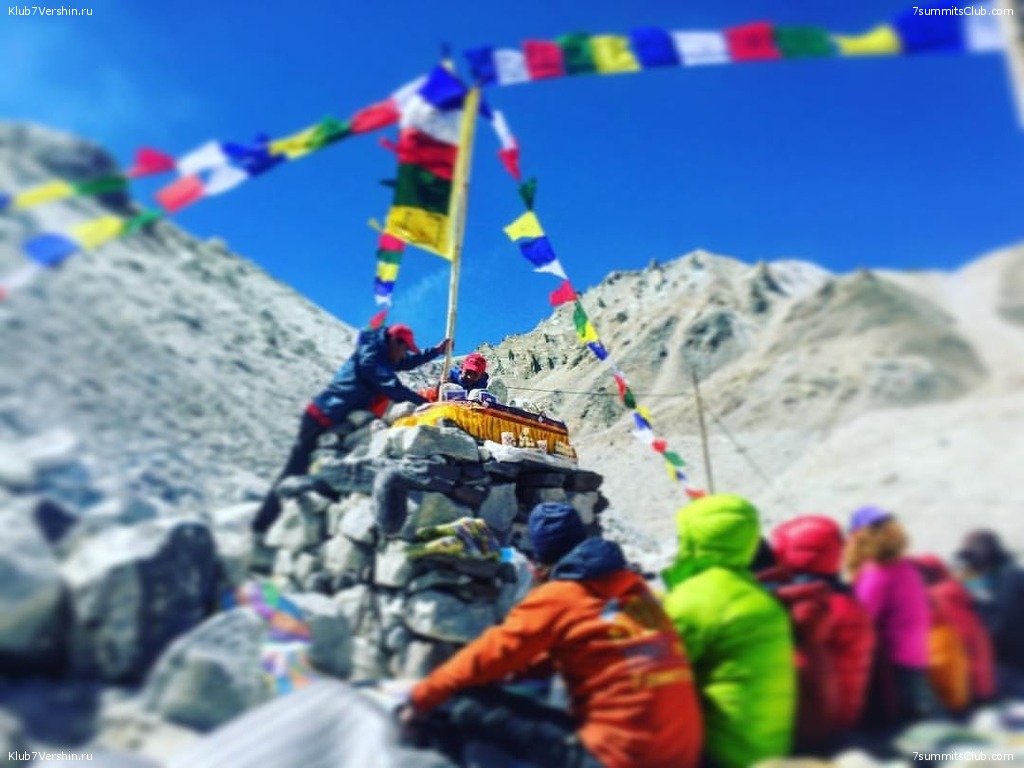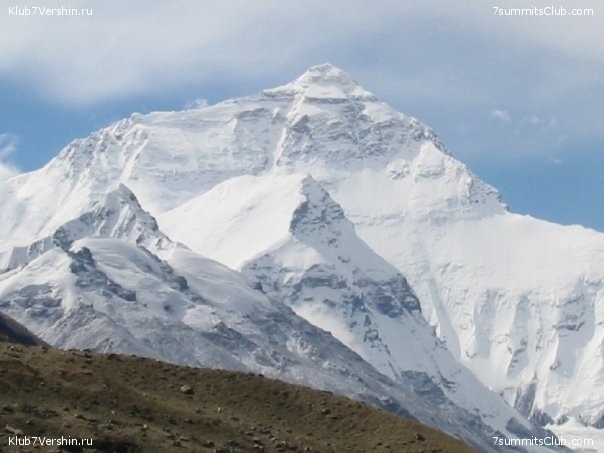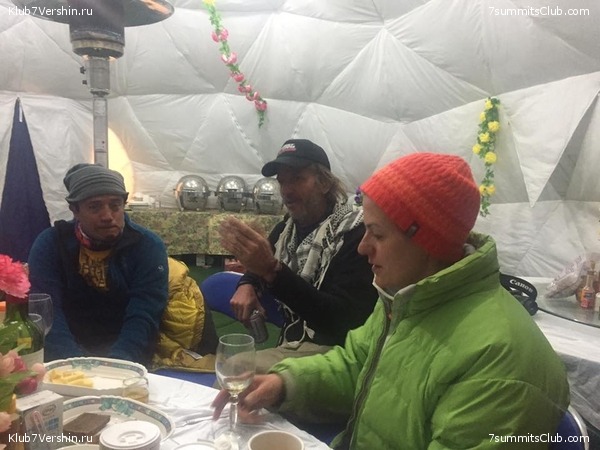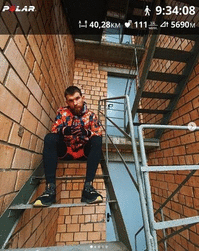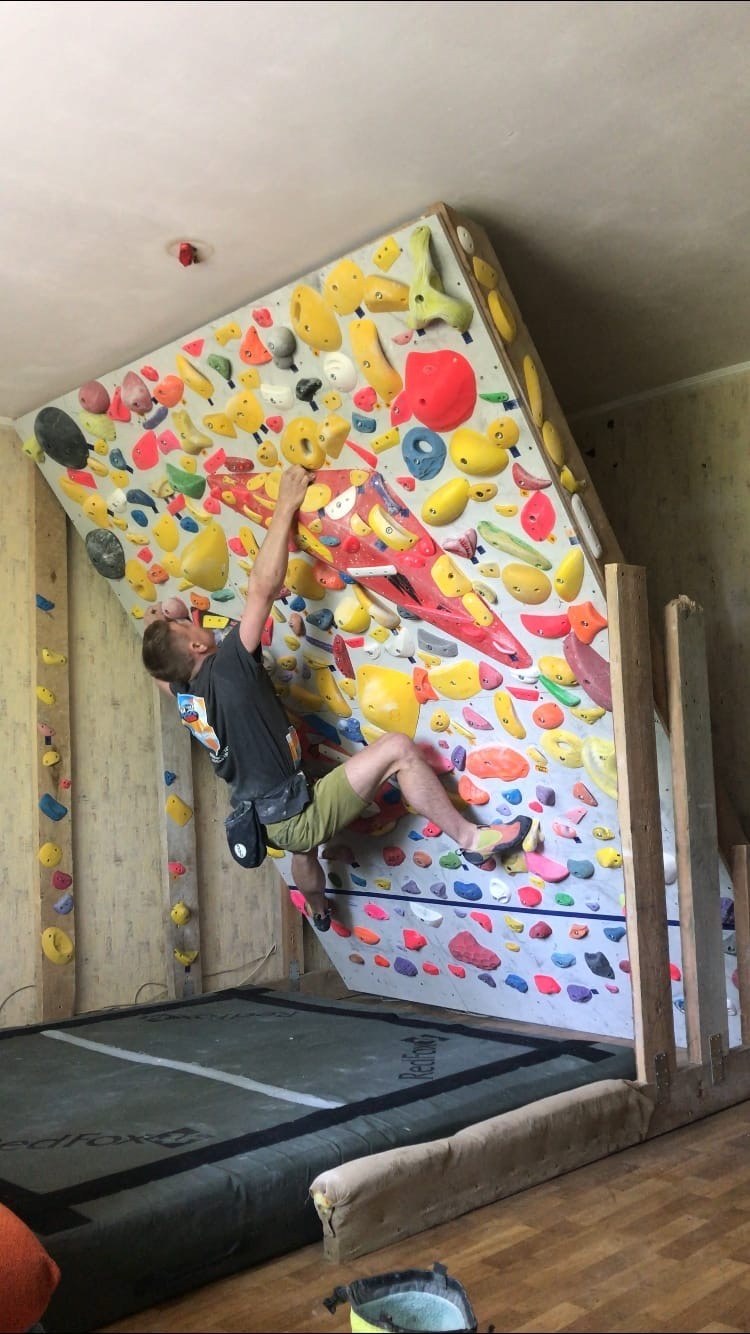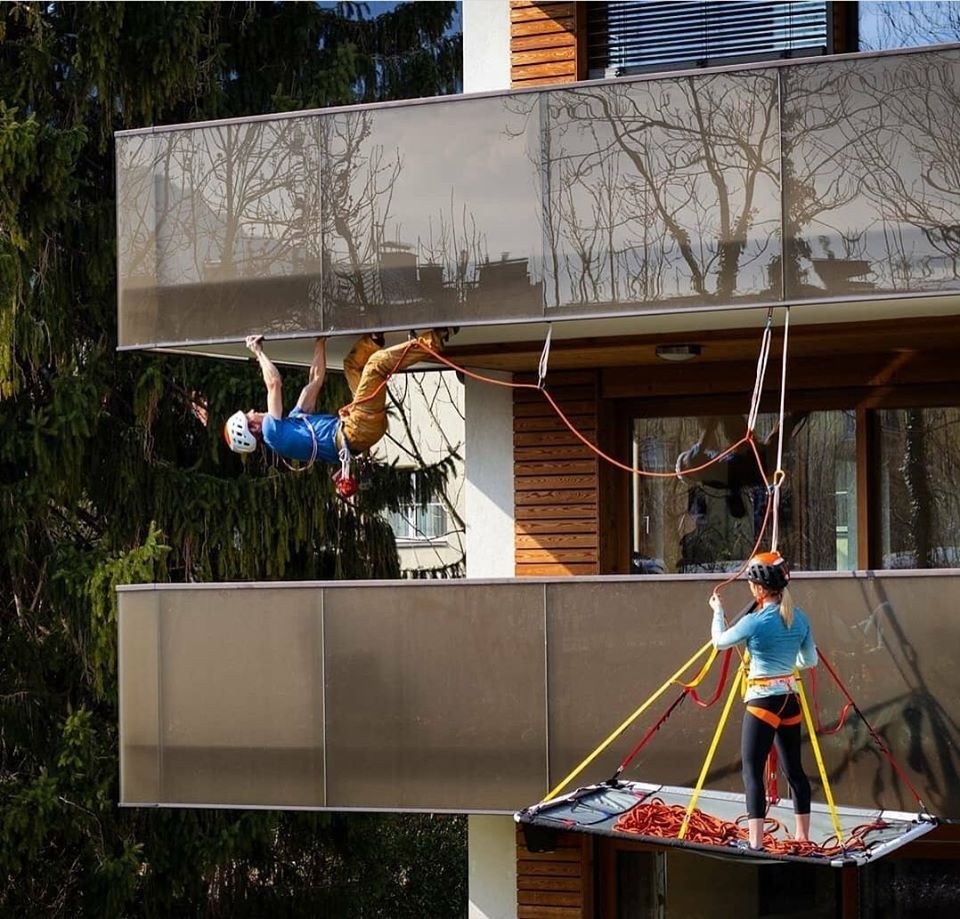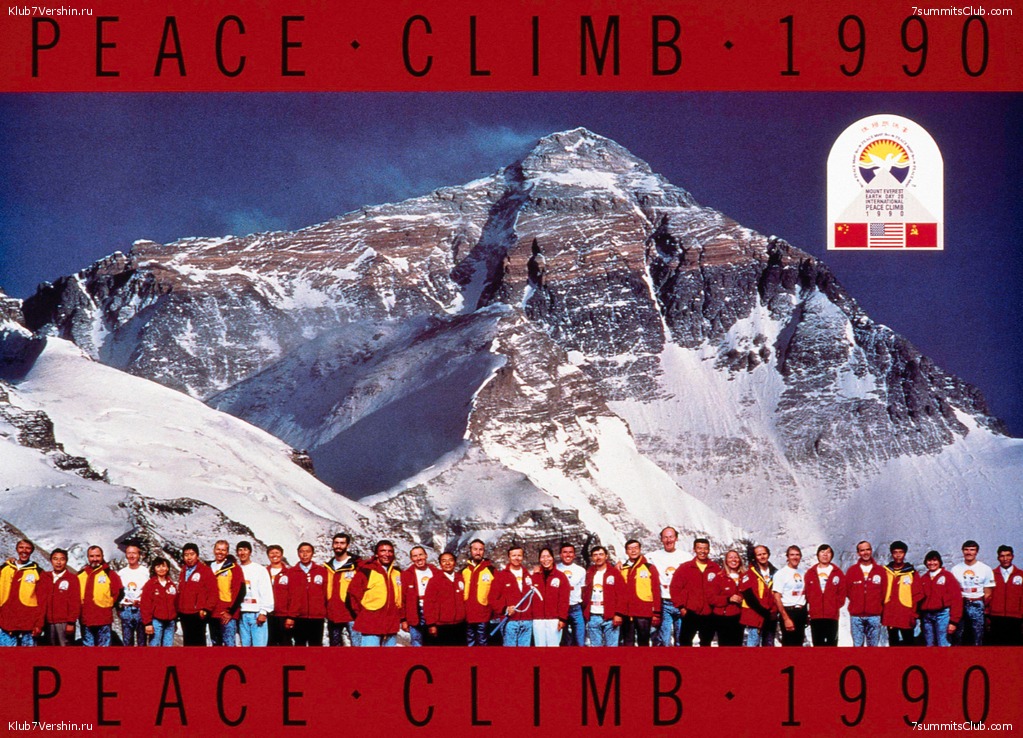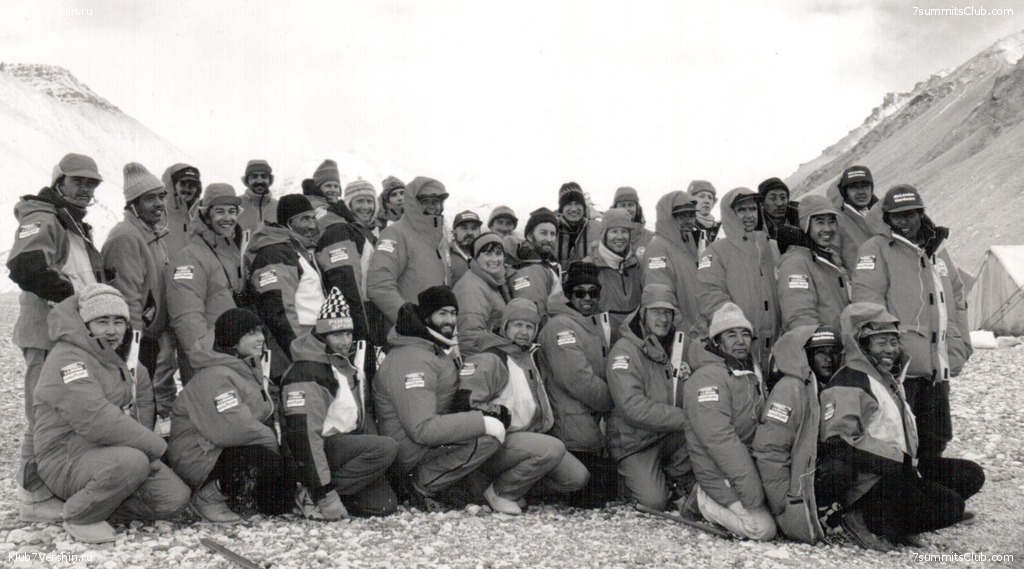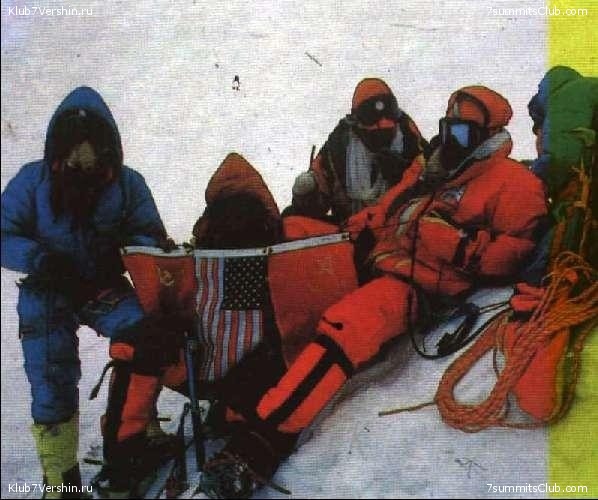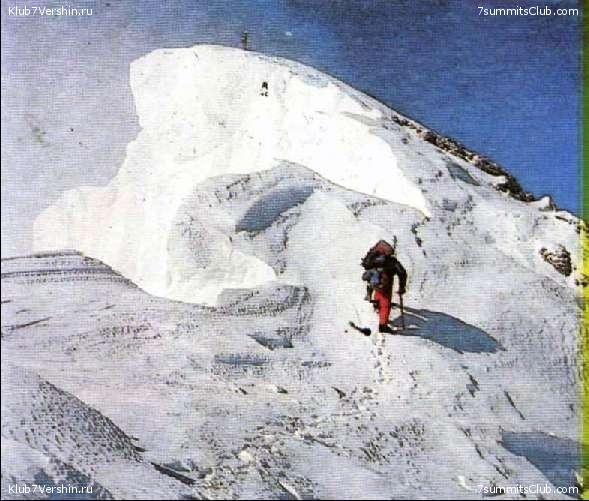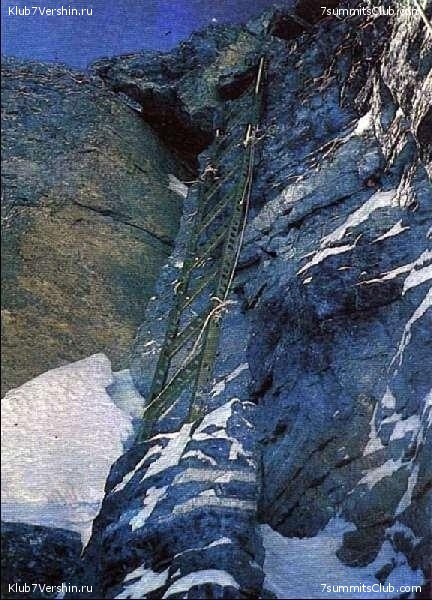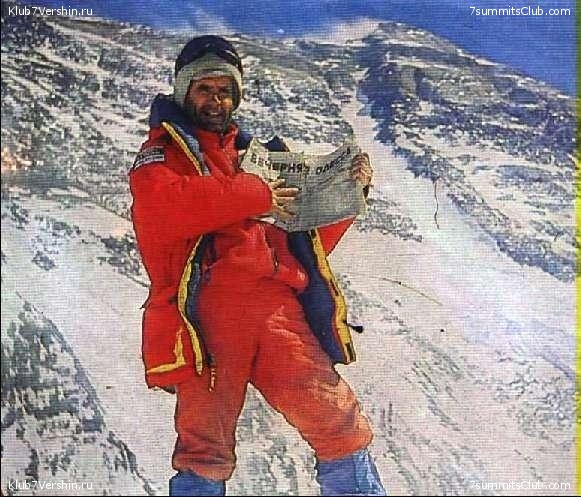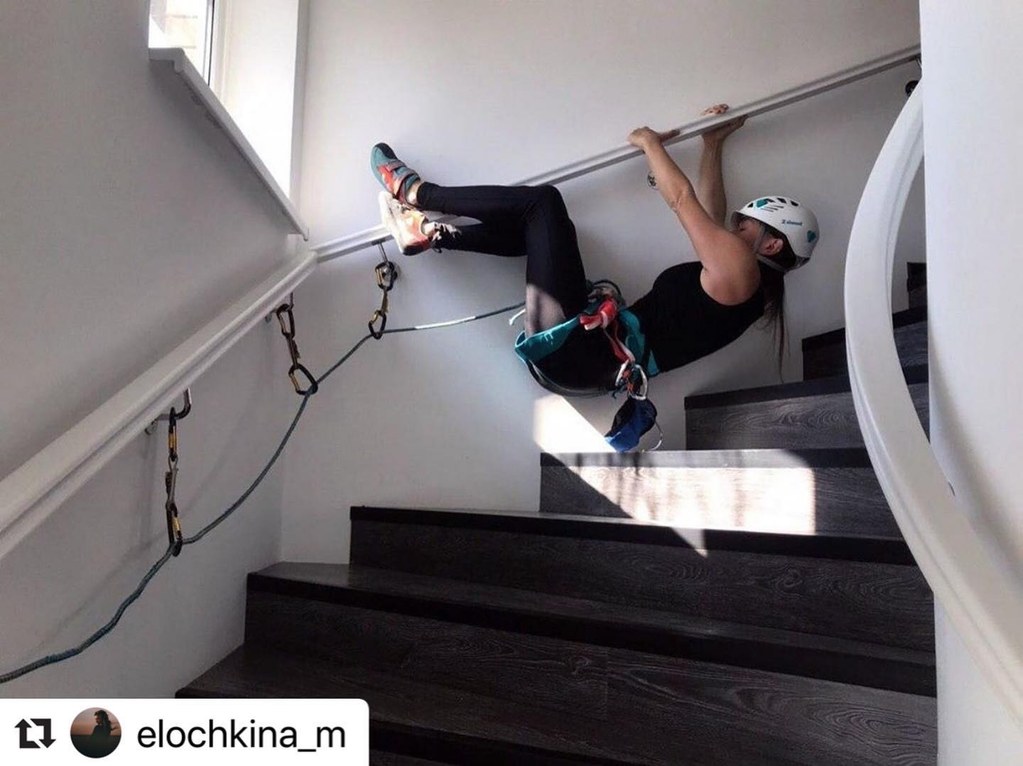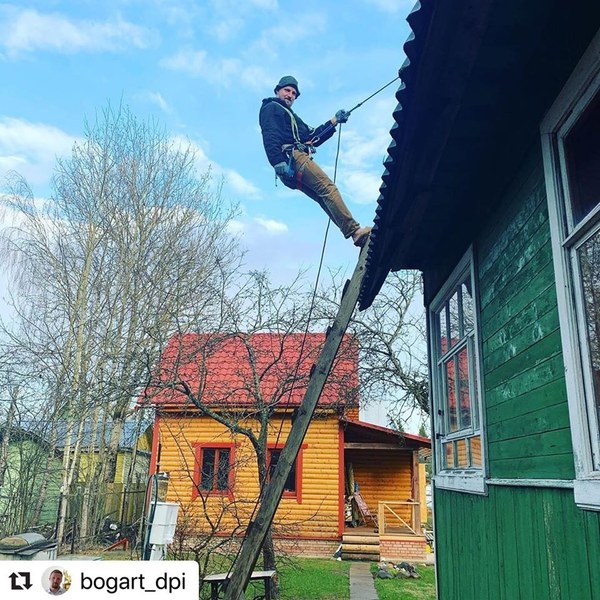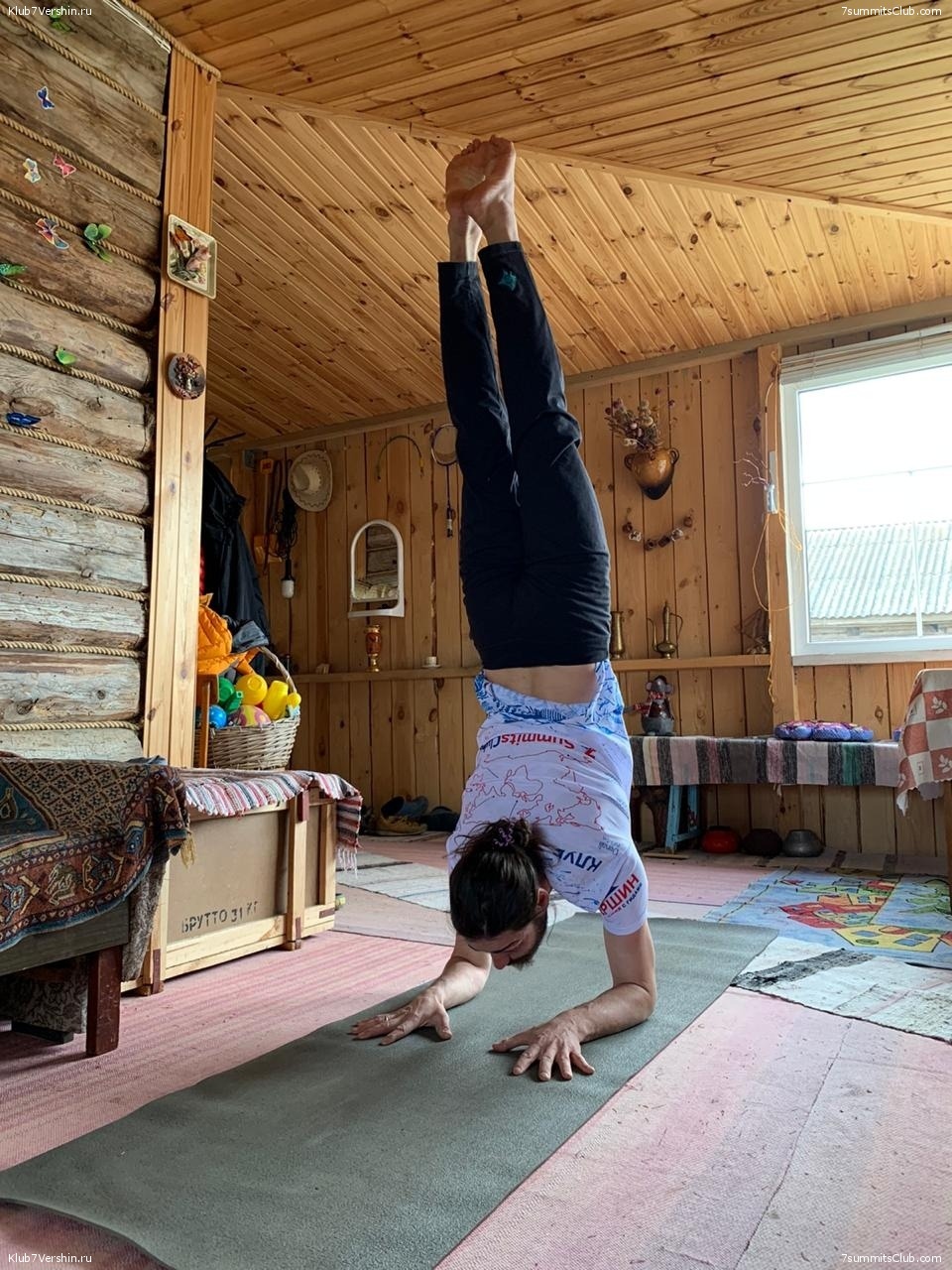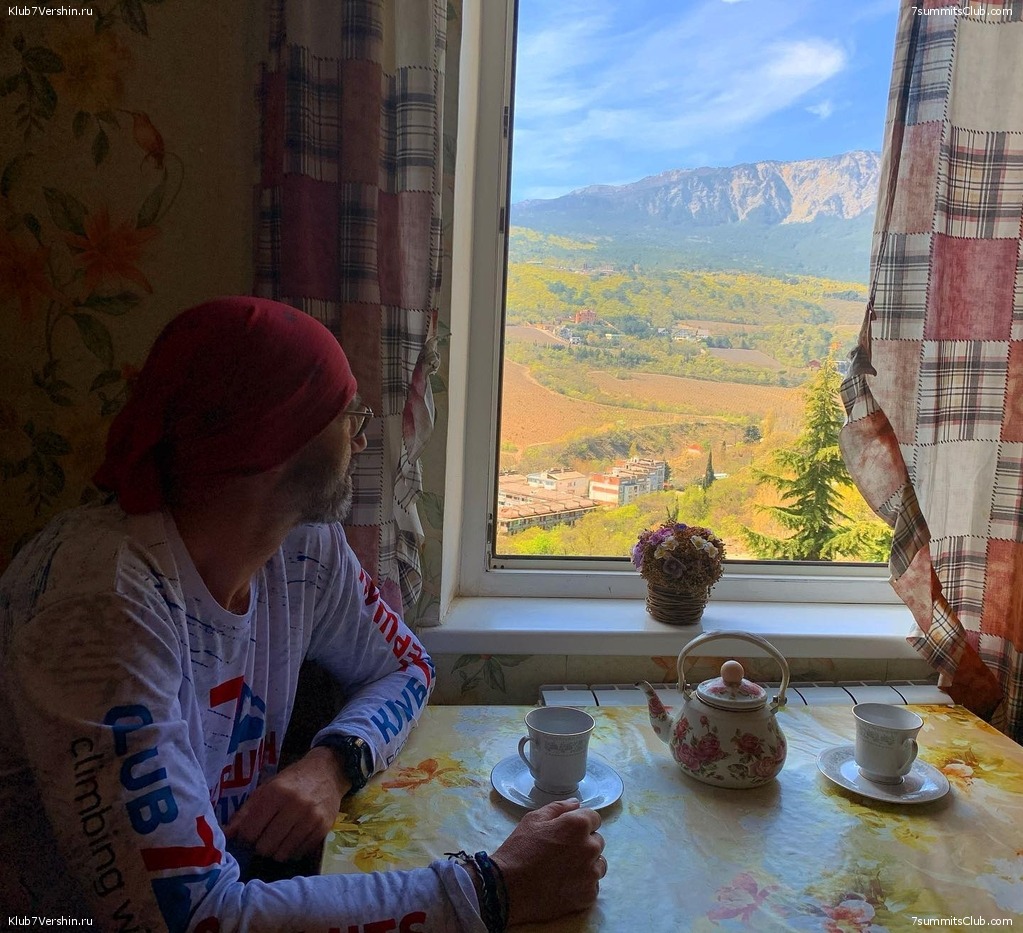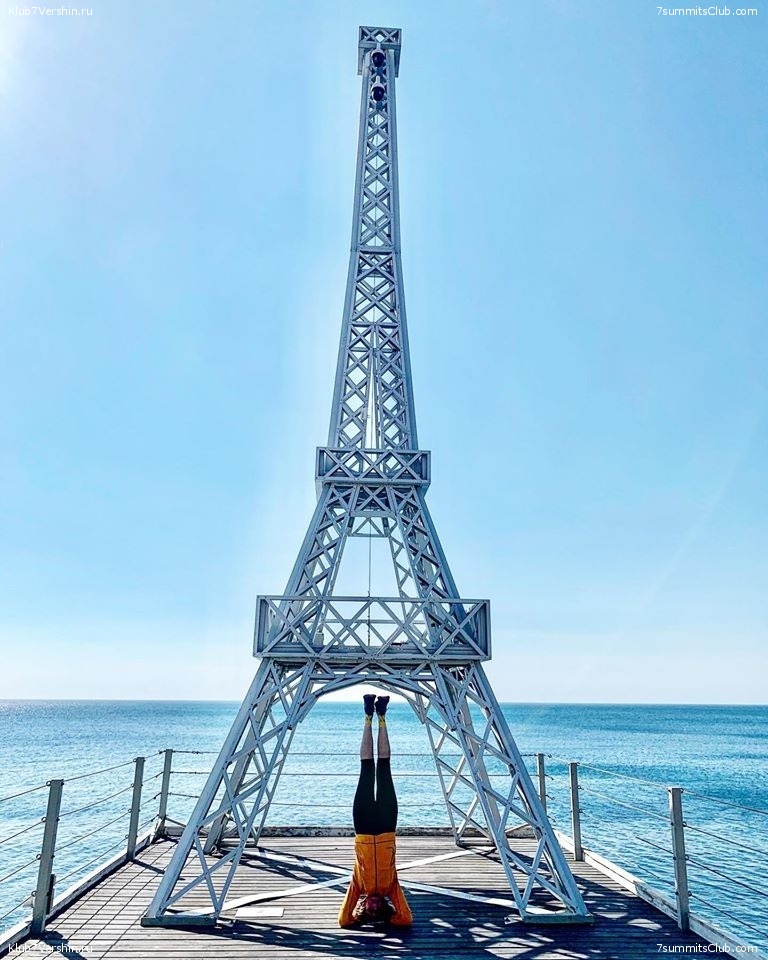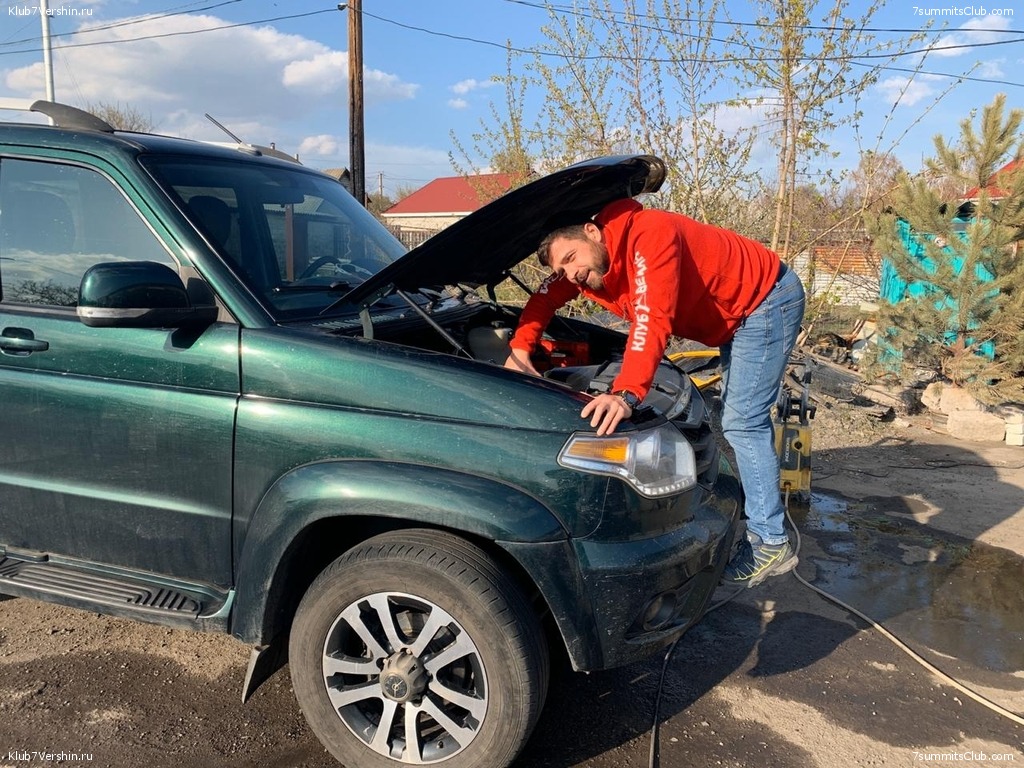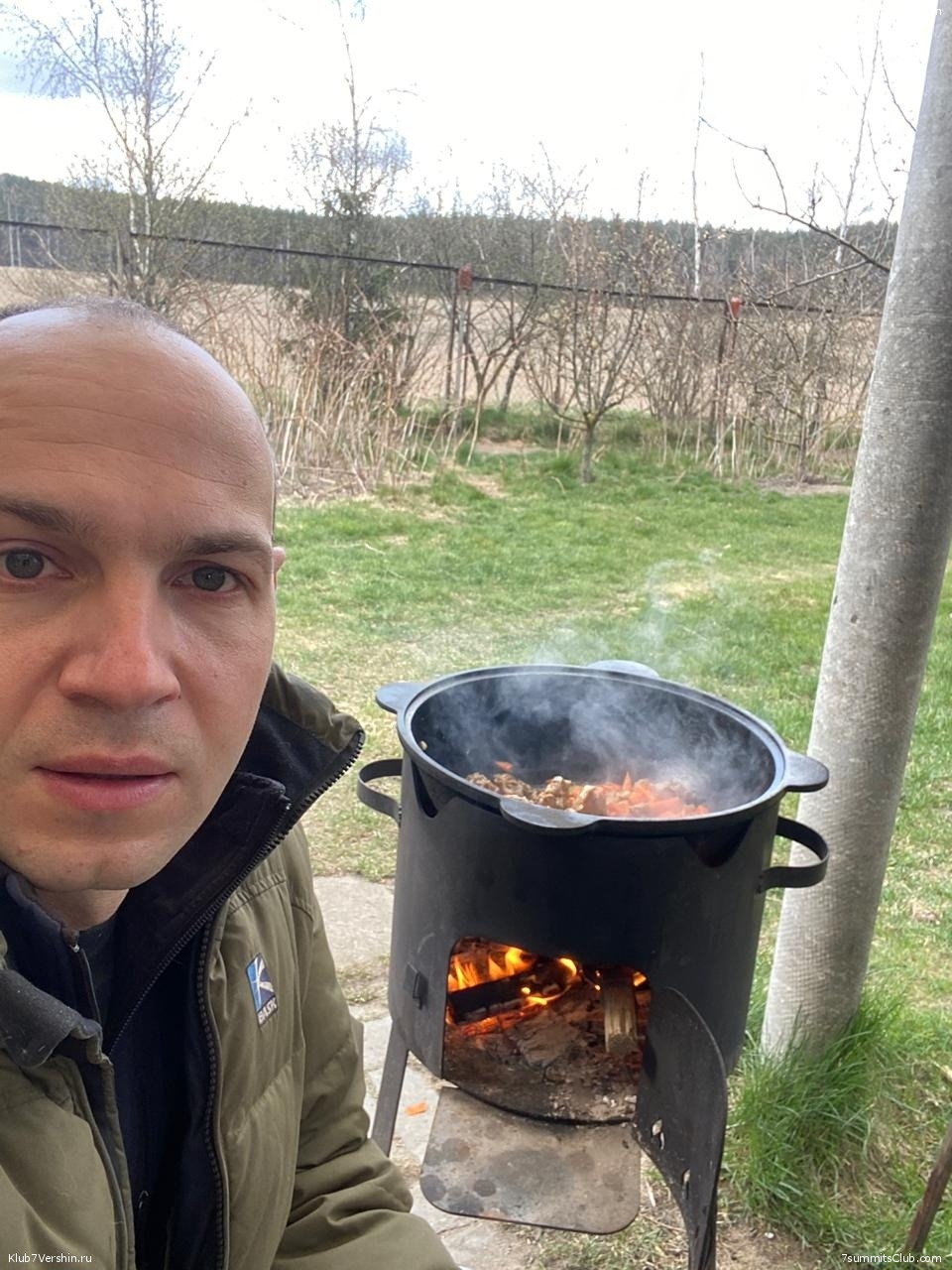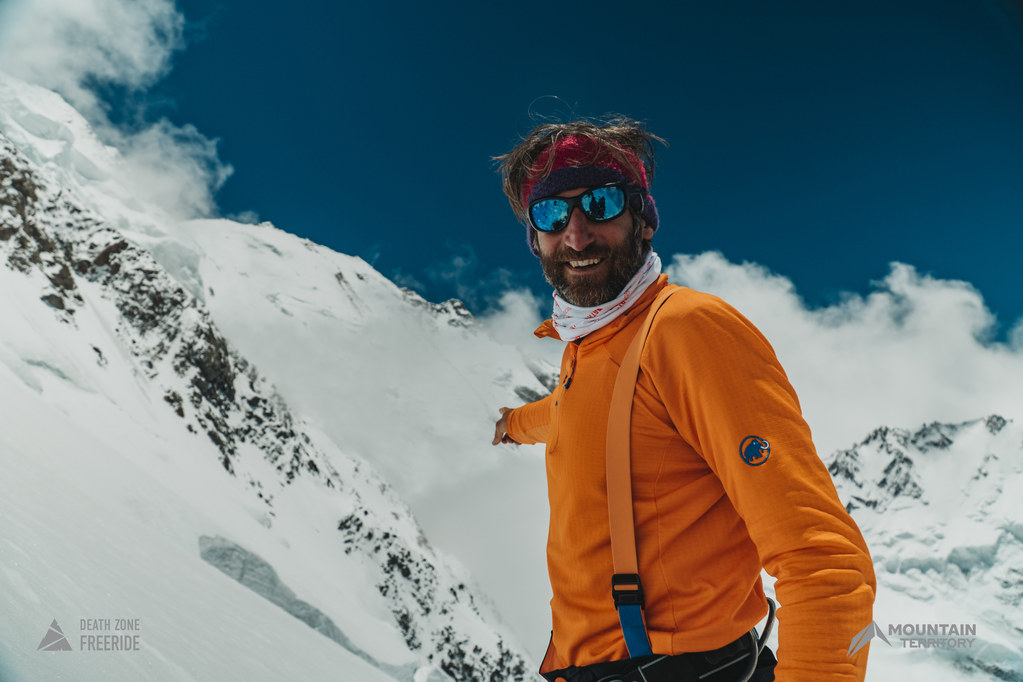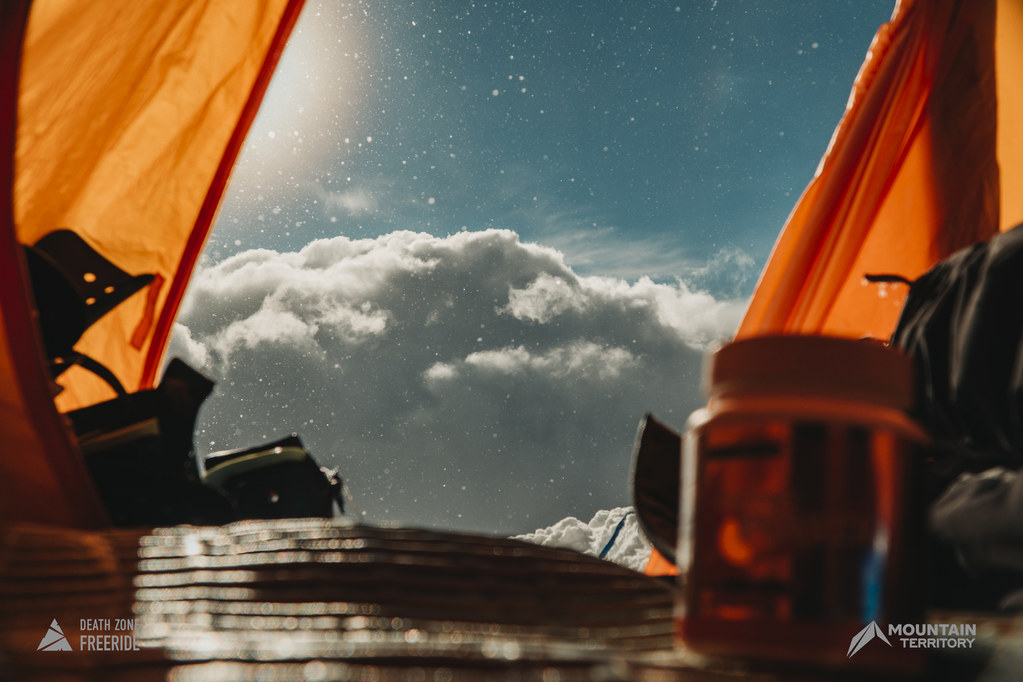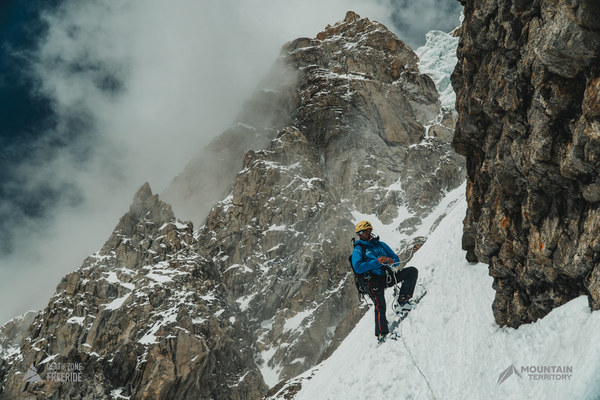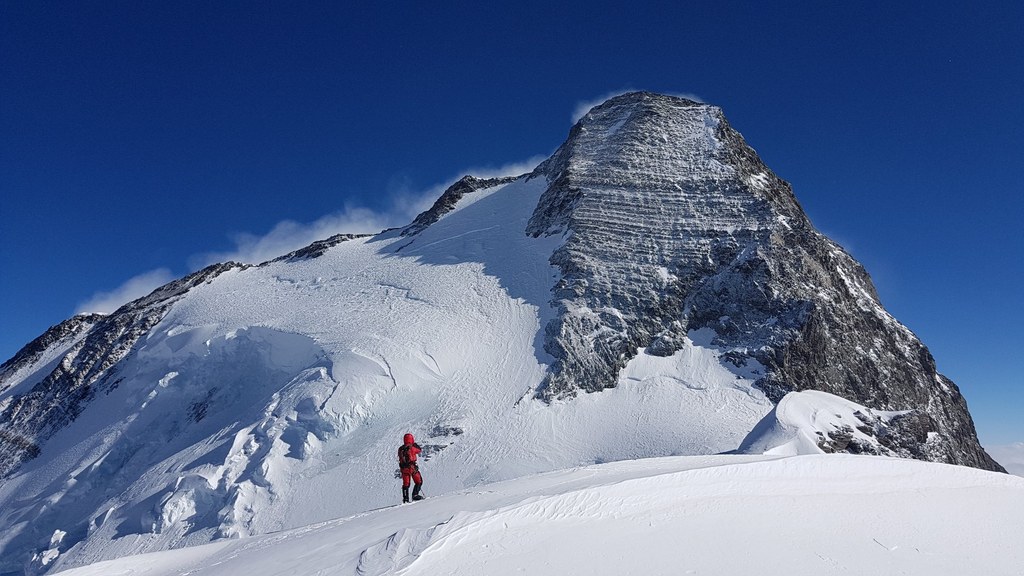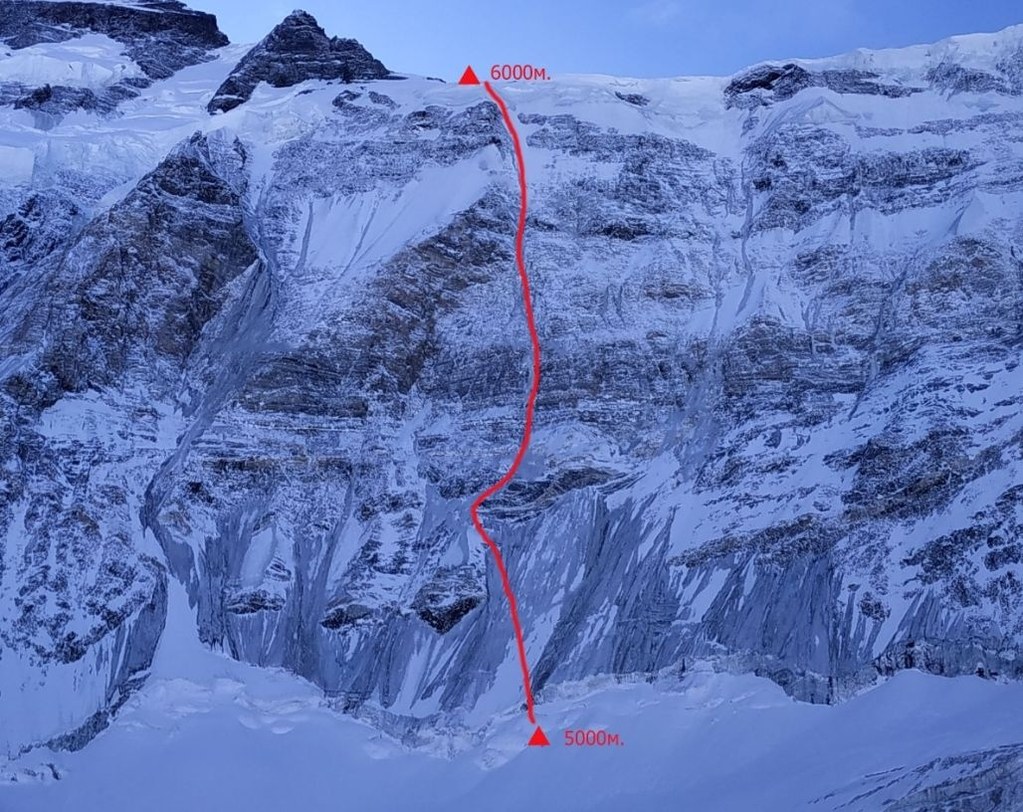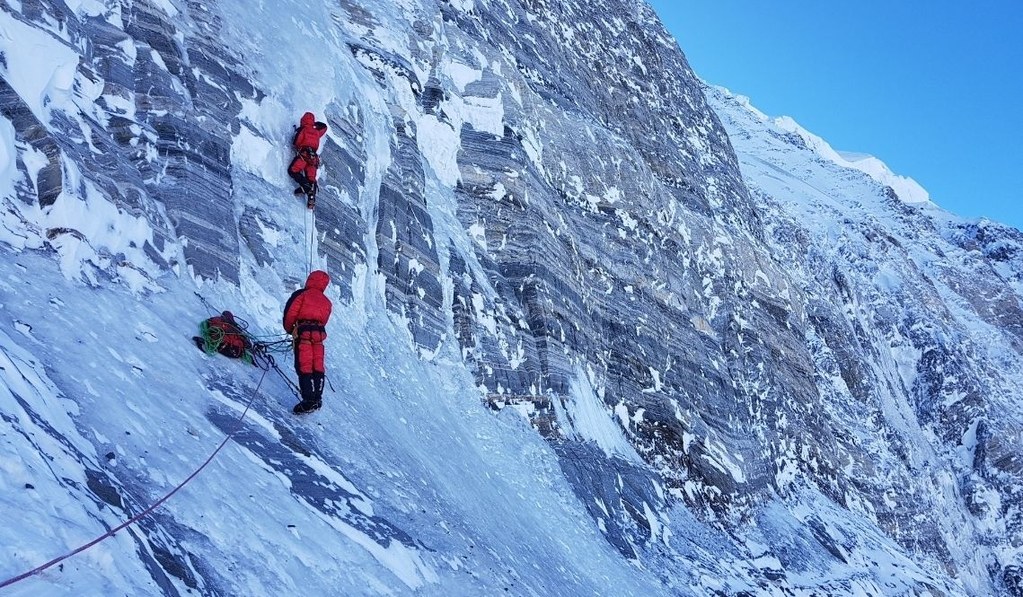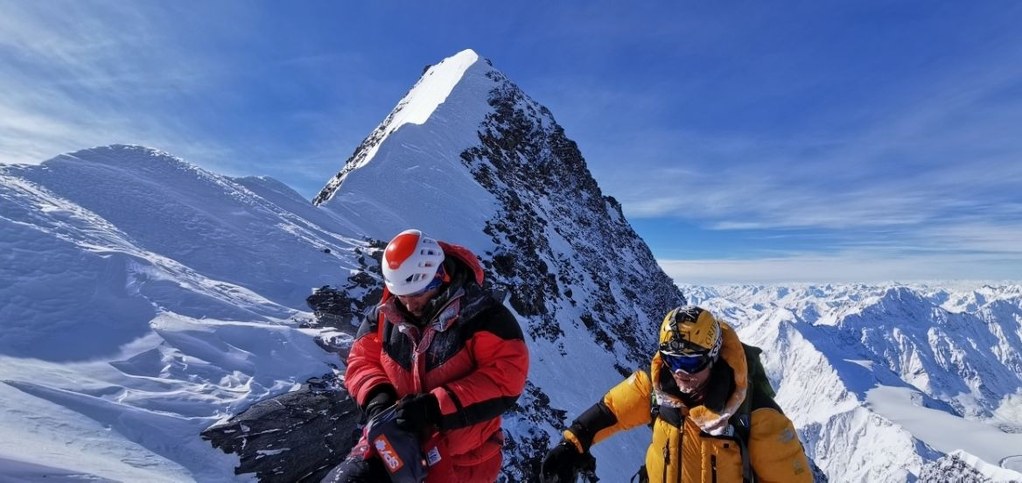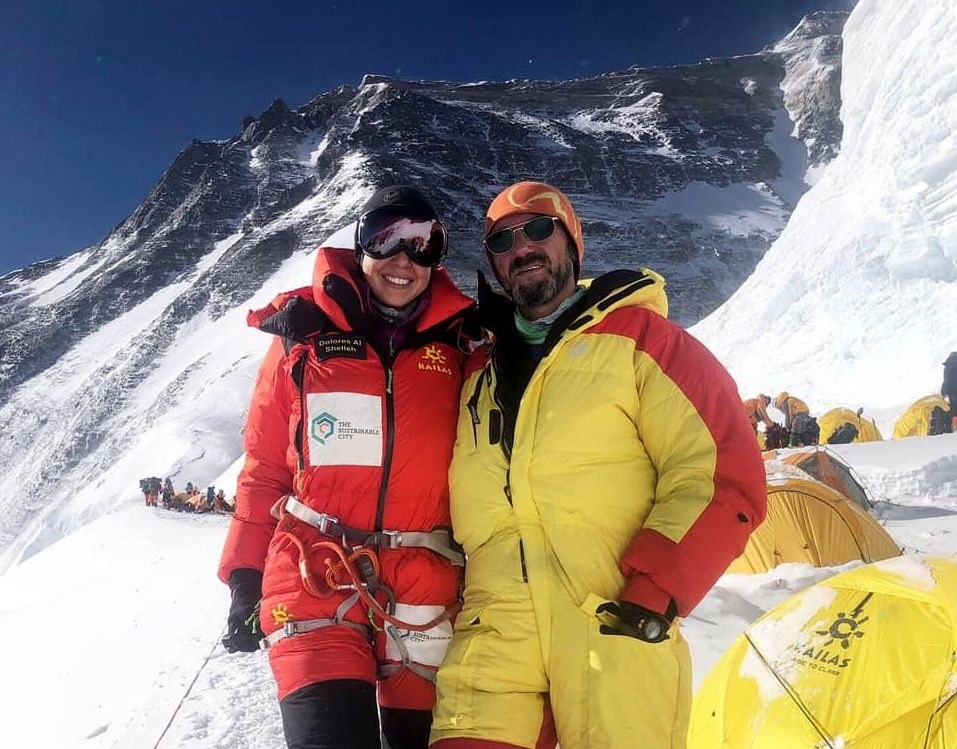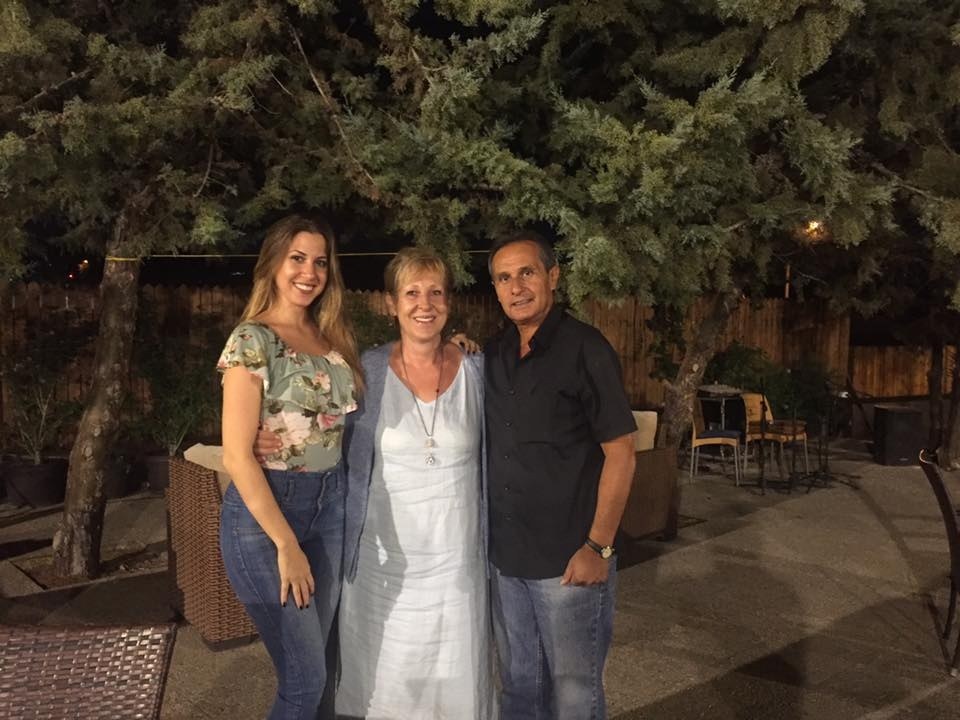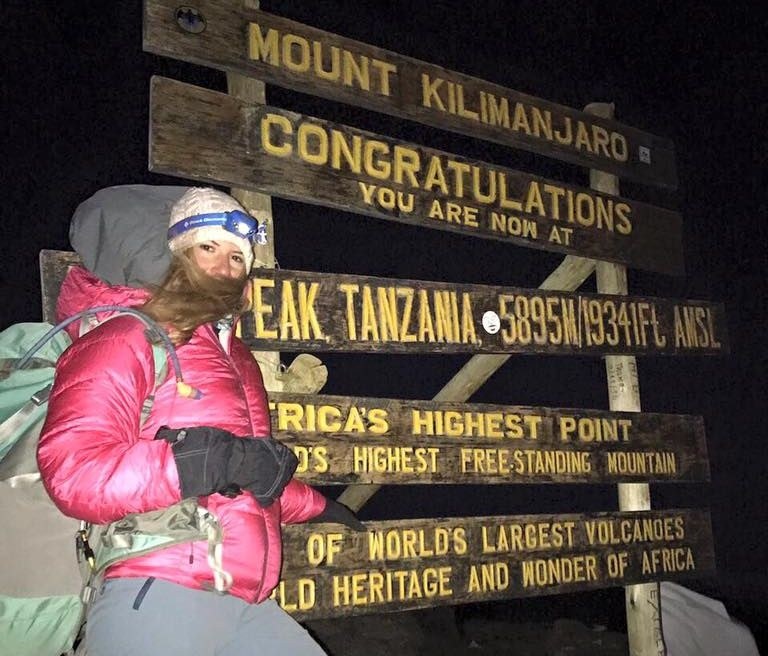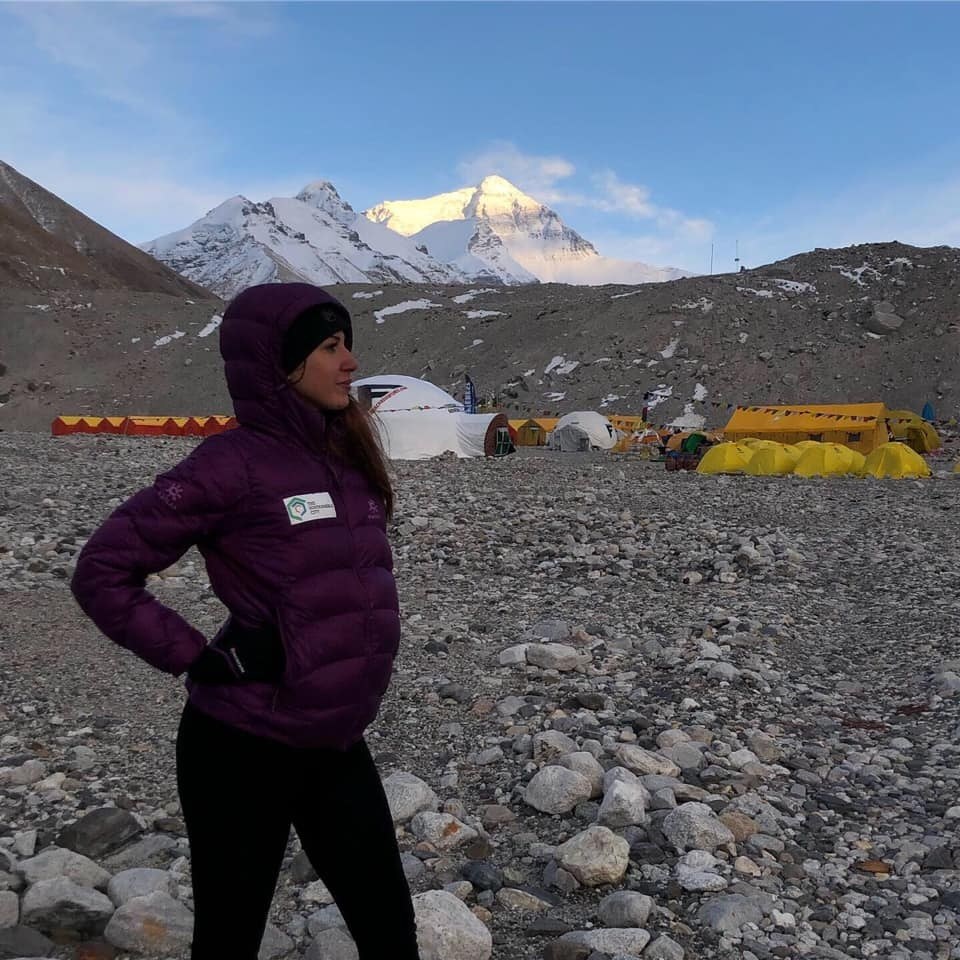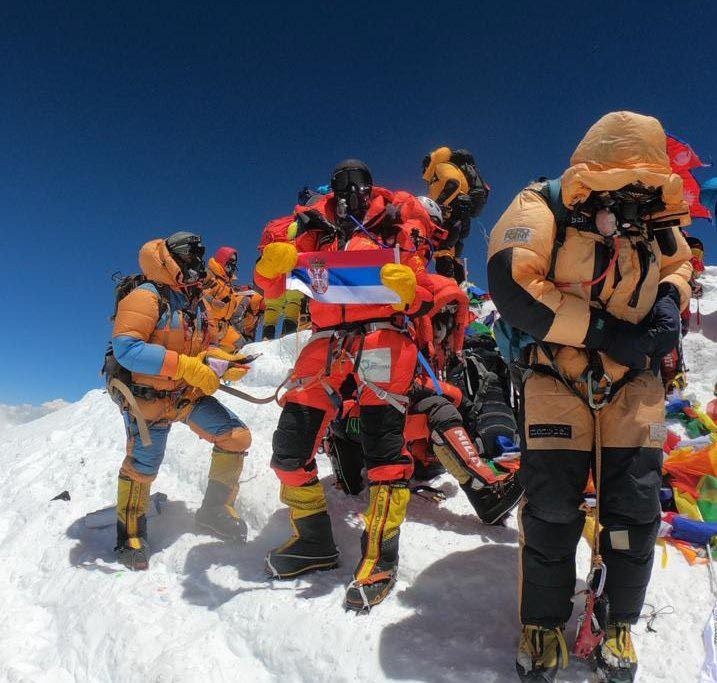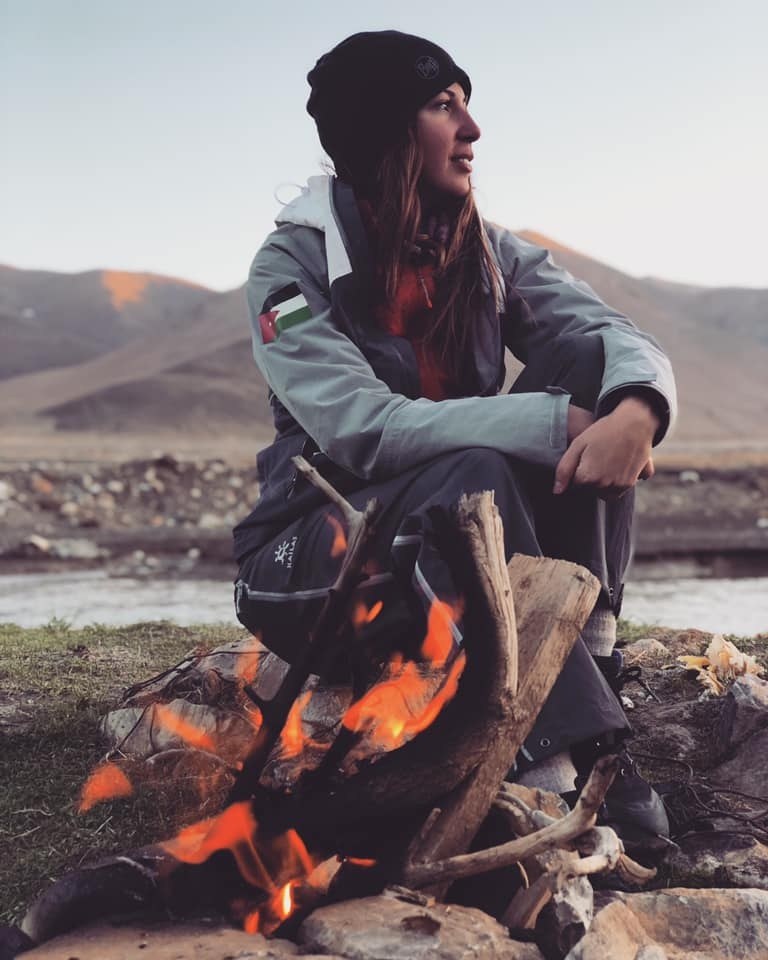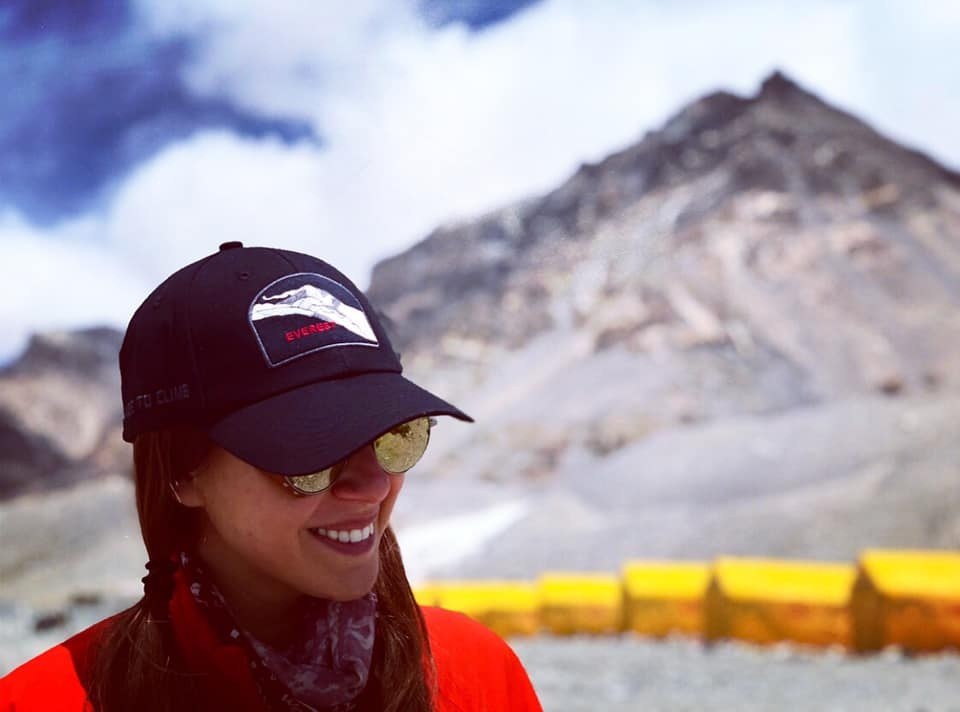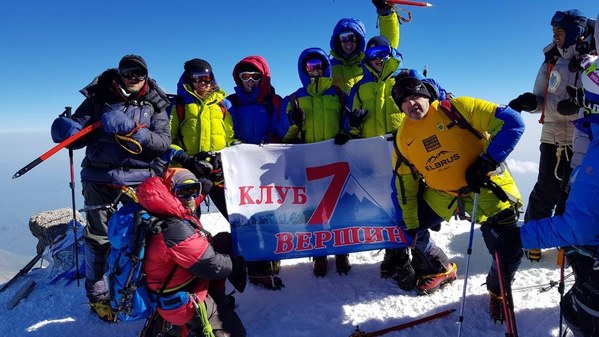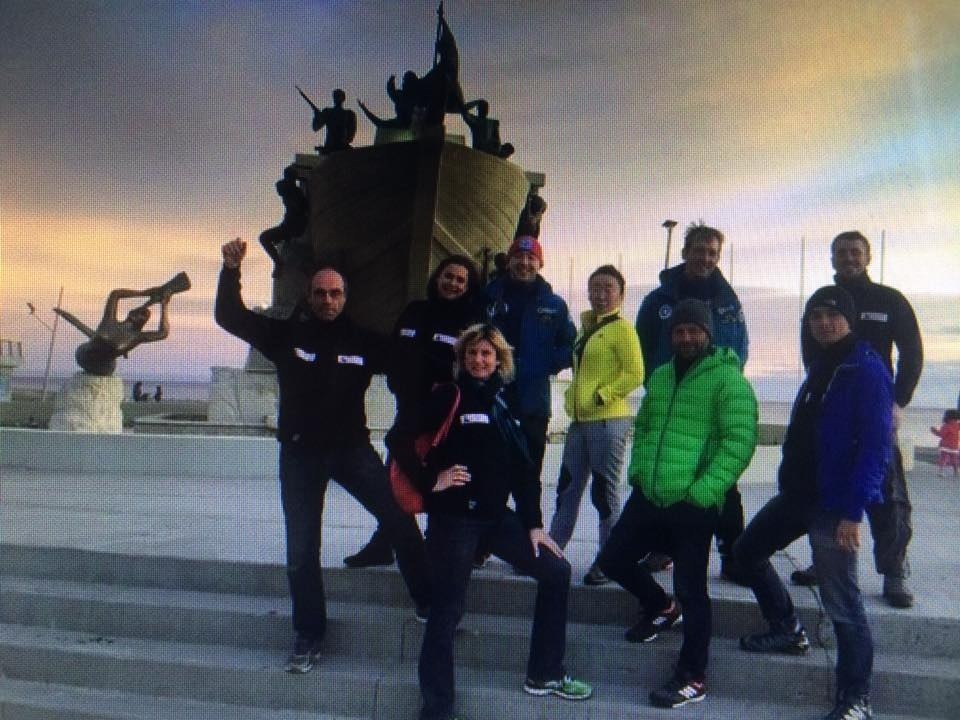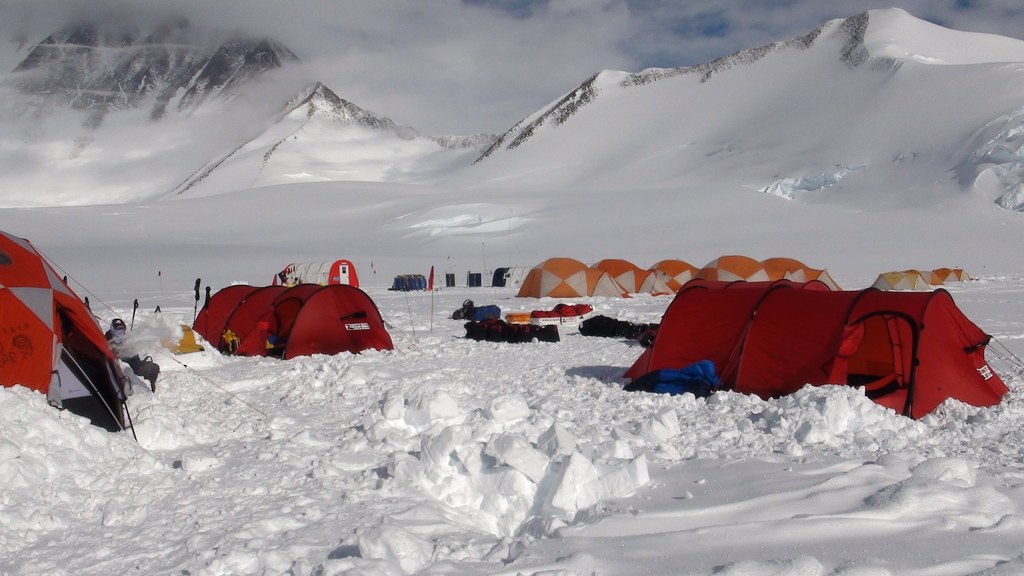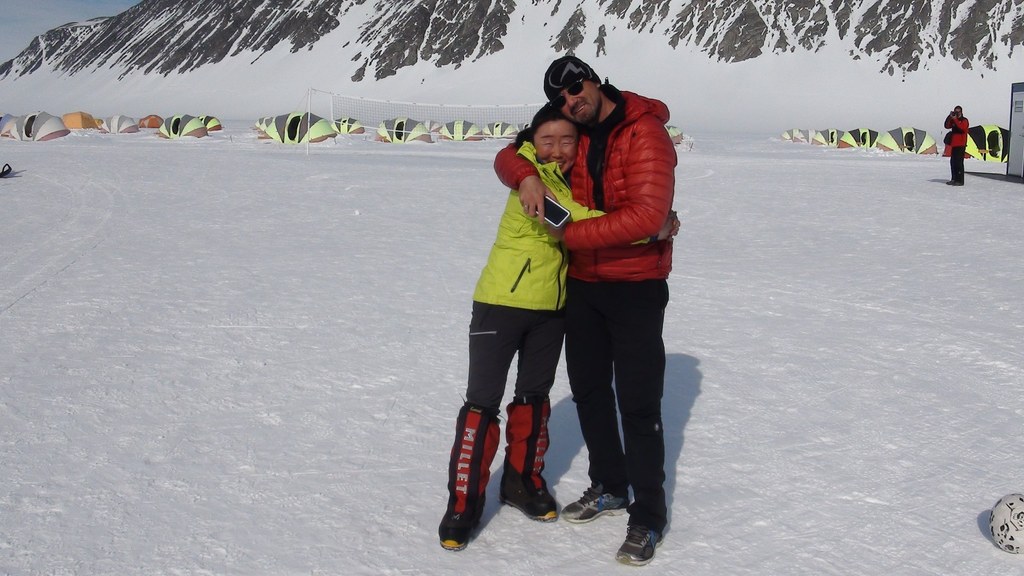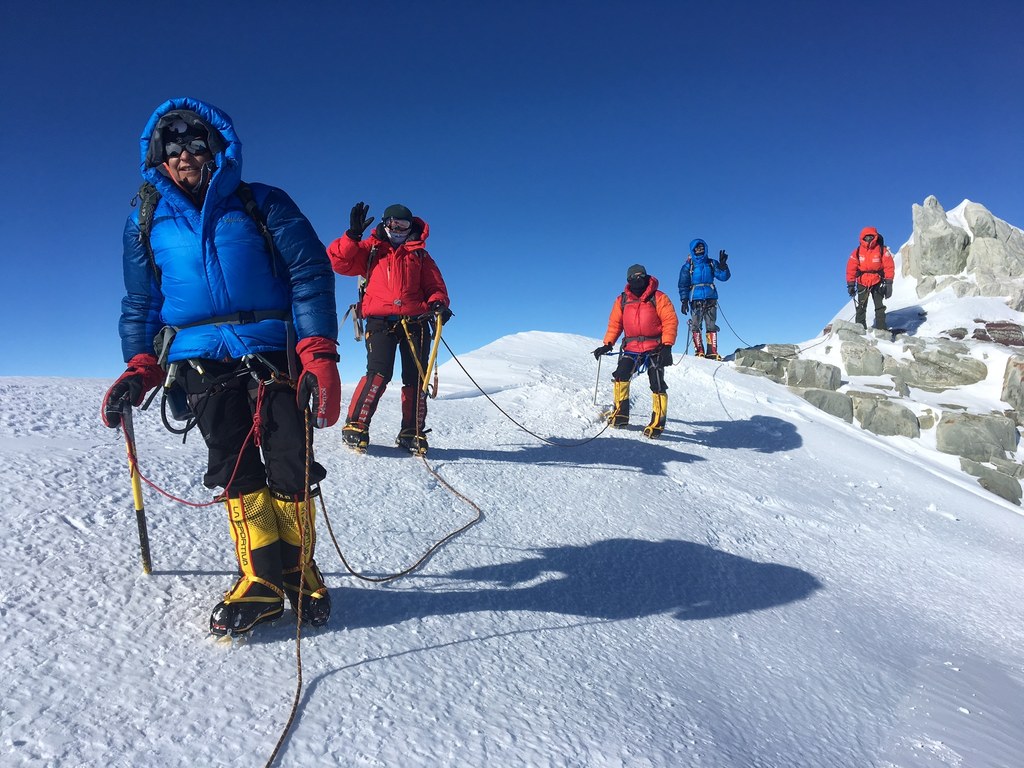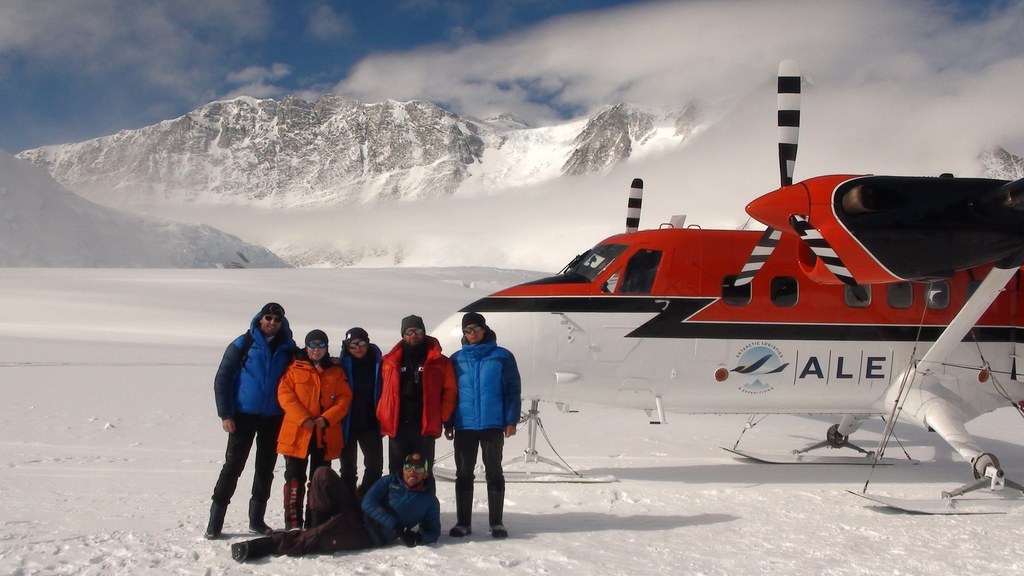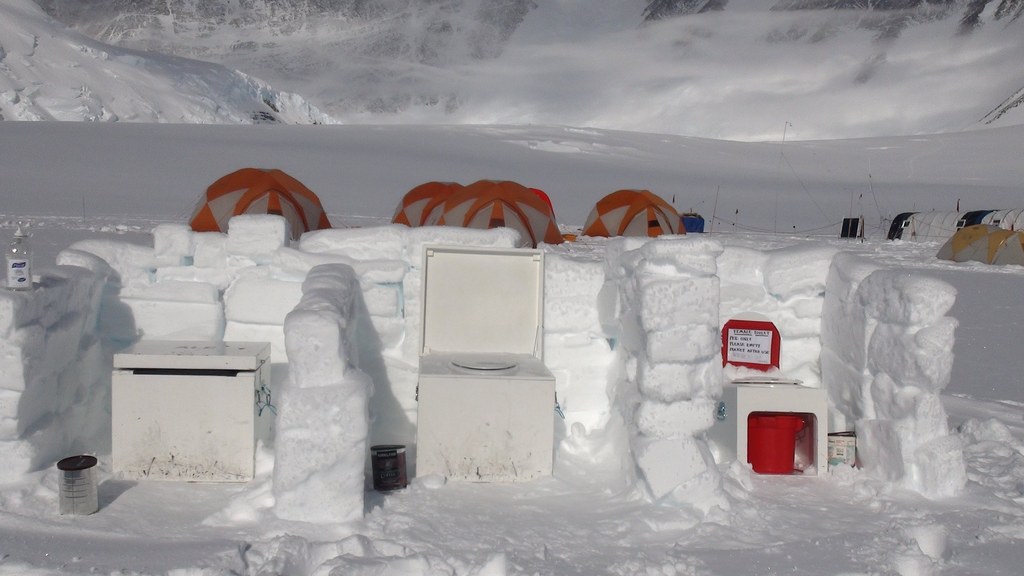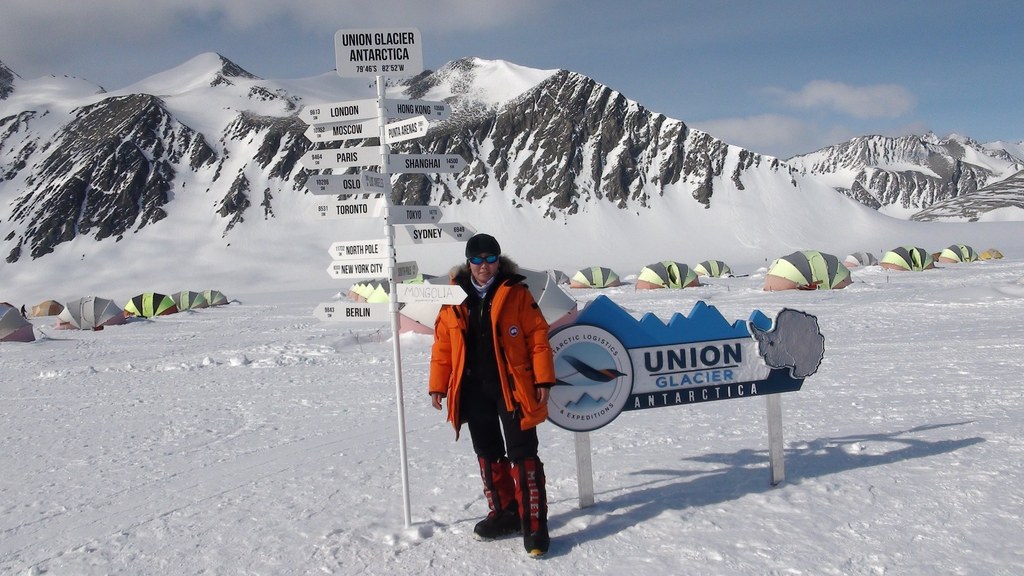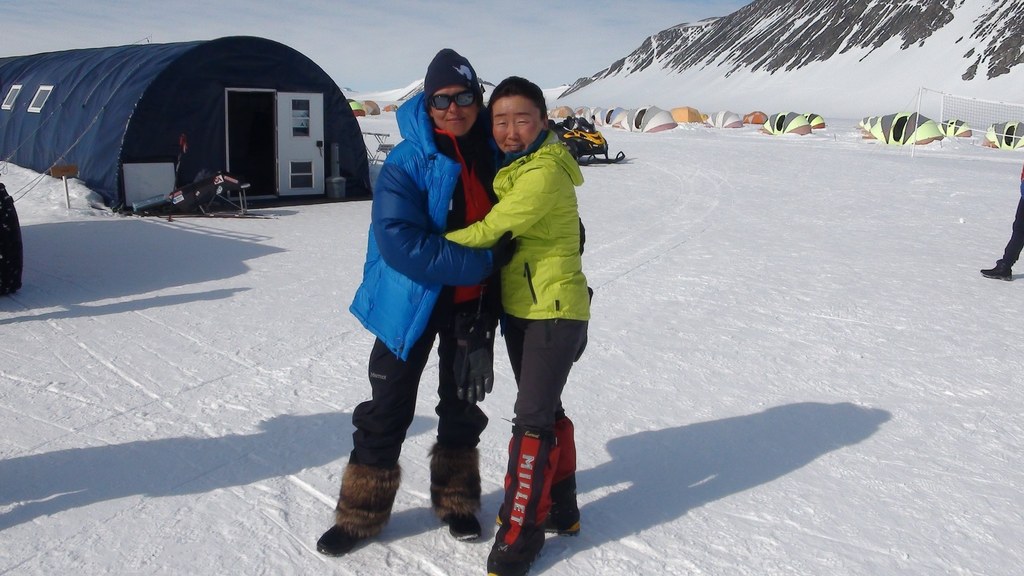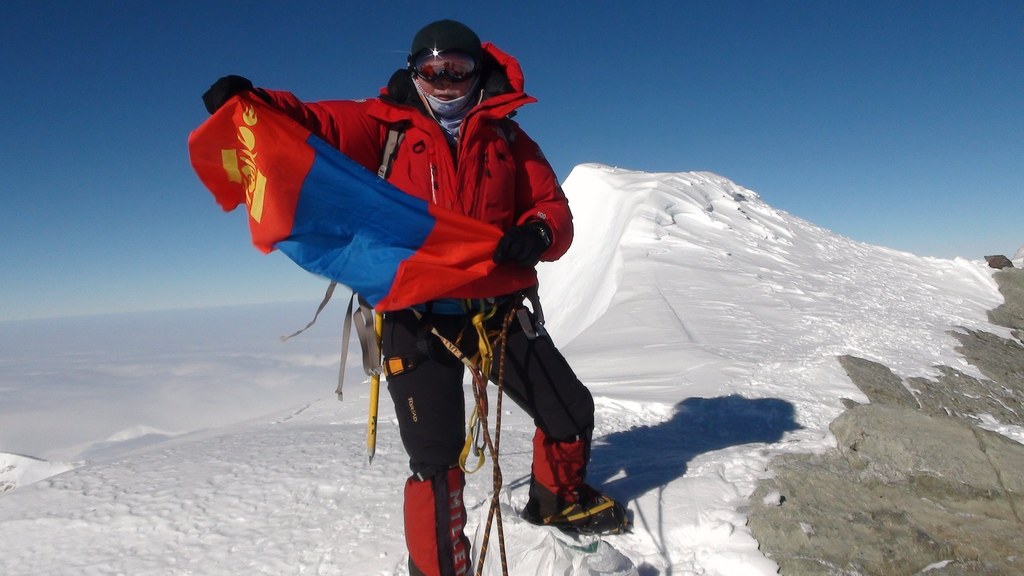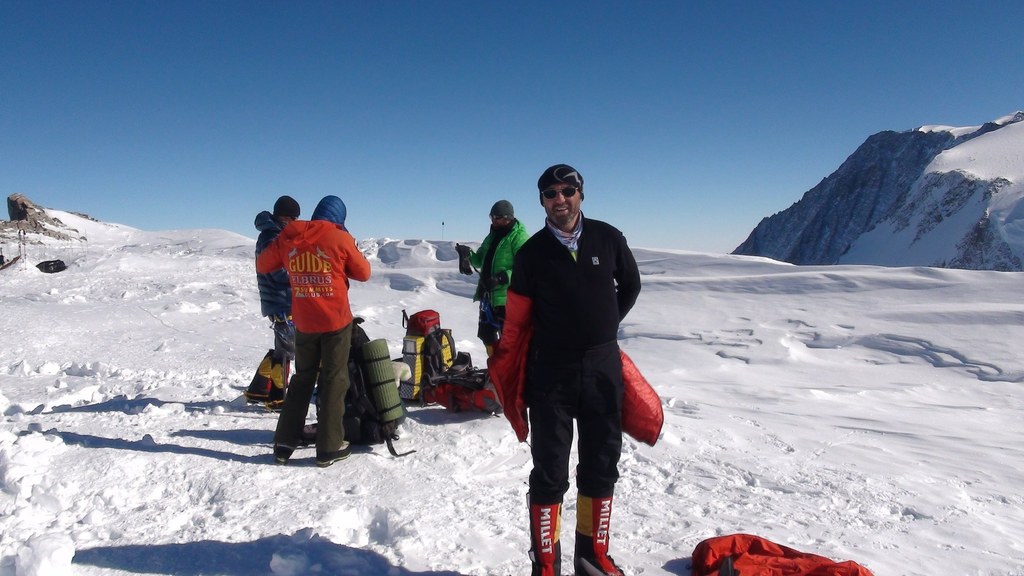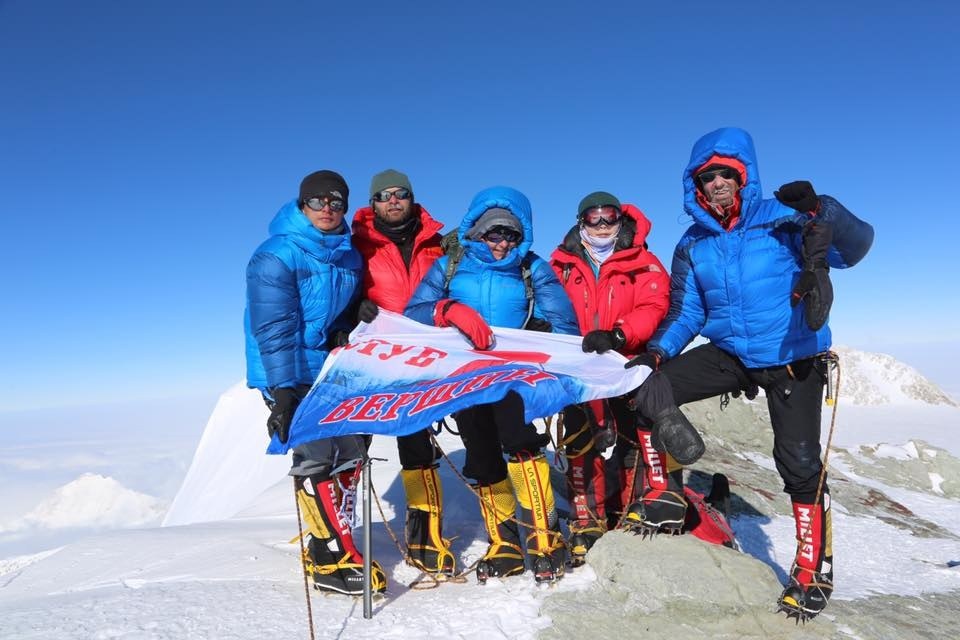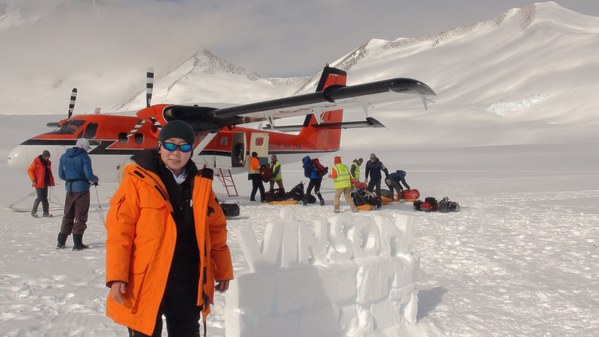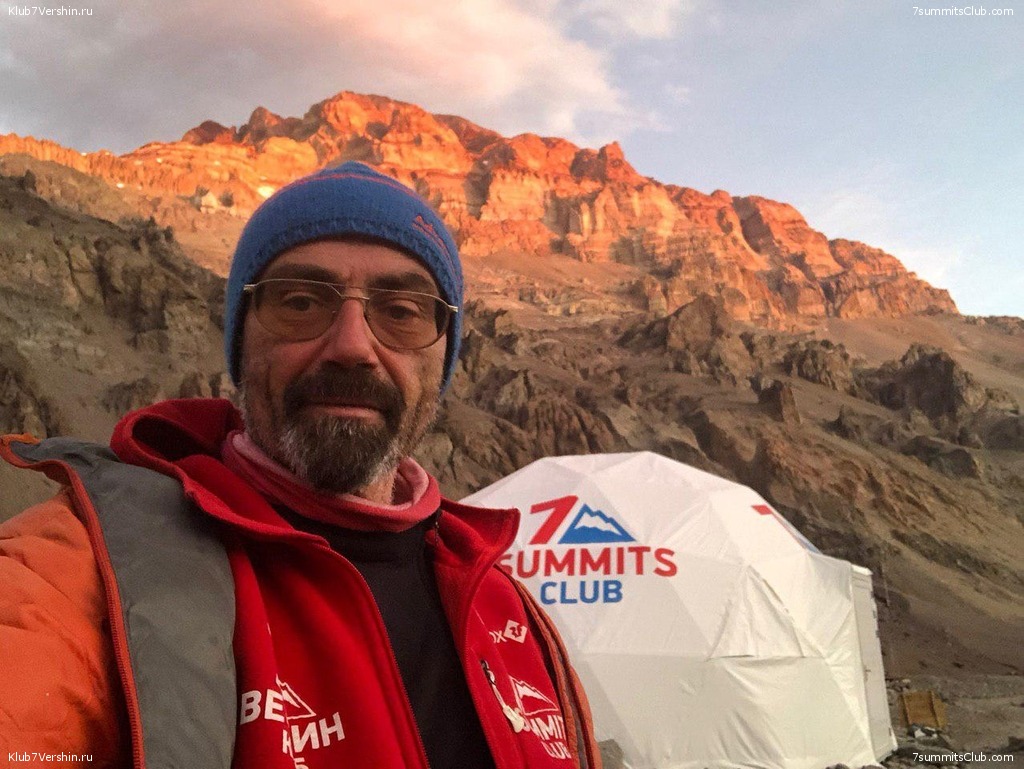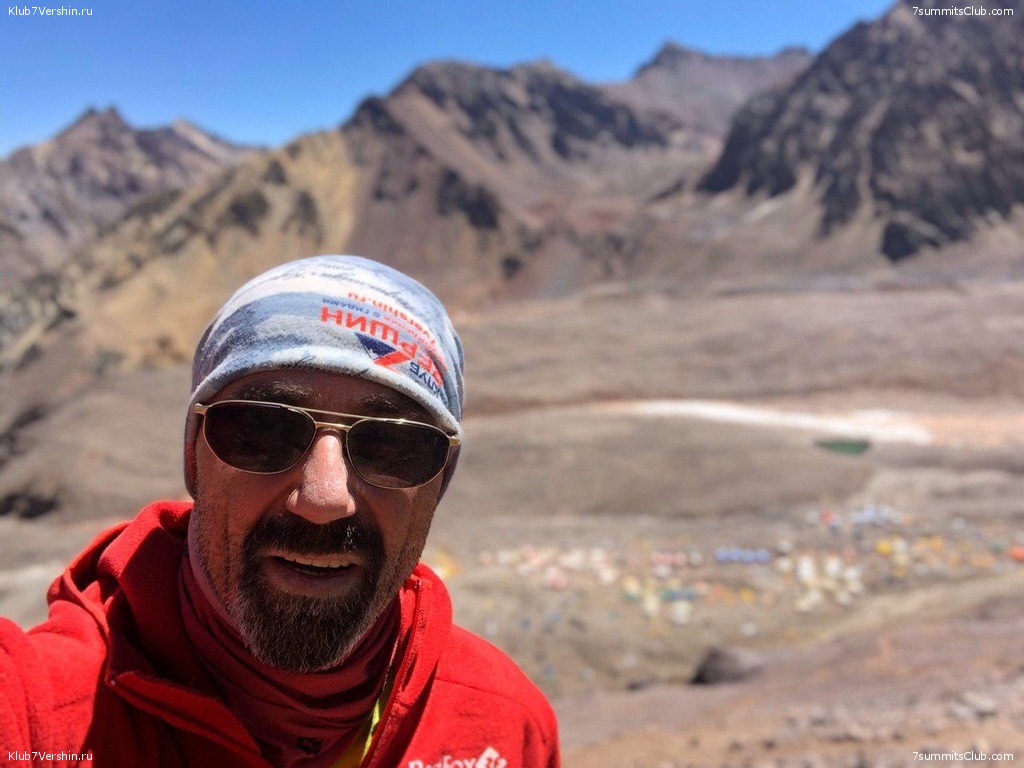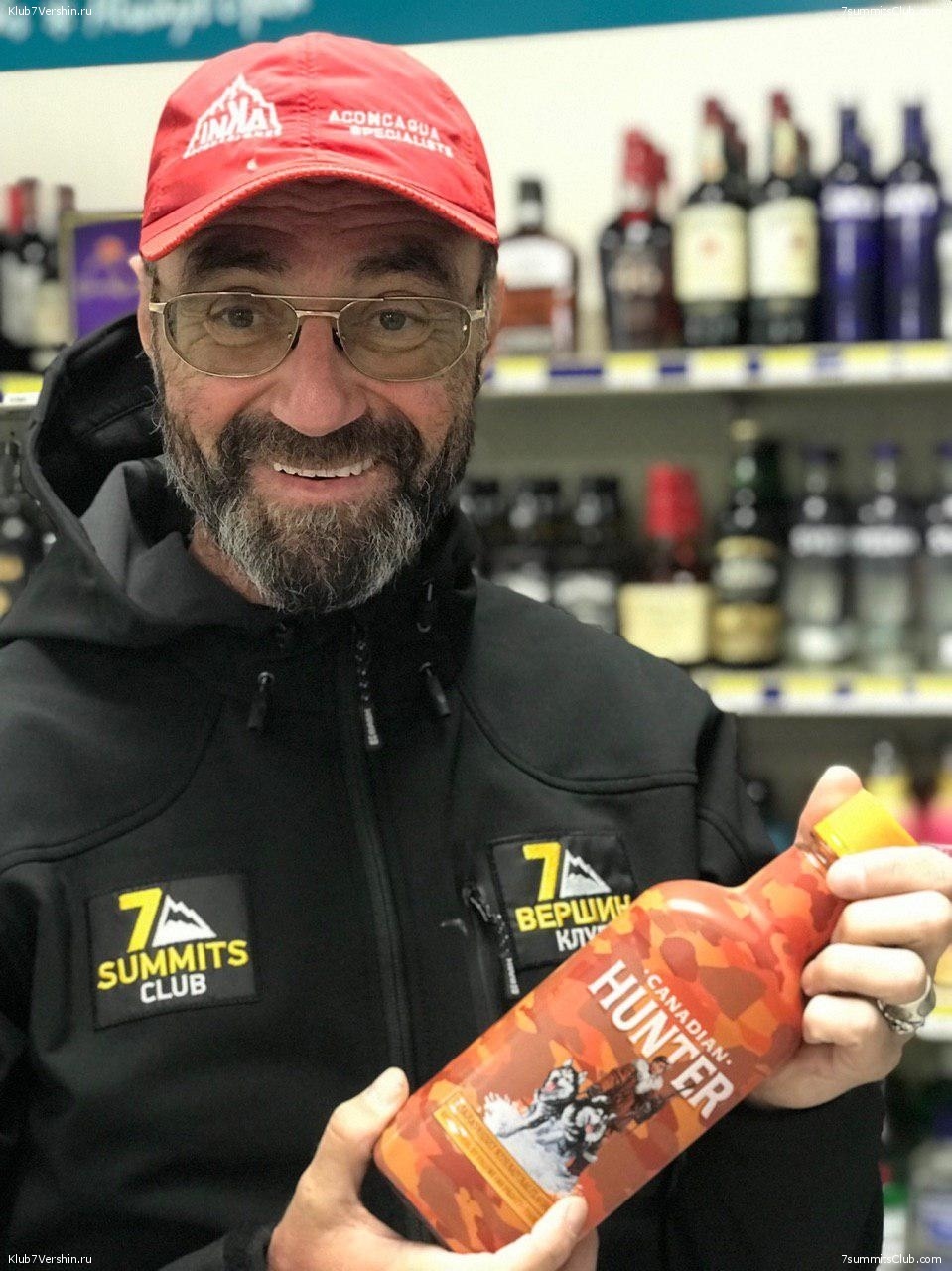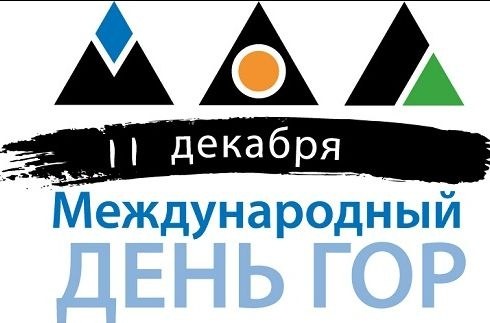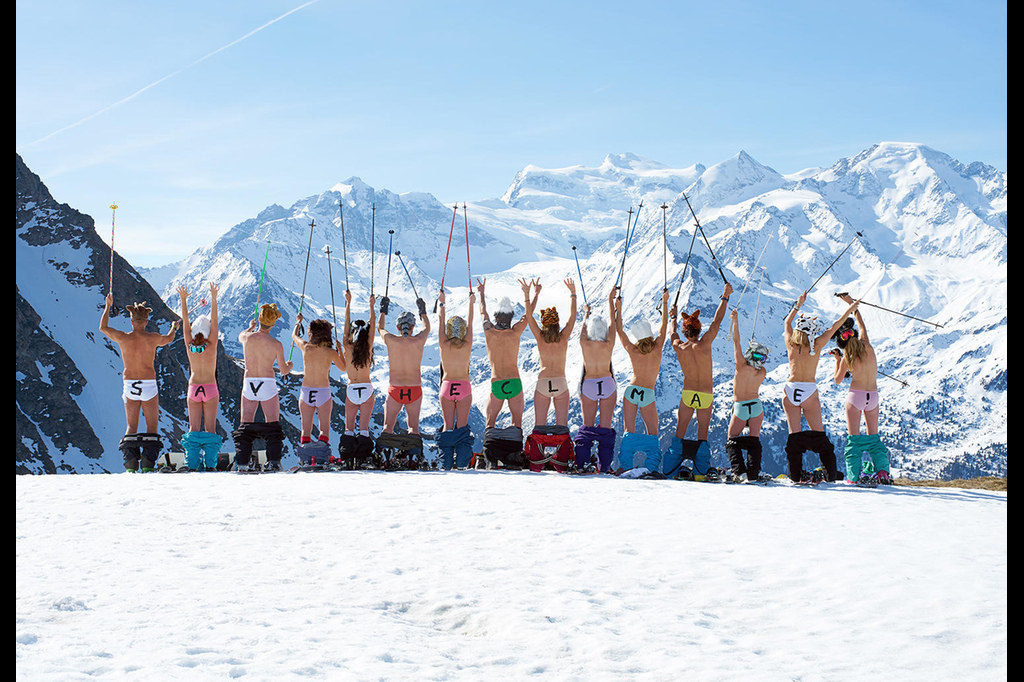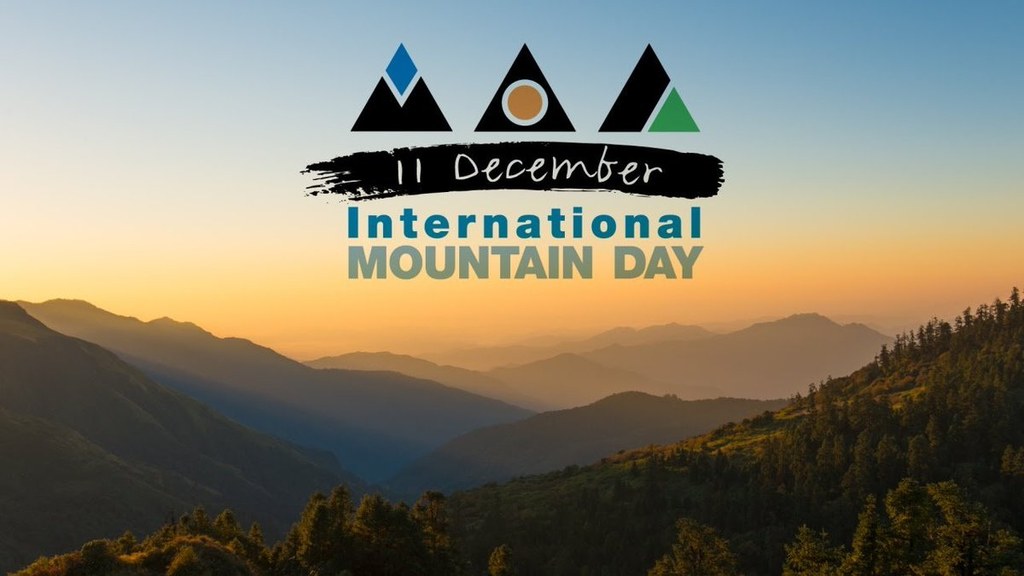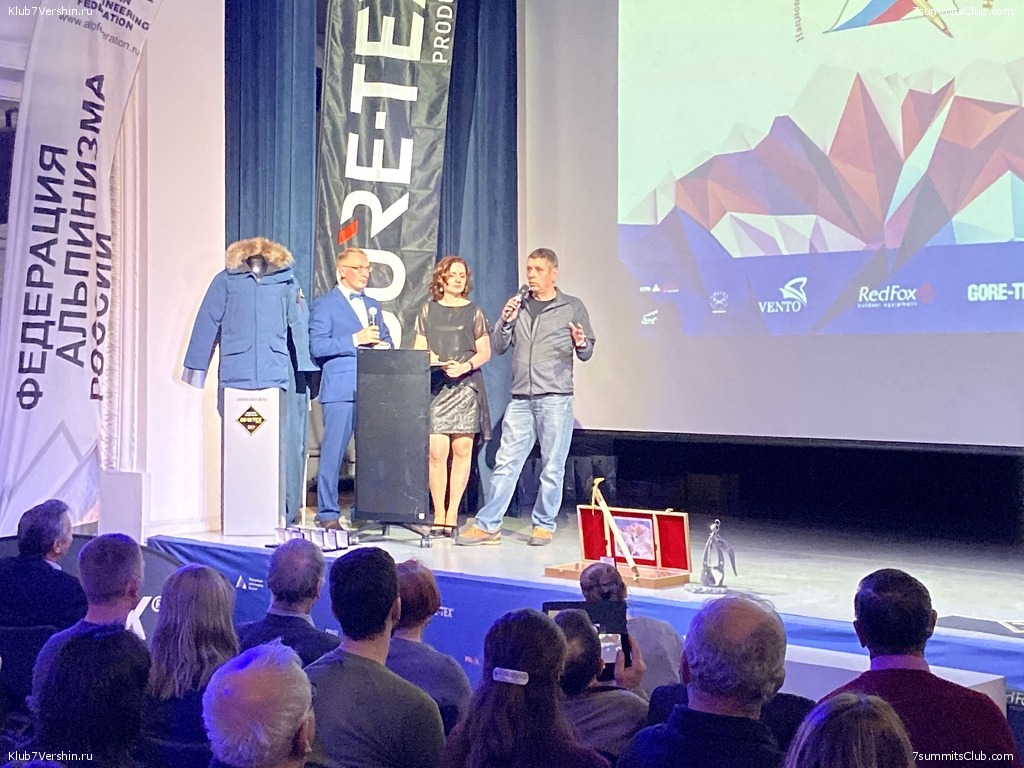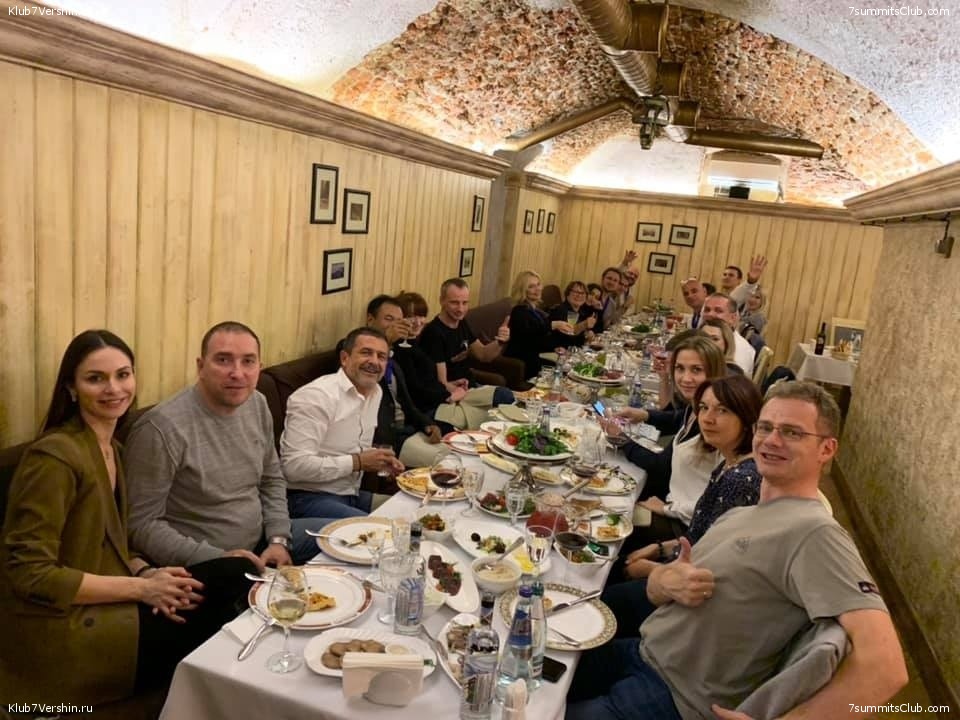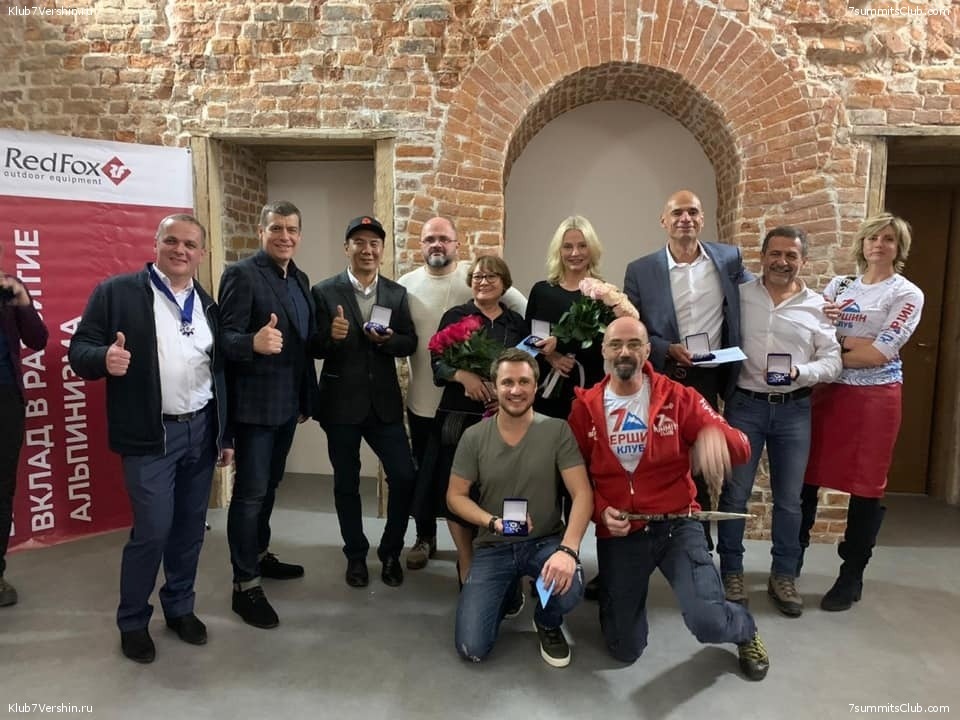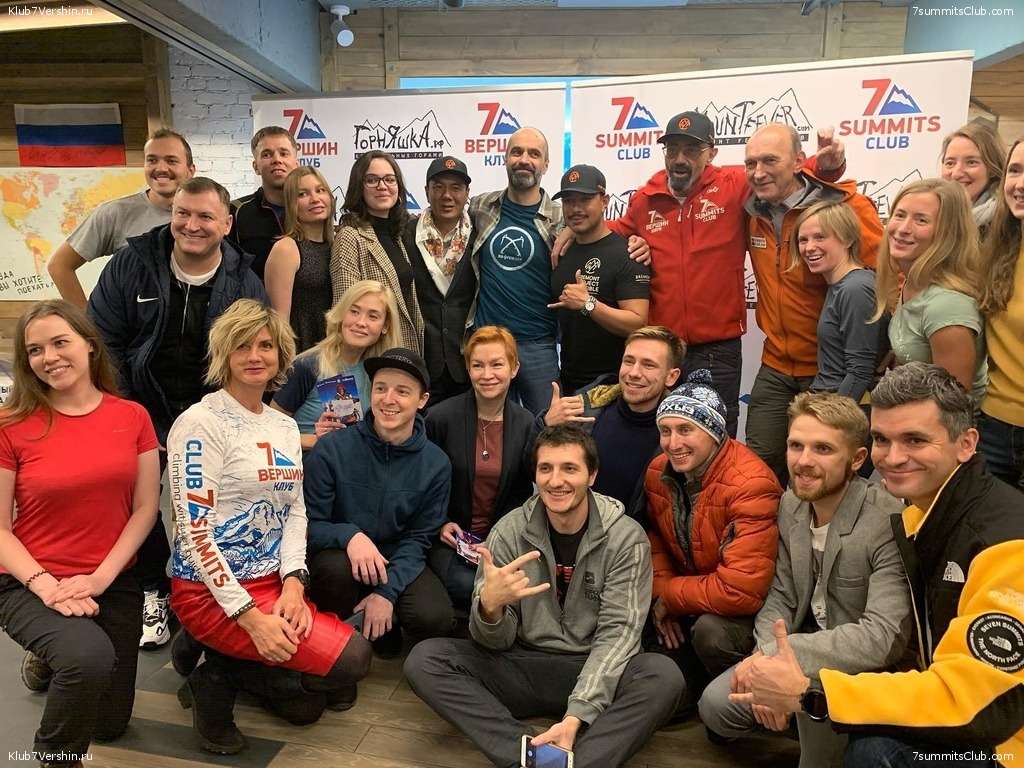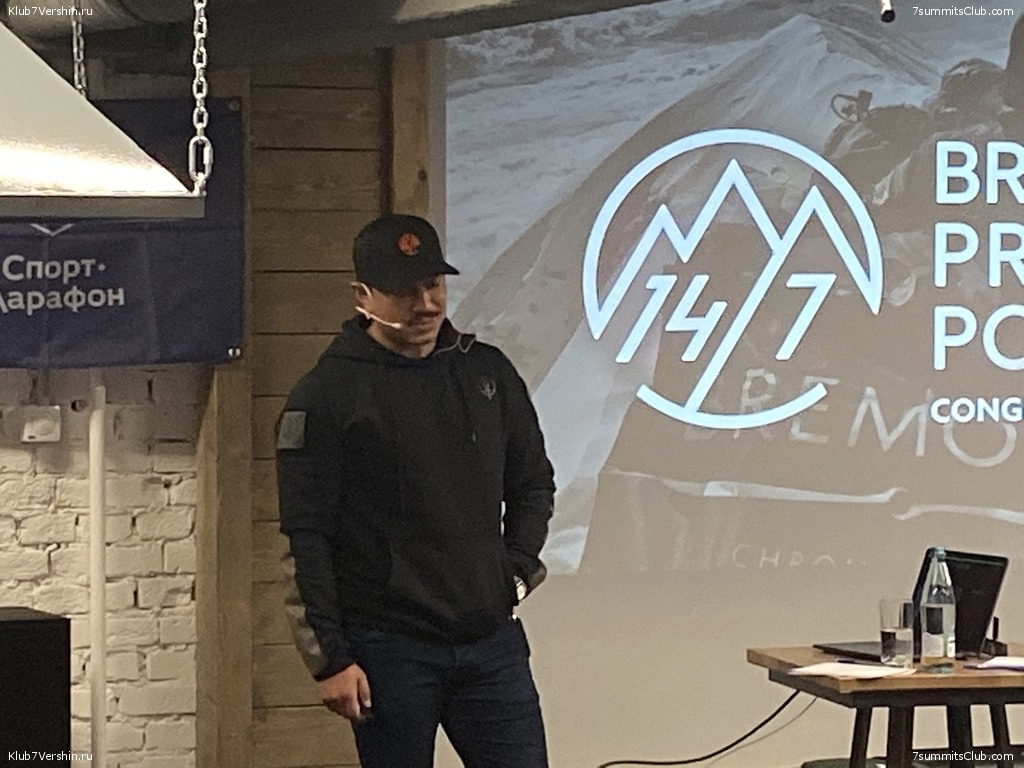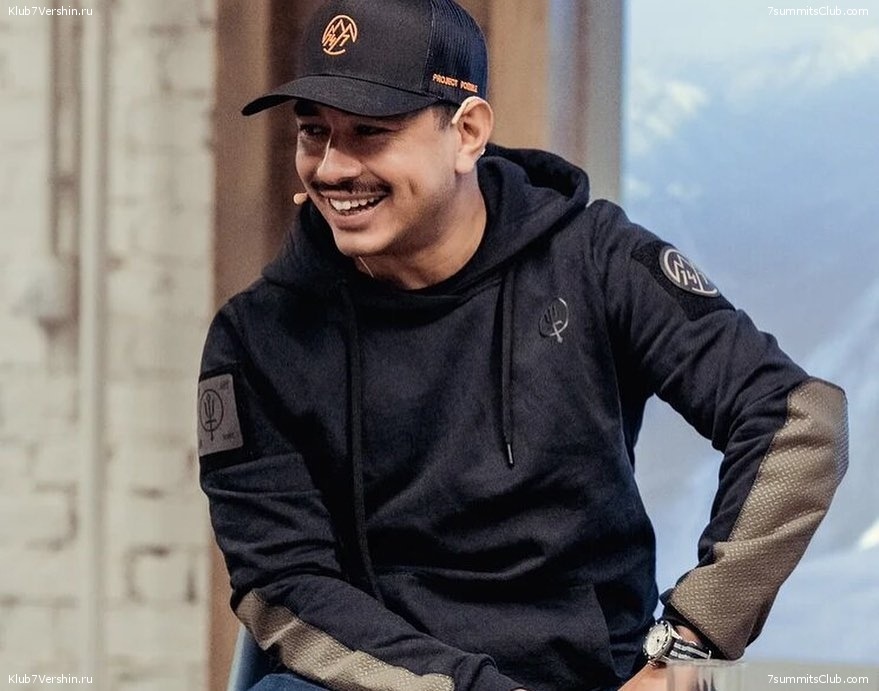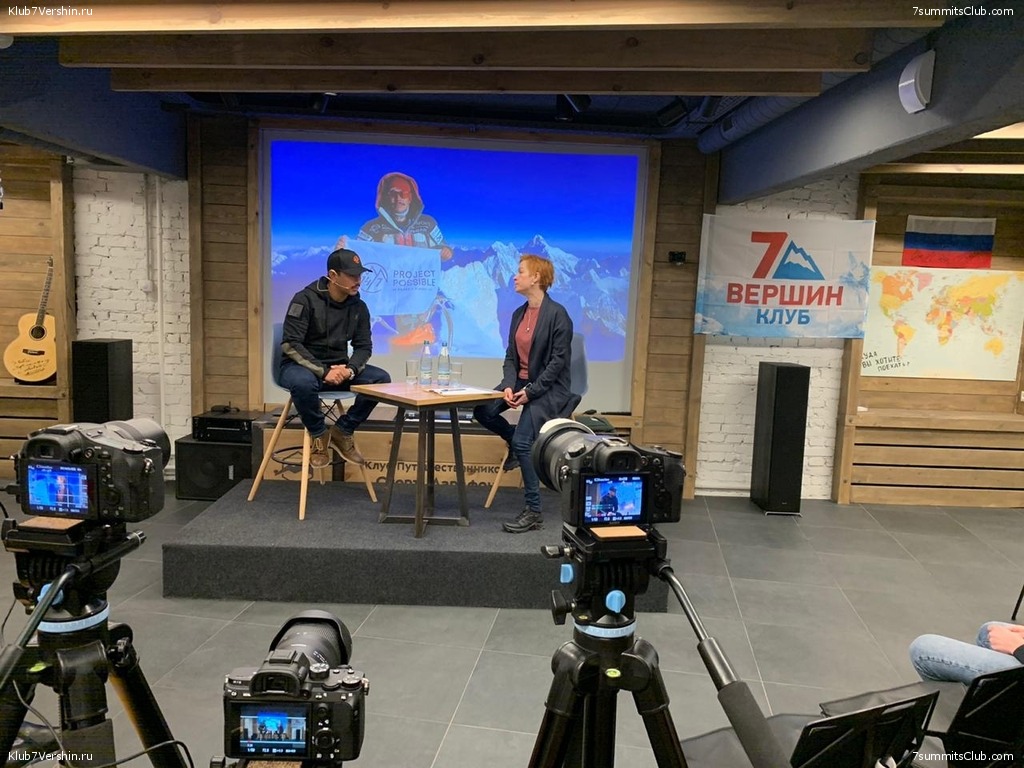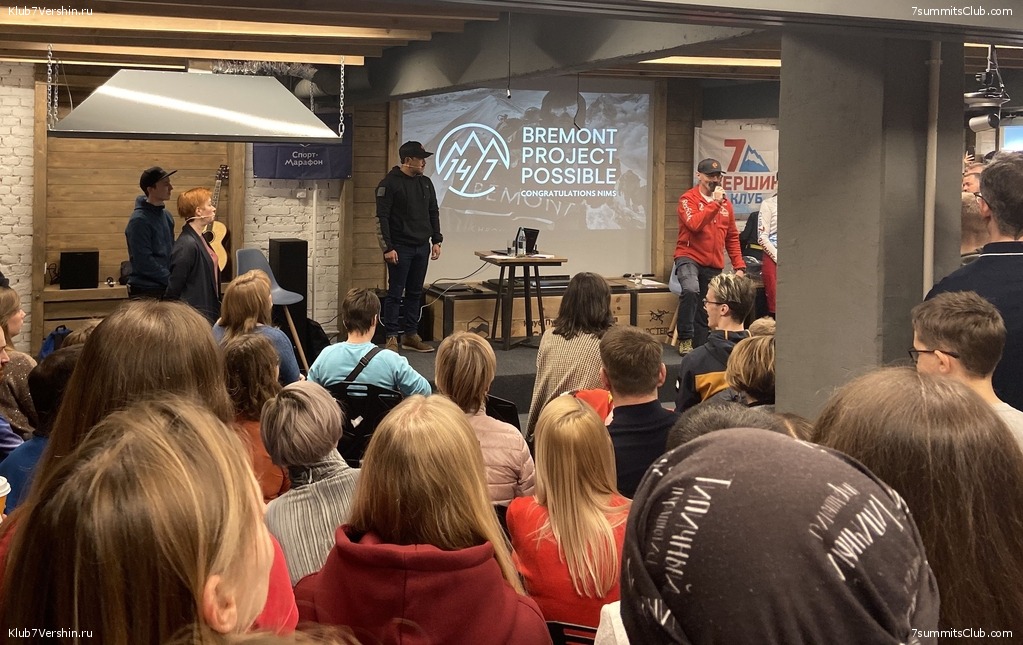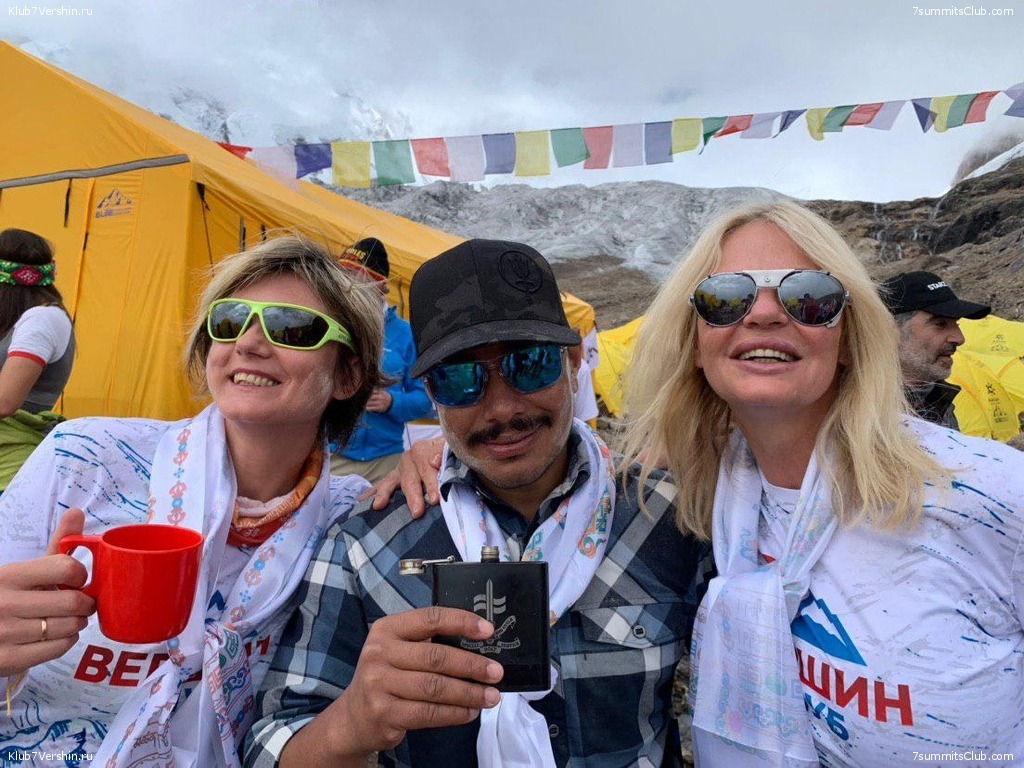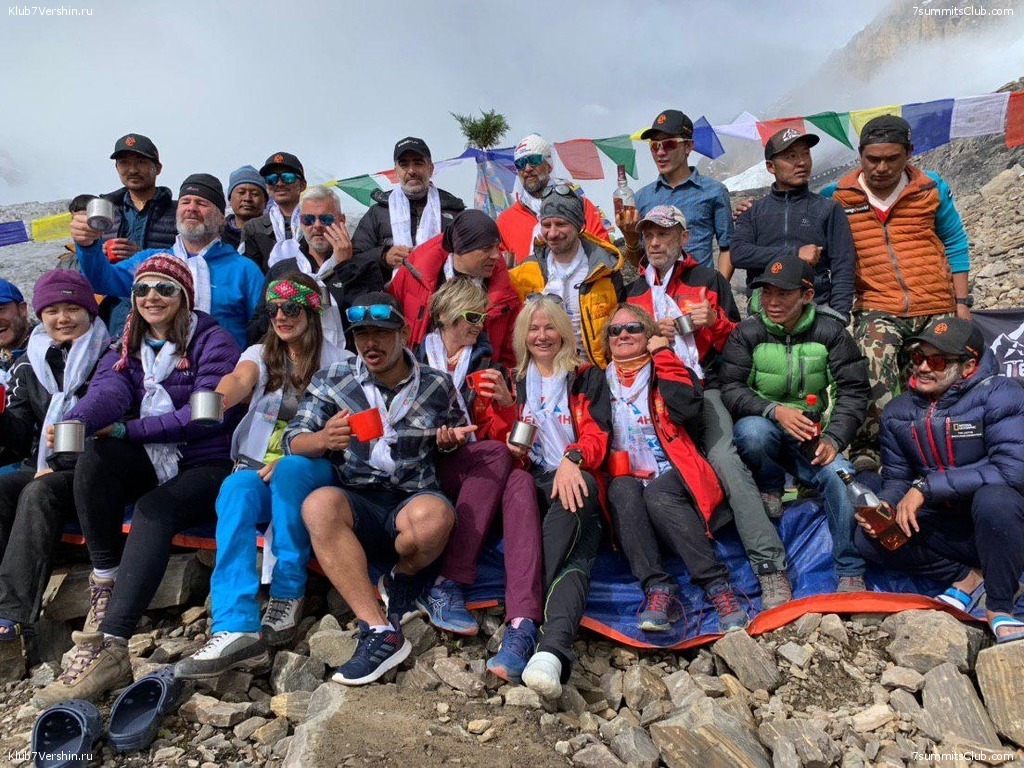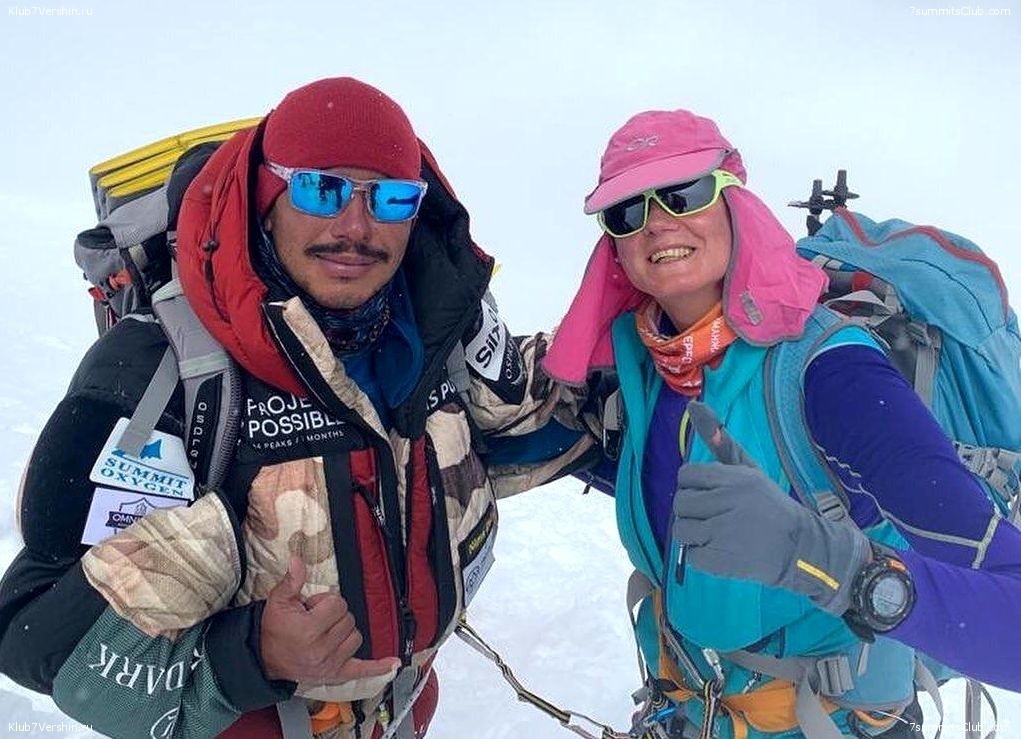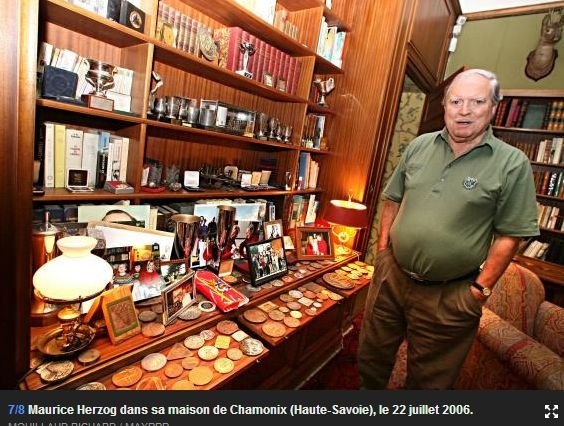Yelkov Alexandr
Everest 2009. The first expedition of the 7 Summits Club from the South. Approach and acclimatization
Everest.
By the end of the 2007 Everest expedition, it was clear that the next year would be difficult. The Chinese clearly stated that only one team would go to the top from their side. The one that will carry the Olympic flame. Therefore, there ...
By the end of the 2007 Everest expedition, it was clear that the next year would be difficult. The Chinese clearly stated that only one team would go to the top from their side. The one that will carry the Olympic flame. Therefore, there was no other option but to prepare an expedition to Mount Everest from the South. However, closer to the start, it turned out that the Chinese were not limited to closing their side. They convinced the Nepalese that until the Olympic flame reaches the top, no one should be on the route from the South. As a result, it was announced that all work on preparing the route from the Nepalese side will begin after May 10. After learning about this, Alexander Abramov decided to postpone the expedition to the next year.
Most of the failed 2008 expedition members were determined to go to Everest from the South. In addition, it became known that there was unrest in Tibet. And in General, the trust in Chinese bureaucrats was undermined. So the 2009 expedition was initially prepared from the South.
March 20, the advance team of Seven Summits Club Everest Expedition started off for Katmandu. The team consists of: Abramov Alexander (leader), Nikolay Cherny (guide), Maxim Bogatiryov (guide). They arrived in Nepal before the whole group, to prepare everything necessary for the expedition. Then Nicholay Cherny and Maxim Bogatyryov will go to the Everest Base Camp for arrangement for the arrival of participants.
The expedition will take place from 20 March till 10 June 2009.
For Alexander Abramov (Captain of the Seven Summits Club and permanent Leader of Seven Summits Club Everest expeditions) it is the seventh Everest expedition. But this expedition is unique in many ways. It is the first time when Seven Summits Club conducts the expedition form the South (from Nepal). Secondly, this year major part of the group consists of the citizens of other countries.
The list of participants of the expedition:
KHUTOROVSKY Vladimir (Russia)
CARPENCO Andrey (Moldavia)
NIKITIN Dmitry (Russia)
Mr Philippe Burlet (France)
RAVENSTIJN Erik (Holland)
MARIN Michael James (USA)
CRELLIN John Anthony (Great Britain)
SINGH Patrick Rajnaraine (Canada)
HANNA Lynne (Great Britain)
HANNA Noel Richmond (Great Britain)
The head: Abramov Alexander (Alex)
Guides:
Nikolay Cherny (Russia)
Maksim Bogatirev (Russia)
Viktor Bobok (Russia)
Doctor and base camp manager:
Avaz Makthalikov
***
4 April. Alex Abramov from Kathmandu:
Yesterday all participants of the expedition came to Kathmandu. There is the list of participants of the expedition:
Guides
Russia Abramov Alexander
Russia Bogatyrev Maxim
Russia BOBOK Victor
Russia CHERNYY Nikolay
Dr. Uzbekistan Matkhalikov Avazkhon
Participants
Russia KHUTOROVSKIY Vladimir
Moldova CARPENCO Andrei
Russia NIKITIN Dmitry
France Mr Philippe Burlet
Dutch RAVENSTIJN Erik
US MARIN Michael James
UK CRELLIN John Anthony
Canada SINGH Patrick Rajnaraine
UK HANNA Lynne
Irish HANNA Noel
4 guides + 10 members + 11 Sherpas + 4 cooks and 2 assistants cook
Total 32
At this moment the whole expedition’s cargo has already arrived at the Everest Base camp. 9 Sherpas and 3 cooks came to the Base camp too. We are working to clear areas in the Khumbu(5100m), and the installation of tents. We have TV and DVD with Karaoke in the Base camp. We will be singing "Katyusha" to drum up all women`s expedition. In connection with the homeland, we have brought and set up satellite modem for the Internet.
This is something that is already in the mountains ...
Yesterday it was a meeting in Kathmandu in Nepal`s Tourism Ministry, where we handed to Permit and introduced to Lisan officer, which should help us to organize the expedition.
We hope fly to Luklu on April 4. Weather in Luklu is bad, and 2 days did not fly airplanes. A huge queue established of people and goods. We are trying to resolve this problem.
***
5 April
Yesterday we went to the airport in order to fly to Lukla. We passed the queue other expeditions, draggled our trunks, got into a small plane. After 15 minutes we were asked to go out and wait, because the weather in Lukla became bad. But five minutes later we again went to take off. Weather deteriorated completely, and the plane turned over Lukla, after 20 minutes we were back in Kathmandu. Now we find ourselves at the end of the queue.
At that time, two guides 7 Summits Club Nikolay Cherny and Maxim Bogatyryov and Sherpas establish a Base camp. Already they made a dining room, mess-room with TV, karaoke, and Internet and a washhouse.
Here are some photos sent from Khumbu Glacier.
9 April The team reached Namche Basar by helicopter
***
13 April
Today all the participants of the Everest expedition led by Alexander Abramov arrived to the Base Camp. They had a holiday dinner on this subject. During the lunch Alex Abramov announced the program for the following days. In the next two days, participants will have a rest, check the equipment and training on the ice. And then they will go to the ABC (6400m).
***
15 April.
Buddhist puja ceremony this morning officially opened our camp and the blessing was given to the climb, the climbers and climbing gear. Now buddhist prayer flags criss-cross the camp.
In the afternoon the climbing team made its first incursion to Khumbu Ice Fall. The roundtrip took 3 hours during which the equipment was checked, and tested. We crossed crevasses, two of them with the help of alluminium ladders. Today`s short climb offered spectacular panorama of the basecamp and surrounding peaks.
***
19 April. The entire team returned to the base camp today after successfull acclimatization trip to Camp 1 at 6000m.
Crossing Khumbu Icefall was the first serious exercise of the trip. The Icefall is constantly moving, so we had to leave early before the sun started to melt the ice formations, some of which reach the hight of a 5-6 storey building. The reward at the end of the trip was an awesome view of Mt Everest (which can`t be seen from the Base Camp), the Western Cwm, which we will have to cross during the climb, and the peaks of Lhotse, Cho-Oyu, Pumori and Nuptse. We stayed overnight at Camp 1.
Just prior to heading back down the Icefall at 5:30 am we learned that there was an ice avalanche overnight, so half of our trip down the Fall took place accross the terrain that was changed beyond recognition from the previous day. Here near Mt Everest one is truly confronted face to face with the nature`s awesome might.
***
22 April. As the days are getting longer and the Sun is becoming warmer we are getting ready to head up for our second acclimatization trip tomorrow. Given earlier sunrise we are planning for a 5 am start up the Icefall. We will spend next two nights in Camp 1 (6000m)and Camp 2 (6400m) before heading back to Base Camp on Saturday.
Today is the rest day.
***
27 April.
It is a rest day at the Base Camp after going to Camp 2 - Advanced Base Camp (ABC).
Our ABC is located right at the foot of Mt. Everest`s Western wall and overlooks other camps at the location. From ABC one looks straight at Western Cwm - a giant amphitheater made up by the Everest, Lhotse and Nuptse wall. From ABC we could also see our future route climbing Lhotse face, crossing the site of Camp 3 (7300m) and continuing across the Yelow band (a distinct layer of light rock crossing the black wall from left to right). The route then crosses Geneva Spur (7600m) and leads onto South Col - a saddle between Everest and Lhotse at roughly 8000m, and the site of our future Camp 4, the summit camp.
It was windy at times during the trip, but overall everybody made it fine through this acclimatization trip and through spending a night at Camp 1 and another at ABC. Our time of crossing Khumbu Ice Fall was significantly better - about half of the time it took us the first time around. Today we learned that high winds raked Western Cwm and some of the tents at ABC got flattened by it, so the camp has to be partially reconstructed in the coming days.
We plan our next climb after several days` rest, probably towards the second half of the week of April 27.
Sent via BlackBerry from T-Mobile
ABC
|
|||||
28 April.
A couple of days ago the entire group bid farewell to Phillipe Bourlet, who left the climb for his native Grenoble, France. For further climbs two sub-groups were formed:
Team One: Andrei, Vladimir, Dmitry, Michael and Eric
Team Two: Lynn, Noel, Patric and John.
Team One is heading up the Ice Fall tomorrow, April 29, for the final acclimatization trip that will go through C1 and ABC to Camp 3 (7300m) and on to Geneva Spur (7800m). Team two will take the same route one day later. Both teams will attempt the entire route without use of supplemental oxygen.
The wind has died overnight and it is a beautiful sunny and hot day at the Base Camp. Reports from ABC are that all the supplimentary hardware and other material has been brought up to the camp. Thus, the fly-away kitchen tent, toilet tent (with the barrell?), and collapsed dining tent and member tents should all be restored by the time Team One reaches ABC on April 30. Sent via BlackBerry from T-Mobile.
8 May.
While most participants of Everest expeditions rest and gain strength in the woods, Seven Summits Club`s guides and other members of the expedition did not lose time for nothing.
Base Camp
|
|||||
RAVENSTIJN Erik
|
|||||
MARIN Michael James
|
|||||
Seven Summits Club`s guide Nikolay Chernyi masters technological innovation
|
|||||
May 9, Seven Summits Club expedition celebrated Victory Day in the Base camp of Everest. Preparations for the festive evening took the entire day. Club Guides Max Bogatyryov and Viktor Bobok set generator and karaoke. Sherpas prepared food and drink.
But suddenly the holiday was threatened. And the Seven Summit Club’s expedition almost lost its leader. In anticipation of the celebration of the Victory Day, Alexander Abramov came round the base camp, inviting guests from other expeditions. On the road from the Alpine Ascents BC to Seven Summits Club’s BC Alex fell into the crevasse filled with water. Only the cap remained dry. He tried to communicate with his guides on the radio, but radio got wet and did not work. "It is insulting to die at the base camp" - thought Alex and with great difficulty got out of the crack. He squeezed out thermal underwear and puff. Abramov had to drink 200 grams of vodka, and drink after 100 grams of whiskey to the end that didn’t get ill.
Just an hour later started festive evening devoted to the Victory Day. The evening was held at a high level. There were many distinguished guests: guides of Russell Bruise, Karri Kobler, Dawa Stiven and his customers, Kazakh expedition lead by Ervand Tikhonovich Ilyinsky, Boris Korshunov and Abu Elmezov.
This evening completed a week of rest. Seven Summits Club expedition on Everest entered to the final stage. In the coming days, participants will be on the ascent.
Max and generator
|
|||||
Set karaoke
|
|||||
Alex Abramov and Viktor Bobok
|
|||||
Party
|
|||||
|
|||||
|
|||||
|
|||||
|
Everest 2007. The 7 Summits Club Expedition. Part 1.
Everest.
A new expedition to Everest from the 7 Summits-Club under the leadership of Alex Abramov started March, 21. This year our team will be include 17 climbers, the head, four guides and a doctor. 23 persons alltogher. Approximately as much ...
A new expedition to Everest from the 7 Summits-Club under the leadership of Alex Abramov started March, 21. This year our team will be include 17 climbers, the head, four guides and a doctor. 23 persons alltogher. Approximately as much will be the attendants, including group of high-altitude porters led by our favourite sirdar Mingma.
The main group takes off March, 28. This time a way of expedition in the base camp will pass through Lhasa, capital of Tibet where participants of expedition will be delivered by plane from Katmandu. This variant is more expensive, but saves forces and allows to avoid possible troubles on road. Plus to everything, all members dream to visit the capital of Tibet.
The route of an ascent - classic, system of an arrangement and maintenance of camps will be similar last year`s. The current information will be transferred by the satellite phone, in particular to the Risk.ru site.
The most part of members sets as the purpose to climb Mount Everest, but there are persons which have limited itself to rise on North Col. Maxim Shakirov will carry an Olympic flag of the city of Sochi (Olympic Games 2014) to the summit. And in same time the Chinese climbers will work on the slopes. They prepare for realization in 2008 of relay race of Olympic fire. So two flags can meet in the area of summit.
The list of participants of expeditiont:
- John Delaney, Ireland
- Maxim Shakirov, Russia
- Israfil Ashurly, Russia - Azerbaijan
- Andrey Zajtsev, Russia
- Andrey Ivanov, Russia
- Sergey Dashkevich, Russia
- Sergey Batura, Russia
- Hannah Shields, British
- William Hazelton Tyler III, USA
- Curt Myers, USA
- Dirk Feige, German
- Armenak Tigranian, Russia
- Dmitry Zjuz`, Ukraine
- Armen Rshtuni, Russia
- Bruce Matthews, New Zealand
- Rafael Nagapetianz, Russia
- Alexander Kibalko, Russia
The head: Abramov Alexander (Alex)
Guides:
- Sergey Kofanov, Russia
- Alexander Bichenko, Russia
- Sergey Larin, Russia
- Lyudmila Korobeshko, Russia
Doctor and base camp manager:
Andrey Selivanov.
April, 4.
Yesterday, April, 3 we have left hospitable Nepal and in one and a half hour we have landed at the airport of Lhasa. Height 3600ì, we have felt it at once. On words of Hanna, which was here 14 years ago, the capital of Tibet has transformed beyond recognition. Lhasa now is modern City with wide prospectuses, supermarkets… But if to deviate in lateral narrow streets - as at once you get in completely other world. Here there are old Tibetan small houses painted in five colors with flat roofs, monks and Tibetians in national clothes, in each second court yard- Temple or Buddhist stupas.
Today, since morning we have visited the main relic of Tibet - Potala, a palace of Dalai Lama with its 13 floors and 999 rooms. On the top floor one Chinese woman has felt very badly. The doctor by a trade of Hanna Shields has come to the aid and has rescued her. The altitude is felt, in every room of our hotel there are artificial oxygen.
At this time Alexander Abramov bought yoghurts, beers, milk and - the most important - a tennis table for base camp!!
In the evening we have gone to the Tibetan restaurant with evening show. Show was pleasant unexpectedness: on a stage in dance and with songs was the Tibetan rural life is reproduced in details. Even yaks were on a stage. All this - under monotonous fight of drums. And toward the end all people were united in joint dance around of tables.
While we enjoyed the Tibetan delicacies, Abramov battled at office China Mobile. Local agents very badly understand English, but all necessary SIM-cards for base camp were bought. Àlex has won!
Tomorrow we leave in Shigatse (3900ì). And therefrom we shall go in Shigar. Under the plan to the evening April,8 should reach the base camp.
Korobeshko Lyudmila from Lhasa, Tibet.
Yesterday, April, 8 the main group (14 person + Lyudmila Korobeshko) has arrived to the Base Camp at height 5200 m. We were met by Sergey Kofanov, Alexander Bichenko, Andrey Selivanov, which here already about one week here. They had time to prepare all camp with the maximal comfort for our arrival. Here was also Alexander Abramov, he has arrived in BC day prior to us that to be convinced of readiness of camp.
In the evening we have sat behind dinner in honour of the official beginning of a sports stage of expedition. Before it we had time to put a special tent ("sports hall") with a tennis table inside and even have carried out some matches.
The first night on 5200 m was disturbing. The guide Sergey Kofanov unexpectedly fall severely ill. Early in the morning, doctor Andrey Selivanov has gone together with Sergey on a jeep in Xegatse, to the regional hospital. There is a suspicion on appendicitis though it is possible, that this simply strong food poisoning. His friend Armen Rshtuni accompany them. If it will be necessary he will stay with Sergey, and doctor Andrey Selivanov should return in BC. Today in the morning April, 9 Armenak Tigranian has left our expedition. To regret, he has fallen a victim to mountain illness. Anything dangerous. Soon he should arrive to Moscow healthy, though tired.
Other members of expedition feel like more or less normally: today since morning we have taken a walk down to Old Rongbuk. The day after tomorrow we leave up to 5800 m - Intermediate Camp - and there we spend a night. Then we shall go downwards and after rest we shall go on 6400 m – to ÀÂÑ.
From Bruce (www.7summits.com)
…We arrived at Base Camp yesterday at around lunch time...lunch consisted of mushroom soup, grilled chicken and cold slaw and fruit salad. There are always cases of Coke, Sprite and Beer available as well as pringle chips, biscuits fruit juices and naan bread. Supper was much the same in that it was a three course meal. Most members of the expedition who have done other climbs are amazed at the fare and accommodation etc. Unfortunately, our pool tabe met it`s demise on one of the passes and is now shattered. However, the ping pong table is set up in its own tent next to the entertainment tent which has two tv`s, games, dart board etc!
Base Camp has been described by some as bleak...and then by those returning to recover from higher, as paradise! The camp is situated at the end of the Central Rongbuk glacier and runs North from that point. Everest is behind you and the camp slopes downhill. As it is a morain, it is like being on a large dried river bed with mostly stones and sand and very few big rocks. If you can visualize standing up at 7Summits-Club camp, up against the high end of a rocky glacier, the base camp runs down the west boundary for approx 1/3 kilometers and narrows a bit at the bottom. The North boundary and South boundary are roughly 500 meters each and the east boundary about 1 kilometer. It is large abd there are presently 13 different expeditions. I walked the boundary yesterday and that was 3 kilometers and took an hour...this indicates how slowly one needs to move her to adapt….
From Bill (www.7summits.com)
Me and a guy named Arman climbed up the back side of the monastery up to about 4100m for good excercise. But I was glad to move on from there yesterday to here. the hotel was the same as I remember. Cold at night. On the way Alex bought a pool table for basecamp, A POOL TABLE!! I think that is a first for Everest But it broke on the trip. But good try. The road took us over a 5200m pass, where we stopped for a few minutes and took in the sights. We did get to see Everest off in the distance at a point on the road, and she was looking formidable.
Tomorrow we head up to base camp, to settle in and start the actual expedition. this year there are over 30 teams on the north side alone, including a huge Chinese team of 120 summit permits. We all are worried that we will get trapped behind some of these other expeditions and have to turn back because they are too slow. But only time will tell.
April, 18 2007 Everest BC from the North, 5200ì.
Yesterday we have gone down from ÀÂÑ (Advanced Base Camp), 6400ì. Upwards up to Intermediate camp we went on the average 4 hours, up to Advanced - 4,5 hours. In the evening April, 16 after arrival in ÀÂÑ we have left under a wall of North Col. Sherpas have already fixed cords, we saw group of 4 person on the wall. In the same evening Maxud Jumaev and Vasily Pivtsov called on us. They plan go up to the North Col or is even higher in the first exit.
Next day April, 17 all of us have gone down in base camp to beer, to voblas, to a bath and club where it is possible to look films and to work in internet.
In the morning April, 18 Armen Rshtuni and Bruce Matthews have left our expedition. Both on family circumstances, not having finished their program "Ascent on North Col".
Since morning guide Sergey Larin with his mini-team Rafael Nagapetianz and Alexander Kibalko (the well-known skater) have left on the first acclimatization exit. In some hours after them guide Sergey Kofanov has gone upwards. He should finish installation ÀÂÑ - medical tent, to complete electrification. Then he will help ours Sherpas in upholding our interests on North Col and in high-altitude camps. Our Sherpas one week ago have noted by tags places for our tents in all camps above 6400. But young Sherpas from other expeditions have ignored our tags. It will be necessary to find mutual understanding.
For all others today was a day of rest – take a bath, play tennis etc. And we drive on a motorcycle which Alex Abramov has hired for the period of expedition.
The day after tomorrow - we leave upward. We plan to reach the Saddle and to spend a night on 7000ì.
April, 30 2007 From Base Camp Everest from the North, 5200ì.
Now at 11 a.m. over China. Now we wait with excitement of a radio communication with Ìàxut Jumaev and Vasily Pivtsov. Yesterday April, 29 in 10 p.m. they have left from 7900 on the summit of Everest. They go without oxygen, without using fix-ropes. For last 3 weeks together we have become close friends, and guys became practically a part of our collective.
Now the most part of our team goes down on rest from ÀÂÑ. April, 28 we All have left on the final stage of acclimatization from ÀÂÑ on North Col (7050ì). But before of steep part Ludmila Korobeshko and Andrey Zajtsev were forced to turn back on a state of health. This very day we have gone down on 5800. By the way, here in the Middle Camp we have met the interesting Austrian who is going to go solo without oxygen on Hornbein couloir.
Other group under A.Abramova`s management, with S.Kofanov and A.Bichenko has successfully reached the North Col. After night there, they has left on acclimatization up to 7700 m. At this time Maxud and Vasia have gone on 7900 to establish assault camp. About 7 p.m. they have informed by radio and confirmed the intentions in 10 p.m. to leave on storm. Today in the morning our Sherpas saw small lamps above 8300ì.
All day April, 29 I, Andrey Zajtsev and Sergey Larin sat at a portable radio set. We listened, as Sasha Abramov drove all up to the mark of 7700 meters. They have reached it almost all and this very day they have gone down in ÀÂÑ. Today we are waiting for all in ÂÑ, 5200. Now under the plan we will have a week of rest before deciding attempt.
Seems like the first Everest summit this season has just taken place! One our ago, at 6 p.m. Chinese time, Vassily Pivtsov and Maxut Zhumayev have called on the radio from the summit of Everest ! The two climbers launched a summit push from 7,900m last night at 10 p.m. They have topped-out with no supplementary O2 or Sherpa support.
Maxut and Vassily had already launched a summit push last week, which was twarted by bad weather conditions at the North Col. By Friday they were back in ABC — but not for long.
Òhe Kazakhs reached the summit at approximately the same time HiMex`s Sherpas fixed ropes on the upper sections of the route. Maxut and Vassily are currently descending, hoping to go down as low as possible and stop by nightfall. "At the worst case, they will sleep at 8,300m.
The weather conditions are currently good, with no strong wind.
Bill Tyler: back from NC and first 2007 summits on Everest (brief variant)
|
|||||
The trek up to ABC sucked as usual, and I was glad that my times improved dramatically. SO I felt that maybe there is something to training before a trip. We spent 3 days at ABC, 1 due to weather. I felt fine the whole time, with little headaches and short of breath to really make life interesting. It took a few days for mr to sleep longer than 3 hours. We got snow and wind, but I was fine. Warm as heck to say the least.
The north col is quite steep. Talking with the sherpas and other who have been there last year indicate that it is much steeper than previous years. Nice thing is that is makes it a short distance to go. But it is steep! up to 95degrees in several places. I got on the lines and it took me about 5.5 hours. It was a struggle. Basically you pull yourself up a step, then rest, the do it again, all the while dealing with the wind, snow, and other climbers. There are a lot this year. It just seemed to go on forever.
I was really glad to finally make the top and see tents. The whole of the tent site is on top of a serac, which someday is going to come crashing down. Lets pray not this year! Again I had no issues with altitude, just a dehydration headache…
So after the first time at the Col, we spent 2 days resting in ABC. Played a lot of chess and tried to sleep as much as I could!
So I left off after the first time up the north Col. Just as a point of reference, The north col is a bridge between the main mass of Everest, and the North summit of the mountain, called Changste (I will make sure that is the right name for that part of the mountain). This "bridge" allows the climbers to set up a camp to continue to climb. The flank of Everest has no place to camp really, although it has been climbed before.
After the night at the north col, we dropped down the 400m face by rappelling and walking using the ropes fixed in place. It took 30 mins to go down the face that took 5.5hrs the day before. Sleeping at 7000m really means that you try to find a comfortable spot and then relax enough to let the min drift. There is no deep sleeping. Maybe for some, but no one I know! Sherpas maybe.
The next three days we spent just resting at ABC. I mean resting. Lay in the tent, look at the roof, roll over and stare at the walls. Eat as much as you can, although there really is no appetite at this altitude either (6400m). If you move and forget that you are this high, You spent a few minutes gasping to regain control. I got pretty good at moving slowly. Ever time I got out of my tent though, I would gasp away.
So generally the days pass pretty fast, even though we did no do much at all. But I sure could not wait until the next trip up the ropes. I am really glad that the team decided to get all of the acclimatization done at once, instead of retuning to BC and then going back to the north col over that long approach. I hate that!
So after the three days, up to the north col we went again. I must admit the second time was easier. Maybe because of the mind games, but it was not so bad. I beat my time a little and felt pretty good. But, I got the cough!!! Nothing like last year, where I was coughing up lung chunks, but nonetheless I got the high altitude cough. That night, we mashed down the floor to give us a smoother surface, which helped. One of the reasons that I slept so bad the previous time was because the floor was so bad the three of us ended up with sore backs and spooning on top of each other the whole night. No one could move or turn without disrupting the other two.
Again I did not sleep a wink. The coughing and thin air just make the night one long trial or endurance.
Up in the morning to head up the long snow ramp to 7500m. at this point, one is actually on the mountain. I felt strong, but a real problem cropped up.
We started out in our down suits, and the heat was so bad I felt like I was in a hot sauna. No wind, which is very unusual. The down suits are to help us with the wind, but there has got to be some wind!!! I was sweating my brains out, which is exactly what I do not want. I prefer to move as cold as I can stand it, to keep fluids from sweating out.
The problem that I have is my feet were frozen. I have the best boots money can buy for this sort of thing, but my feet were like lumps of ice. I stopped after about an hour to tell the guides about it and I felt I should go down. I felt strong and had no altitude issues, but I did not want to lose anything. I waited for about 45 mins for Alex to come by. We talked about it and actually called a doctor (we have a new doctor now) and discussed it by radio. At first he thought it was due to a bad heart, but after the talk decided it was due to cold boots. So Alex got me up and moving higher.
I moved to 7250m and felt really good. I knew that I could have caught up with the team struggling ahead of me. I actually was only one rope length away from the last team members I was moving so fast. But my feet were lumps of ice. I stopped and noticed that one of the team was on his way down. So I waited and Curt came down due to stomach problems. At this point, I told Alex I was going down. I had no issue with it because it was to prevent any damage to my feet. I felt good about going further because I was physically feeling strong, but I needed to figure out what was going on with my feet.
So we two headed down to the north col, taking out time. Once we got there, we then packed up and headed down to ABC. The ropes were no problem, and we got down to ABC in 1.5hrs. So we were doing well. My feet started to warm up once we got to crampon point, about 6500m. So I am wondering if maybe there is an altitude issue with my feet.
My personal no oxygen high point is 7250m, I think it is ok. Next time I am even near there, I will be on ox and it wont matter.
Today we have celebrated Day of the Victory. 12 participants of travel on motobikes (a route Lhasa - Katmandu) have risen to us in the base camp. They arrived yesterday in Rongbuk, and today came to us to dinner. Dmitry Rysin and Igor Kulishov (heads of expedition) told us about their adventures on road from Lhasa. Some accidents have taken place, basically because of collision with animals. Anybody from bikers has not suffered seriously. They were forced to leave their motorcycles in Rongbuk - any type of transport, except for horses and special jeeps could go through the Chinese check-point .
A festive lunch was perfect, with toasts for the Victory, for Mountain, for "mad people" (i.e. people such as climbers and motorcyclists), all team was photographed at finish. Then guys have left to Rongbuk camp.
For the evening dinner we have called for Russell, Jamie, Ronnie Muhl - the member of our last year`s expedition from South Africa. Russell has brought a message that this day 17 Chinese have reached the Everest summit. Though the strong wind complicated an ascent. Ronnie, Jamie and Mr. Chvan (the owner of company " Àrun-trek ") came a bit later. There were again toasts for the Victory, songs about war and peace. And when it darkened, we have arranged fireworks in honour of a holiday.
May, 10 - day of rest and preparation. May, 11 all team goes upward. First in ÀÂÑ, then - as soon as weather will allow - upward by two groups. Today after breakfast, doctor Sergey Larin has made medical survey of all participants who have come back from rest. All is normal, everyone can go on an ascent.
New in Antarctica: website of the Ice marathon and Nims as a guide for the 7 Summits Club program
South Pole.
On December 13, 2020, the start of the famous Ice marathon, a mass start in the area of the Union Glacier Antarctic base, is scheduled. Recently, the organizers presented a new website for the event. During the days of the marathon, you can ...
On December 13, 2020, the start of the famous Ice marathon, a mass start in the area of the Union Glacier Antarctic base, is scheduled. Recently, the organizers presented a new website for the event. During the days of the marathon, you can be on or near Union Glacier as part of the 7 Summits Club program, which will be guided by the famous Nepalese Nirmal Purja. Or you can just fly with our help and take part in a marathon race…
The main star of mountaineering in the Himalayas of 2019, Nirmal Purja (aka Nims) intends to devote himself to working as a guide in the near future. Last year, the Nepalese became close friends with the 7 Summits Club and we agreed with him on mutually beneficial cooperation. We present to You the first joint project:
Nims is a cheerful and sociable guy, with a lot of life experience, physically and mentally surprisingly resistant person. Traveling with him will be something special that you can remember and tell all your life.
Nirmal "Nims" Purja (born 25.07.1983, Myagdi, Nepal) is a Nepalese mountaineer, former Gurkha, soldier of the Special boat service (SBS), an elite special forces unit of the Royal Navy of the United Kingdom. It climbed all fourteen eight-thousandths in a record time of 6 months 6 days in 2019. Awarded the British order of knighthood - The Most Excellent Order of the British Empire.
Everest-2006. The most dramatic expedition. Summit, death and rescue
Everest.
Everest expedition of the 7 Summits Club of 2006 was led by Alexander Abramov. In General, the results of the 2005 expedition were rather positive. And this became a good basis for assembling a large expedition for the next year. A ...
Everest expedition of the 7 Summits Club of 2006 was led by Alexander Abramov. In General, the results of the 2005 expedition were rather positive. And this became a good basis for assembling a large expedition for the next year. A competitive price and a good level of service helped attract new customers from all over the world. Dutch Harry Kikstra (7summits.com), who realized his dream of reaching the summit in 2005, did not lose enthusiasm and joined several projects at once. All this made it possible to assemble a truly gigantic expedition: 28 members, six guides and a doctor who is going to climb. At the same time, foreigners made up the absolute majority - 23 people plus 4 as video crews.
Expedition guides:
- Alexander Abramov, Russia (main guide and leader, Everest Summiter, leader of 5 Himalayan Expeditions)
- Nikolay Cherny, Russia (guide, co-leader, Everest Summiter, 6 other 8-thousenders)
- Igor Svergun, Ukrain (guide, Everest summiter)
- Harry Kikstra, the Netherlands ( guide and co-leader, Everest summiter)
- Mingma Gelu Sherpa, Nepal (sirdar, 5 times Everest Summiter)
- Sergey Kofanov, Russia (assistant guide)
- Ludmila Korobeshko, Russia (assistant guide)
- Andrey Selivanov, Russia (doctor and ABC manager)
- Maxim Onipchenko, Russia (mountain ranger, BC manager)
- Sergey Chistyakov, Russia (internet project manager)
List of expedition members:
Lande Vladimir Russia
Rozhkov Ilya Russia
Ryzhenko Arkadiy Russia
Plyushkin Igor Russia
Pushkarev Vladimir Russia
Lorenzo Gariano UK
Kirk Wheatley UK
David A. Lien USA
Ron Morrow USA
William Hazelton Tyler III USA
Slate Stern USA
Ronald Kevin Muhl South African
Noel Richmond Hanna UK
Petter Kragset Norway
Torbjørn Orkelbog Norway
Henrik Andre Olsen Denmark Johnny Brevik Norway
Thomas Weber (blind climber) Germany
Vince Bousselaire USA
Richard Harris Australian
Christopher Harris (son) Australian
Michael Charles Dillon Australian
Lincoln Ross Hall Australian
John Delaney Ireland
Frode Høgset Norway
Barbara Tyler USA
Patrick Hugh Flynn Ireland
Gariano Giuseppe Italian
20 Sherpas
6 cooks
6 kitchen boys
Total: 73 (30 clients, 43 staff)
Expedition start date : April 10
Expedition end date : June 10
18th of May. Ludmila Korobeshko and Alexander Abramov from ÀÂÑ, 6400ì.
The main event of last days: Vladimir Lande successfully summited Everest - May, 15 at 9.00. He has spent, from 8300 up to the top, about 6 hours, very good time. Vladimir climbed together with Nima Sherpa, then they have successfully gone down. Yesterday (May, 17), Vladimir has left for Katmandu by an evening jeep. Two days before our senior guide Nikolay Cherny and climber Vladimir Pushkarev have left expedition through illness.
Yesterday May, 17, all first group has gathered in ÀÂÑ. Abramov, Kofanov and Êîrobeshko have decided, that they are the cleverest, and came in ÀÂÑ not for 2 days, as all normal people, but for one. As a result, Kofanov is very tired, Ludmila is simply exhausted. Only for Alex Abramov it is good, he feels most better.
Yesterday at supper, we have together celebrated the national holiday of Norway - Day of Independence. After supper Alex Abramov has lead a briefing. He addressed to the group leaving upward, once again told about dangers of Everest. Except for that, all people checked and put on masks, reducers, oxygen cylinders. It was cheerful.
Now in the morning, we go for breakfast. After it the first group –
Ilya Rozhkov, Russia
Arkadiy Ryzhenko, Russia
Igor Plyushkin, Russia
Lorenzo Gariano, UK
Kirk Wheatley, UK
David A. Lien, USA
Slate Stern, USA
Ronald Kevin Muhl, South African
Noel Richmond Hanna, UK
Petter Kragset, Norway
Henrik Andre Olsen, Denmark
Johnny Brevik, Norway
with guides Igor Svergun and Sergey Kofanov leave on the North Cole. And further under the plan of an ascent. Weather forecast is quite favorable now, on the nearest days 5-6.
Today May, 21, at 8 a.m. Tibet time ( 4 a.m. on Moscow ) the first climbers from our expedition have reached the summit of Everest. There were a guide Sergey Kofanov (Russia), sirdar Mingma Gelu Sherpa (it is his 6 ascents), 3 more Sherpas. Slate Stern (USA), Henrik Olsen (Denmark), Arcady Ryzhenko (Russia) and 2 more Sherpas have summited after them a bit later.
At 10.00 Igor Svergun (a guide of expedition from Ukraine) has transferred by a portable radio set, that he is on the summit, together with Noel Hanna (Ireland), Kirk Weatley (England) and Lorenzo Gariano (UK - Italy) and 2 more Sherpas have joined them soon. In total we have 16 summiters today. Now all members and guides go down. The weather is rather good, but the wind is more strong as in the morning.
In ÀÂÑ all did not sleep since seven mornings - we were on communication with climbers. A summit attempt began at midnight. Thus, the first climbers came on the top for 8 hours. Before breakfast all of us by turns looked in a telescope at a summit triangle where rather precisely we saw all ours climbers.
For breakfast Simone Moro has come to us on a visit. He has congratulated our team on success. Only yesterday he has made a traverse from the South through the summit of Everest and has gone down to the North. For now he has decided to live in our camp and gives interview about his feats with pleasure.
Norwegian Vikings Peter Kragset and Johni Brevik, and also David Lien yesterday have gone down in ÀÂÑ from the height of 8000 m. On a portable radio set guides have informed also, that three more members who have left today on attempt - Igor Plushkin, Ilya Rozhkov and Ronni Muhl have reached the height about 8700 m.
Now the second group leaves upward from ÀÂÑ. These are four Australians: Chris - 15-years climber, his father Richard, 2 more operators - Lincoln and Michael, and also Harry Kikstra and Òhomas Weber (blind climber), Alex Abramov and Ludmila Korobeshko. So, taking into account ascents of Vladimir Lande and Nima Sherpa, we have 18 persons have risen the summit of Everest on our expedition now.
From Harry’s blog: Sunday, May 21. 2006
SUMMIT!
we have been watching the team all morning, here is the first unofficial 7summits update. Mingma Gelu & Sergey K summited quite early as planned and waited for the rest of the clients. Apparently Slate Stern summited soon after and was going down quickly after, in good speed. Henrik Olsen also summited in good time and finished his 7 summits!
Ilya was having problems at the 3rd step and sat there for a long time, but our team is bringing him down now.
Noel summited about 25 minutes ago and is now going down and just a few minutes ago, at the end of our maximum time allowed, Lorenzo arrived at the summit, where our guide Igor Svergun was waiting for him, they will be coming down now and will be taking everybody they meet on the way. More Sherpas have summited as well, names to follow later.
Ronnie Muhl is now at the 2nd step, so we will have to take him down as he is going too slow to go for the summit safely, just as Igor Plushkin. At the moment we are not sure if Kirk summited or not, but so far everybody is safe and in good hands and we will make sure that all members and sherpas come down together. Maybe more later, we will be leaving with team B soon.
Alex Abramov report:
May, 21 the first group of climbers, 20 person (9 members, 2 guides and 9 high-altitude porters) makes an attempt to reach the summit of Everest. Climbers have left camp at height of 8300 meters in midnight. All group used artificial oxygen during the ascent. By 10 a.m. 16 persons have reached the top of Everest. The others 4 climbers have reached heights 8600 - 8700 meters, among them was Igor Plyushkin from Krasnodar. At 10:30 all team, all 20 persons started to descent to the camp 3. At 3 p.m. all team was already down in camp of 8300 meters. The weather was good. Sherpas have prepared tea and climbers had a rest for two hours. Then all team has gone down (still using oxygen) for spending night in the camp 2 at 7800 meters, on more safe altitude. So day May, 21 was finished.
May, 22 in the morning after breakfast at 12 a.m., the team was ready to start for descent from camp of 7800 meters downwards to the North Col (7000 meters). Igor Plyushkin has passed 15 meters from his tent and has felt badly. He has addressed to guides for help, complaining on lack of oxygen and difficulty at breath. Thus he moved with use of oxygen equipment. The increase of submission of oxygen from two to four litres in minute has not helped. Injections have not helped also, struggle for life proceeded one and a half hour. Unfortunately, Igor`s condition thus essentially was not improved. At 13:45 guides were forced to verify death. The body was solved to leave at height of 7800 meters. Guides have photographed it, have closed by sleeping bags and have covered by stones. At 7 p.m. all team was down in advanced base camp ABC, on height of 6400 meters.
Igor Plyushkin, 54 year, was a skilled climber, had climbed all 7000meters summits of the former USSR. (Snow leopard)
I also want to tell about events of May, 21-22 which occured not in area of summit and second camp. May, 21 the second group planned an exit for the North Col. There were 4 Australian climbers, and among them father and son, Richard and Christopher Harris. From the first steps from ÀÂÑ the son, Chris now 15 years old, has felt badly. He had a collapse, that is sharp pressure drop, and all group has returned to camp. We have taken the appropriate measures: the guy has spent with a mask about one hour, his pressure was normalized. Later the Australian team made decision to try once again.
In the morning May, 22 after first 300 meters, Chris has felt very badly again. After that we have finally made decision to refuse an ascent. In camp ABC we have again carried out medical actions, Chris was filling better. Tomorrow they will go down in base camp. Also in this day when above guides struggled for Igor`s life, Sergey Chistiakov in camp ABC has felt badly. We also have connected the oxygen equipment. When he has felt better, he has on gone downwards, into middle camp. So May, 22 was for us a fatal day. At once several persons were ill. Now, we hope, that Sergey is already out of danger, as well as Chris. Everest expedition is very heavy business and an organism of many people simply does not maintain long loading. Now only Harry Kikstra, Òhomas Weber and strongest of Australians Lincoln Hall continue an ascent.
18:30 Moscow time. Alexander Abramov by the phone from camp ABC.
21 – 25th of May good weather kept on the Everest, the wind was very weak. May, 25 in midnight a team of Lincoln Hall (Australia), Òhomas Weber (Germany), guide Harry Kikstra (Holland) in support of 5 high-altitude porters has left camp of 8300 m for a summit attempt. The group was well provided with oxygen as about 20 superfluous cylinders were in camp 8300. At 9:00 Lincoln Hall and three Sherpas has reached the top. He went in good rate and has joyfully informed about his success on a portable radio set.
At 9:15 Harry Kikstra has informed, that Òîìàñ Weber, a climber with weakened sight, has completely lost sight. For this reason, traverse on rocks to the top at height of 8800 meters he considered practically impossible. Having conferred, Òhomas, Harry and two Sherpas have begun descent at 9:30 a.m., only 50 meters from the summit on height. At 10:00 Lincoln Hall has reached on descent a snow triangle, at height of 8800 meters. And at this moment Sherpas have transferred, that Lincoln started to move downwards very bad, coordination was lost. At 10:30 Lincoln has lain on snow and could not go down independently any more. Sherpas have begun rescue works. To the aid we have sent two more Sherpas from camp ABC with oxygen. They should bring additional oxygen, drink etc ….
Unexpectedly at 12:20, Harry Kikstra has informed that he is with Òhomas and to two Sherpas at a level of the Second step, height of 8700 meters. And that Òhomas has a collapse, Òîìàñ has told only: « I have died » and have lost consciousness. At 12:40 the death was verified . Harry has sent one of Sherpas upward to the aid of transportation of Lincoln. Then he has gone downwards with the second Sherpas. From 9:30 till 19:20 , almost 9 hours, four øåðïîâ tried to get Lincoln lower. A crest here is very complicated technically and in condition of Lincoln it was possible to lower him for 9 hours on 300-400 meters on a crest. Sherpas could lower him from the Second step on height of 8700 meters. During descent Lincoln two times talked on a portable radio set to friends. Conversations were addle, there was an obvious loss of orientation in time and space. After 5 p.m. Lincoln has ceased to reply. Movements have got chaotic character. Sherpas continued attempts to move Lincoln along a crest, but at 19:20 the death was verified. The probable reason: brain cerebral edema, pulmonary edema . Now 21:30, Sherpas have gone down from a crest in camp 8300ì, they are outside of danger though have got awfully tired. Harry Kikstra is in camp on 7000 m on North Col.
Conclusions: in season of 2006 on Everest the record amount of climbers, under our information - 15 person was lost. Strangely enough, the reason of it became extremely good, windless weather. This unnatural weather for Everest proceeded from May, 10 till May, 25. This weather has allowed a plenty of climbers to reach the summit. In more severe conditions, they, probably, would stop climb at lower heights. The summit became a trap for climbers with the latent problems of health
News about Lincoln Hall.
May, 25 at 19:20 Sherpas have stopped the rescue operation proceeding more of 9 hours at height about 8700 meters. They have verified the fact of death of Lincoln Hall, on the basis of that from 17:00 till 19:20 he did not submit any attributes of life. Five Sherpas, completely exhausted, have gone down in darkness in camp 8300.
In the morning May, 26 at 7 in the morning, Dan Mazur, which was climbing with group of clients, has informed, he is near Lincoln Hall. Lincoln was motionless, but submitted weak attributes of life. Immediately 13 Sherpas, spending night on North Col (7000 meters) were sent for realization of rescue operations on height of 8700 meters. The same task was put to five Sherpas which stay in camp 8300 . Unfortunately, two of them have lost sight yesterday and required help. Thus, approximately by 11 a.m. three Sherpas with tea, oxygen and medicines have reached Lincoln. After plentiful drink and reception of medicines, Lincoln started to talk, though speech of him was untied and he could not move independently . Not waiting arrival of the basic group, three Sherpas have started to move him on a crest. Now they could move him on 50 meters on a difficult rocky site. Now the second group of eight Sherpas with all necessary came for help. If weather will allow, rescue operations will proceed all night. Thank for the help and support to Dan Mazur, Russell Brice and Jamie MacGinnes.
At ten in the evening on local time Lincoln Hall and Sherpas accompanying him have gone down in camp on North Col (7000ì). Yes! Lincoln Hall has passed without assistance the whole snow slope, from 7500 m! In camp on the Saddle doctor Andrey Selivanov met him and led to a dining tent, which is now as a field hospital. As he said, the first problems of Lincoln is an acute psychosis, a disorientation in space, also he shows resistance accompanying and now to the doctor. First of all it will be necessary to calm him. The reason – an acute edema of a brain and hypoxia. The doctor have examined his hands – frostbitten 2-3 degrees. Legs to the moment of communication were not examined yet. On a question on prospects Andrey has told: « We shall overcome ! ». Now Lincoln is in heat, in spacious tent with electric illumination, 10 person are engaged in his service. Descent in ÀÂÑ is planned for tomorrow`s morning, but not early, when there will be a sun and will become warmer.
Under last message, for today (23:00 local time), Lincoln Hall has fallen asleep in warm tent in camp on North Col. Necessary and possible (in this place) medical aid was rendered to him.
News from 7Summits Club Everest expedition under the leadership of Alexander Abramov
May 27 at 12.30 Chinese time rescue team of 10 Sherpa and expedition doctor Andrey Selivanov descended from the North Col. They delivered Lincoln Hall to ABC. Lincoln was able to walk on his own. During the whole previous night Lincoln was sleeping on oxygen on the North Col.
As soon as he arrived in ABC Lincoln was given new portion of medical care. Brain edaema is practically gone now. He regained adequate perception of reality. Lincoln made a telephone call to his wife Barbara. He told her that he has bad frostbites of his fingers. Barbara answered that she would love him all the same even if he would loose all his fingers. In two days Lincoln is planning to go down to BC and then depart for Katmandu and Australia.
Big thanks to Sherpas of 7 Summits Club and expedition doctor Andrey Selivanov, who at risk for their own lives conducted unique rescue operation on Everest. During several last years there was no team able to descend an unmoving body from the altitude of 8800m
KATHMANDU, Nepal, May 29 (UPI) -- Lincoln Hall, the Australian climber who survived a night in the open near the summit of Mount Everest, left base camp Monday in the back of a jeep. He was expected to arrive in Kathmandu, the capital of Nepal, on Tuesday, and could return to Sydney in a few days after further medical treatment, the Daily Telegraph reported.
Hall collapsed last Thursday as he descended from the summit. His teammates decided he was beyond help, but a U.S. climber found him still alive the next day and his team sent a group up from the North Col to bring him down.
"He does realize he has been very, very lucky, surprisingly lucky," Jamie McGuiness, another climber, told The Daily Telegraph from Everest Base Camp. "He was very close to death, but he wasn`t actually dead and he came around."
Hall was suffering from pneumonia and frostbite and could lose some of his extremities to amputation.
Who missed Facundo? Who missed Everest? We have something fresh for You…
Everest.
On March 31, the famous Argentine actor and good mountaineer Facundo Arana celebrated his 48th birthday with his family, in self-isolation. And in early May, two parts of a film about his ascent of Mount Everest in 2016 were posted online. ...
On March 31, the famous Argentine actor and good mountaineer Facundo Arana celebrated his 48th birthday with his family, in self-isolation. And in early May, two parts of a film about his ascent of Mount Everest in 2016 were posted online. For the 7 Summits Club, that year it was our most filmed expedition. On its results the epochal film "THE HIGH-ALTITUDE GENE " was made by the RD Studio. There, the Argentine got a small role. And there are still pleasant memories of friendly communication in the base camp and during random meetings on the route...
Part 1.
Part 2.
Climbers in quarantine: Running up Mount Elbrus, home climbing wall and other photos of the project #àëüïèíèñòûíàêàðàíòèíå
Elbrus.
For marathon-runner Alexei Likharev, being stuck in self-isolation doesn’t mean sitting on his couch all day. In April, he used the fire escape stairs in his nine-story apartment building to run up the equivalent height of Mount Elbrus ...
For marathon-runner Alexei Likharev, being stuck in self-isolation doesn’t mean sitting on his couch all day. In April, he used the fire escape stairs in his nine-story apartment building to run up the equivalent height of Mount Elbrus (5,642 m!), the highest mountain in Europe. To do that, he went up and down, from the first to ninth floor, 280 times which took him a total of 9 hours and 34 minutes, not including lunch breaks.
“The hardest thing for me in isolation is to come to terms with the absence of physical activity and suppress my thirst for adventure - and I’m not going to do that,” he admits in the video documenting his achievement.
Dmitry Popov (member of the Russian national team, Voronezh) on the home climbing wall.
And just photos #àëüïèíèñòûíàêàðàíòèíå
On the 30th anniversary of the historical expedition “Everest Peace Climb”
Everest.
It was a Grand idea — Everest Peace Climb, by mountaineers of three great powers - the United States, the USSR and China. The idea, and the entire project, belonged to famous American climbers Jim Whittaker and Warren Thompson. During ...
It was a Grand idea — Everest Peace Climb, by mountaineers of three great powers - the United States, the USSR and China. The idea, and the entire project, belonged to famous American climbers Jim Whittaker and Warren Thompson. During 1987-1988, the stubborn organizers tirelessly negotiated with Moscow and Beijing and achieved the almost impossible - in such a short time for our countries (in just 2 years!) they managed to get the consent and all the necessary permits and visas of the three parties to conduct a joint expedition. In the States, they were supported by such world-famous people as Senator Edward Kennedy, Ted Turner and many others. The organizing Committee under the leadership of Jim managed to attract more than 60 sponsors and take almost all the expenses of the expedition on themselves, and they amounted to more than one million dollars. (From Mstislav Gorbenko's book)
The film about the joint expedition of three countries (USA, USSR and China) on Everest in 1990 begins in a surprisingly beautiful way. It is called Three Flags over Everest. Author: Laszlo Pal. The text is read by Robert Redford. And, it seems that Paul McCartney specifically wrote the song (although this is not true). What a time it was, what hopes!
The " Everest Peace Climb " was timed to coincide with two events in 1990: the Goodwill Games in Seattle and the 20th anniversary of Earth Day. The highest peak of the world as a sporting object was to draw the world's attention on global environmental problems and to demonstrate to the world that the mutual trust and cooperation between Nations can "take" any height, and not in the mountaineering sense of the word. (From Mstislav Gorbenko's book)
Mstislav Gorbenko us asked to post information about a possible anniversary meeting of the heroes of the historical expedition:
In 1990, in May 7, 8 and 10, a unique ascent on Mount Everest from the North along the North-East ridge was made. 20 members of the Everest Peace Climb international expedition, climbers from three countries-the USA, the USSR and China reached the summit.
I was lucky to represent Ukraine in this expedition. On May 8, I spent more than one hour alone on top of the world. In those ancient times, there were absolutely adequate climbing rules – 1 route – 1 expedition, i.e. only our expedition worked on the route. Each member had the opportunity to work first, participate in the drop-offs and reach the top. We worked, as always, independently without Sherpas, without the use of oxygen (up to 8,300 m) and even cleared the mountain of debris.
Details of this expedition can be found on the Internet in my first book, the Ascent Of Peace on Everest.
Today I remembered this most interesting and important event in mountaineering for me because many climbers of this expedition wanted to gather to celebrate the 30th anniversary at a meeting in Ljubljana, new home of my team-mate Andrey Tselishchev. The world quarantine confused all our plans, but I suggested to my friends Vladimir Shataev, Eric Ilinsky, Sasha Tokarev, Andrey Tselishchev, Viktor Volodin, Laverne Woods, Ed Visturs, and Ian Wade not to worry and to postpone this meeting, as well as the Olympics, to 2021!
Each of us, of course, had much more difficult climbs. But our joint training in the mountains at numerous training camps in different mountain areas of the World and two months under Everest made us great Friends.
Unfortunately, we will not have with us climbers on Everest Grigory Lunyakov, Sergey Arsentiev, Katia Ivanova, Anatoly Moshnikov, who died in the mountains. Dr. Edik Lipen is not with us either…
I received a letter from the leader of our expedition, the first American climber on Everest, Jim Whittaker, as always with humor : "thank You for inviting me to the meeting – this is a good idea, but I am almost a hundred years old (91), and I can only be with you in my thoughts and at a distance."
I hope that in these may days, Chinese climbers will reach the top of Mount Everest on the route of pioneers from the North after 60 years. We wish them good luck! It is possible that our Tibetan climbers on mount Everest in 1990 will participate there, but I have lost contact with them.
See you in 2021!
Video on the topic "Climbers in quarantine". We are in different places – but we are together!
Friends of the 7 Summits Club made a video in support of our challenge “Climbers in Quarantine” - #climbersinquarantine.
Friends of the 7 Summits Club made a video in support of our challenge “Climbers in Quarantine” - #climbersinquarantine.
More photos of our challenge
We are in different places – but we are together! The guides of the 7 Summits Club keep their spirits and fitness in the self isolation mode
The quarantine mode found the guides of the 7 Summits Club in different places. Some of us are away from home, some of us have to spend time in cities. This is a time for training, for understanding many things, for creativity, ...
The quarantine mode found the guides of the 7 Summits Club in different places. Some of us are away from home, some of us have to spend time in cities. This is a time for training, for understanding many things, for creativity, finally.
Our main guides-athletes are ready to demonstrate their high fitness. The best place for this is at the dacha. Get out of Moscow!
Boris Yegorov, as expected, is ready for any space overload!
Artem Rostovtsev relax at home.
Alexander Abramov and Ludmila Korobeshko are in Crimea, where they have the opportunity to train in nature.
Vladimir Kotlyar left for one of the most severe regions of the world – Kolyma just before the quarantine. I decided to stay there for a long time.
Alexander Dorozhukov is preparing to use his new car.
Dmitry Ermakov: "Snow leopard" needs a full meal, and always in the fresh air.
Luba Pershina in Mexico started (and with pleasure!) cook Mexican food. She wants to treat you. And also, reads scientific literature on the culture of Mexico, to know even more and tell you a lot of interesting things when you arrive…
Premiere of the film of Vitaly Lazo on the Internet. "The death zone of Nang Parbat"
The premiere of the film was supposed to take place in Moscow cinemas in April. Today's situation has changed all plans, the screening was held in an online format on April 20 at 13:00 Moscow time.
The expedition to Nanga Parbat took place ...
The premiere of the film was supposed to take place in Moscow cinemas in April. Today's situation has changed all plans, the screening was held in an online format on April 20 at 13:00 Moscow time.
The expedition to Nanga Parbat took place in the summer of 2019 and became the third stage of the project “Freeride in the death zone”. At this stage, the first Italian Snow Leopard Carlalberto Chimenti joined the Russian deuce. The team climbed the Diamir Wall on July 3, 2019. Skiing down from 8080 m. Based on the results of the expedition, the feature film "Death Zone of Nanga Parbat" was shot. For the first time, the team used quadrocopters for filming. The drone was shot above 8000 meters. The film has already become a winner and entered the short lists of several foreign and Russian film festivals. The film is presented at the 23rd Moscow International Film Festival of Mountain and Adventure Films “Vertical”.
Video about the winter climb on Communism Peak. New route, great achievement! There is something to be proud of!
Our friend, the guide of Central Asian programs of the 7 Summits Club, Andrei Erokhin, provided us with this video for publication. We have the right to be proud of the achievement of a new generation of our climbers. Just deciding on a ...
Our friend, the guide of Central Asian programs of the 7 Summits Club, Andrei Erokhin, provided us with this video for publication. We have the right to be proud of the achievement of a new generation of our climbers. Just deciding on a winter climb on Peak Communism is already a lot.
But the team chose a new, unexpected and beautiful line to climb the plateau. And achieved success worthy of previous generations of our climbers. Well-coordinated teamwork, interaction, endurance and composure are the components of success. New heights to you guys!
The peak of Communism (7495 meters) is the highest peak in the territory of the former USSR, located in the northwestern part of the Pamirs. The summit was discovered in 1928, during the Soviet-German scientific expedition. and until 1962 it bore the name "Stalin's Peak." The first ascent was made by Evgeny Abalakov in 1933. In 1962, the peak was renamed on“Peak Communism”. After Tajikistan gained independence in 1999, a new name “Ismail Somoni Peak” appeared in honor of the founder of the first (in the 10th century) Tajik state. In February 1986, the first winter ascent was made to the peak: 24 climbers (17 from the USSR national team and 7 from the Uzbek national team) climbed the summit in conditions of severe frost.
Film about climbing Mount Everest from our friend, a member of the 7 Summits Club Dolores Al Shellah
This year will be a record for virtual ascents to Mount Everest. Alas, the Big Mountain is closed to us. It’s good that there is no quarantine on the Internet. Here is an opportunity to return to the spring of 2019. Return and relive the ...
This year will be a record for virtual ascents to Mount Everest. Alas, the Big Mountain is closed to us. It’s good that there is no quarantine on the Internet. Here is an opportunity to return to the spring of 2019. Return and relive the excitement, tension and delight of the decisive days of the assault on Everest. The amazing girl Dolores Al Shellah was part of another expedition, but to a large extent joined the team of the 7 Summits Club.
In general, we are not strangers to her. Firstly, she is Serbian by mother. Secondly, in 2018, she ascended Mount Elbrus as part of the 7 Summit Club group.
Dolores was always close to the members and guides of our expedition during the expedition on Everest. This can be seen in the frames of a highly professional film prepared by National Geographic Abu Dhabi. Actually the reason for this publication was the release of this film:
And a few more words about Dolores
This is she with dad and mom. Dad is a citizen of Jordan, mom is from Serbia.
Dolores grew up and was brought up in two cultures at once. The main place of residence is Amman, the capital of Jordan. Dolores spent all the summer months with her grandmother in Serbia. While studying for a year, she traveled to the United States. Dolores graduated from Petra University in Jordan with a degree in business administration. From childhood, she was a versatile athlete: athletics, swimming, equestrian sport. Then – rock climbing, mountaineering and traveling. After working a little in business, Dolores decided to become an adventure professional. And while she succeeds. In 2018, she signed a contract with the mighty Sustainable City organizations from Dubai and received the status of Ambassador Brand. That's where the money comes from for expeditions and trips. We hope that everything in the world will return to normal and we will meet with that charming girl more than once. In Antarctica, at the North Pole, near Aconcagua, Carstensz or elsewhere.
Motivating photos from Antarctica from our Mongolian friend Ganga
Vinson.
Take a break from the gray everyday life and see the new photo gallery on our website! The amazing world of Antarctica through the eyes of a Mongolian woman climber. 130 great photos from the expedition of the winter of 2016. We hope that ...
Take a break from the gray everyday life and see the new photo gallery on our website! The amazing world of Antarctica through the eyes of a Mongolian woman climber. 130 great photos from the expedition of the winter of 2016. We hope that looking at it, you will understand one thing: that living a life without visiting the Ice Continent is wrong. And look at our offers, the 7 Summits Club - the leading operator on the Russian market for organizing tours to Antarctica.
The most famous Mongolian woman climber Gangaama Badamgarav, in the company of the 7 Summits Club, is known simply as Ganga, published a cool selection of photos on Facebook.
Mountain climbing in Mongolia copied the structure of the Soviet counterpart. Therefore, the Ganga bears the proud title of Honored Master of Sports of Mongolia, in her early climbing career she went through all stages of training and received the title of master of sports and instructor. Ganga was born in the countryside in a large family. Her father was an educated person and, in addition to his usual rural work, he was also an accountant in a local cooperative. The girl strove for knowledge and went to study at the University of Ulan Bator with a degree in Microbiology. And almost simultaneously at the age of 20 she began to engage in mountaineering. At the beginning of the century, a national program was announced in Mongolia - climbing Mount Everest. There are many good climbers in this country, but the Gangaama was not lost among them. She became the first woman in the country, climbing first Everest, and then all "Seven Summits".
And she parted with microbiology. She received a second higher education - coaching. Now Ganga runs his own company, works as a guide, trainer, instructor. She conducts active public work. And receives well-deserved state awards.
"Seven summits" Gangaama Badamgarav:
Elbrus - 2010.
Everest - 2011.
Kilimanjaro - 2012.
Denali - 2015.
Aconcagua, Carstensz and Vinson - 2016.
And plus K2 in 2018!
The 7 Summit Club wishes Alexander Abramov a happy birthday!
Everest.
The 7 Summits Club wishes Happy Birthday to our President, creator, leader, captain, engine - referred to only as "legendary"! Alexander Abramov is 56 - time to break records! We believe in you!
Continue to steer with your team, ...
The 7 Summits Club wishes Happy Birthday to our President, creator, leader, captain, engine - referred to only as "legendary"! Alexander Abramov is 56 - time to break records! We believe in you!
Continue to steer with your team, continue to do your job with the same creative fuse and energy! Health, long years of climbing, keep and improve your excellent physical shape!
Good luck in financial affairs, happiness and harmony in the family, good grandchildren and so on ...
Birthday present to Sasha Abramov from Luba Pershina
Seven summits in seven months
International Mountain Day. The 7 Summits Club congratulates all mountain lovers!
The 7 Summits Club congratulates all mountain lovers!
The mountains have made our lives richer, we are responsible for what mountains will be for future generations.
‘Mountains matter for Youth’ - The motto of International Mountain ...
The 7 Summits Club congratulates all mountain lovers!
The mountains have made our lives richer, we are responsible for what mountains will be for future generations.
‘Mountains matter for Youth’ - The motto of International Mountain Day in 2019.
International Mountain Day 2019
‘Mountains matter for Youth’ is the theme of this year’s International Mountain Day, which is celebrated on 11 December.
Young people are active agents of change and the future leaders of tomorrow. They are custodians of mountains and of their natural resources, which are being threatened by climate change.
The 2019 International Mountain Day’s theme is a great opportunity for young generations to take the lead and request that mountains and mountain peoples become central in the national and international development agendas, receive more attention, investments and tailored research.
The day will also be an occasion to educate children about the role that mountains play in supporting billions up and downstream – by providing freshwater, clean energy, food and recreation.
International Mountain Day is a chance to highlight that for rural youth, living in the mountains can be hard. Many young people leave in search of a better life and employment. Migration from mountains leads to abandoned agriculture, land degradation and a loss of cultural values and ancient traditions. Education and training, market access, diverse employment opportunities and good public services can ensure a brighter future for young people in the mountains.
In the coming months, a communication tool box for International Mountain Day will be made available on the IMD website in six languages.
While ‘Mountains matter for Youth’ is the suggested theme for 2019, countries, communities and organizations are welcome to celebrate International Mountain Day through themes of their choosing. What can you do?
What can you do?
- Raise awareness of mountains on 11 December by organizing youth forums, hands-on activities, presentations, student debates, photo and art competitions, hikes and events targeted to specific age groups.
- Write to us about the International Mountain Day event you are planning at info-IMD @fao.org so we can publish it on the International Mountain Day website.
- Join the conversation on social media using the #MountainsMatter hashtag. Share your stories about the reality of living in the mountains as a young person, or post a photo of your favourite mountain moment and share it with us and your friends.
- Access our tool kit to help share your story.
Nims, Everest and other topics at the Gala Evening of the Russian Mountaineering Federation. Nims and the 7 Summits Club opened the program
Everest.
Yesterday, December 7, there was the Annual Gala evening of the Russian Mountaineering Federation (FAR), dedicated to summing up the results of 2019. The main event, as usual, is considered the presentation of the prize for the best ...
Yesterday, December 7, there was the Annual Gala evening of the Russian Mountaineering Federation (FAR), dedicated to summing up the results of 2019. The main event, as usual, is considered the presentation of the prize for the best climbing achievement “Golden Ice Ax of Russia”. However, this time the evening began with a speech by our Nepalese guest Nirmal Purja (Nims).
The hero of the Himalayan year, who climbed all 14 eight-thousanders of the world in an incredibly short period of 6 months and 6 days, made a brief presentation to an impressive audience. It must be said that this year the evening of the federation gathered a record number of spectators. And they listened with great attention and frank delight to Nims.
Then there was the traditional procedure for awarding by Honorary Badges "Climber of Everest", climbers who first time climbed the highest peak in the world this year. It was preceded by Maxim Shakirov with his presentation. In the past year, he carried out his own amazing project and climbed Mount Everest with video equipment for shooting 360. However, the project is not finished, we will wait for an internet site where you can admire all this.
And then Alexander Abramov and our Everest team were called onto the stage. See how it was:
After that, it was possible to move on to the main part of the evening - honoring the best climbers and the best climbing achievements of the year. But this is a different story.
Our story continued at the restaurant table…
Nims performance in Moscow! 14 eight-thousanders in 6 months and 6 days! We are proud to be the first to listen to his presentation
Manaslu.
The first public performance of the Nepalese climber Nirmal Purji (easier, Nims) after the completion of his epic project Project Possible (14 eight-thousanders in 6 months and 6 days) took place in Moscow. The hero of this season came to ...
The first public performance of the Nepalese climber Nirmal Purji (easier, Nims) after the completion of his epic project Project Possible (14 eight-thousanders in 6 months and 6 days) took place in Moscow. The hero of this season came to Russia at the invitation of the 7 Summits Club. About 250 people came to listen to Nims's performance in the lecture hall of the Sport Marathon Travelers Club. The performance of the Nepalese was not long and detailed, he has no right to show part of his materials, because of obligations to sponsors. However, our audience remained completely satisfied. In particular, the fact that Nims devoted a lot of time to joint photographs and signing autographs. He withstood the whole rather big queue and this procedure took about an hour.
The 7 Summits Club in the person of its President Alexander Abramov handed Nims "Golden Ice ax", so we evaluate his achievement ...
What was Nims talking about?
Nothing is impossible! The main thing in the project was precisely this idea! Show that it is possible. Nims sacrificed his pension, laid his own house. And normal sponsorship appeared only after the completion of the first, most difficult part of the project.
But at the same time, he wanted to show that Nepalese can be considered as leaders in high altitude mountaineering. They consider themselves underrated.
Nims paid special attention to the fact that during the project, his team held four rescue actions. Critically, this could affect success. Especially at the very beginning, when the schedule was broken due to the rescue action at Annapurna.
The most difficult was, of course, Kanchenjunga. It was only the fourth day after the descent from Dhaulagiri. Fatigue was incredible. However, when on the descent, Nims's group found three climbers who were unable to move independently, they were assisted. And of the 40 climbers who were in the nearest camp, no one took part in the action.
Nims also climbed with supplemental oxygen because there can be different situations on the ascent and often other climbers have to be helped. What would be impossible without additional oxygen.
Before K2 he was worried more than usual. After all, no one was able to get to the top before them. Even very strong teams. Under the mountain there were about a hundred climbers. When they arrived at the base camp, everyone turned to Nims with a question about their plans. He answered - today we drink (alcohol) and no plans. And in the morning his team took the storm of the most formidable mountain.
By the way, during the 16-year service in the elite unit of the English army (the Gurkhas are considered by many to be “the best warriors in the world”) Nims did not drink alcohol at all. But now he believes that it can even be useful in the mountains.
On Pakistan's eight-thousanders, the Nims team had difficulties associated with the work of local porters. Nepalis simply did not like the pace of their movement. Therefore, they carried goods under Broad Peak and Gasherbrum independently.
Nims plans to issue book, ti finish a film, work in his company Elite Himalayan Adventures, make a new route to Cho Oyu, perhaps for new records ...
And! Collaborate with the 7 Summits Club and work with our groups. And not only in Nepal!
From an interview with Forbes magazine:
I am not really afraid of anything. But there is an old saying: If someone says, “I’m not afraid of dying,” they must either be a Ghurka or they must be lying. I am a Ghurka (laughs)!
Reinhold Messner, the man of the era who first climbed the eight-thousanders: “Nims, I can see in your eyes - it comes from your soul, from your heart - I think you can do this project.”
Now we made sure that Messner was right. Nims is a very honest, decent, pure in his goals, strong person in every way, and at the same time he is adequately thinking. We are friends now!
Nims in Moscow! In December, at the invitation of the 7 Summits Club, the author of the biggest sensation in the world of mountaineering in recent years, Nepalese Nirmal Purja, will visit Russia
Everest.
Nepalese climber, the new world record holder in the speed of ascents to all 14 eight-thousandths of the planet Nirmal Purja (Nims) accepted the invitation of the 7 Summits Club to come to Russia!
So - Miracles do come true!
During ...
Nepalese climber, the new world record holder in the speed of ascents to all 14 eight-thousandths of the planet Nirmal Purja (Nims) accepted the invitation of the 7 Summits Club to come to Russia!
So - Miracles do come true!
During the autumn expedition on Manaslu (8156m), the members of the 7 Summits Club group headed by Ludmila Korobeshko met Nims, who was completing his unique program of climbing the eight-thousandth peaks. We have established good friendly relations and invited the Nepalese to visit Russia at the end of his program. Soon climbing to the top of Shisha Pangma Nims issued a new phenomenal record, passing all 14 eight-thousandths less than 7 months. Suffice it to say that the previous achievement he beat by more than seven years!
And recently, on behalf of the 7 Summits Club, we sent him an official invitation to come to Russia. Nims agreed, and with the support of the Russian Embassy in Nepal, he got a visa.
December 7th the 7 Summits Club participates in the organization in Moscow a gala evening of the Russian mountaineering Federation, dedicated to the summing up of the year. During this event, the Golden ice Axe of Russia ceremony will be held – an award for the best mountaineering achievement of the year. And there will also be a presentation of the "Everest Climber" honours to climbers who have reached the world's highest peak for the first time this year.
It is planned that Nims will speak to Russian climbers with a story about his unique record project and his future plans. The speech in Moscow will be his first public appearance outside Nepal! Do not miss this historic event!
We will also organize two more performances of Nims at our friends:
December 7th in Moscow in the lecture Hall of the Club of Travelers of the Sport Marathon;
December 8th in St. Petersburg in the RedFox trade center.
Maurice Herzog obituary by Ed Douglas
Climber who became a French national hero after making the first ascent of Annapurna. The Guardian, Friday 14 December 2012 In late 1950, Maurice Herzog lay in the American hospital at Neuilly-sur-Seine, on the outskirts ofParis, dictating ...
Climber who became a French national hero after making the first ascent of Annapurna.
The Guardian, Friday 14 December 2012
In late 1950, Maurice Herzog lay in the American hospital at Neuilly-sur-Seine, on the outskirts ofParis, dictating what would become the bestselling mountaineering book of all time,Annapurna, published the following year. The effort was emotionally exacting, as he revisited every twist and agonising turn of one of the most important Himalayan expeditions in the sport's history – the first ascent of Annapurna, in central Nepal.
Annapurnawas the first mountain over 8,000m to be climbed. Others were higher – such as Everest, the site of British assaults in the 1920s and 30s – but no summits had been reached. Furthermore, the geography of theAnnapurnaregion was little known. Herzog's expedition only settled on it as an objective after first exploring the approaches to a neighbouring 8,000m giant, Dhaulagiri.
The personal cost of this triumph to Herzog, who has died aged 93, was horrific. In reaching the summit in the summer of 1950 with Louis Lachenal, Herzog's hands and feet had been frozen, and doctors had amputated all his fingers and toes. He spent months in hospital recovering from his injuries, plunged in a deep depression. Writing his book was not only cathartic but also sealed his reputation as a dynamic and courageous leader, and helped restore self-respect to postwarFrance.
When Paris Match put a picture of Herzog standing on the summit with the tricolour flying from his ice axe, it broke all previous sales records for the magazine. In January 1951, Marcel Ichac's film of the expedition opened in Paris, with the French president Vincent Auriol in the audience. A month later, another photograph of Herzog – this time gesturing with his ruined hands as he spoke to the film's audience – ran on the cover of Paris Match. "Our number one national hero," was what the magazine called Herzog – while failing to mention Lachenal at all. "Annapurna, to which we had gone empty-handed," Herzog wrote in his book, "was a treasure on which we should live for the rest of our days."
In 1958, Herzog became minister for youth and sport. After France's poor showing in the Rome Olympics in 1960, he was charged by Charles de Gaulle with re-invigorating French sport and inspiring a new generation, something he did to great effect. He was elected mayor of Chamonix in 1968, and headed several enterprises, including the company running the tunnel underMont Blanc. In a 1998 memoir, he recalled suggesting to John F Kennedy the idea of the Peace Corps and meeting the biggest names of his day, including Brigitte Bardot and Juan Perón.
In 1996, Yves Ballu published his revelatory biography of Gaston Rébuffat, one of the Annapurna climbing team, and in the same year Michel Guérin published the diaries of Lachenal, previously expurgated in a 1956 publication by Herzog's brother Gérard after Lachenal's early death, but now restored. These fresh perspectives told a more complex tale of a great enterprise whose image was controlled and exploited for political and personal interests. They cast the leader in an altogether less flattering light. Herzog protested indifference, but in private was bitterly upset.
He was born in Lyon, the eldest of eight children. His father, Robert, an alpinist himself, had served in the French Foreign Legion during the first world war. The family owned a chalet at the foot of the Bossons glacier that flows from Mont Blanc, which sparked Herzog's passion for the mountains.
He passed his baccalaureate in Paris and did a postgraduate course in business studies. Towards the end of the second world war, he fought with French partisans in the Alps, first the Armée Secrète and then the left wing Francs-Tireurs et Partisans. They made him a captain, and Herzog overlooked their affiliations. He received the Croix de Guerre and would cite the example of the resistance in celebrating the "victory" onAnnapurna.
In 1945, he went to work for the tyre manufacturer Kléber-Colombes and continued with his passion for mountaineering asFranceemerged from the horror of occupation.
Later that decade a generation of French alpinists came to the fore, including the guides Rébuffat, Lachenal and Lionel Terray. These three formed the nucleus of the team forAnnapurna, put together by the autocratic Paris-based president of the French Alpine Club, Lucien Devies. They were, however, professionals, and to maintain the amateur ideals of mountaineering, Devies appointed Herzog leader, and added Jean Couzy, an aeronautical engineer, and Marcel Schatz, a physicist. The doctor was Jacques Oudot and Ichac, already a celebrated cinematographer, would shoot the film.
Herzog's climbing record was respectable but not spectacular, and making him leader was a risk. Devies clearly had doubts about whether the guides in particular would toe the line for the greater glory of France. Two days before departing, he made them all swear an oath of allegiance to their leader.
Herzog and his team performed one of the great feats of exploratory mountaineering, trekking up the Kali Gandaki valley to examineDhaulagirifrom the east and north. The mountain was judged, in Terray's phrase, "fiendishly difficult" and so the expedition turned its attention to Annapurna, so far unseen. Just getting a view would prove surprisingly elusive.
By mid-May, the team still hadn't made progress so Herzog called a council of war at their base camp in the village of Tukucha, and with time running out before the monsoon, committed his forces to the Miristi Khola, hoping to get lucky and find a practicable route to the top. Working at extraordinary speed, and after coming to a dead end on the peak's north-west spur, the team rapidly pushed a route and a series of camps up the north face. Terray and Herzog had proved the strongest and best acclimatised, but when the supply chain stalled, Terray gave up his chance for the summit to push supplies to a high camp. Lachenal took his place at camp IV.
Wearing leather boots that offered insufficient insulation, Lachenal was anxious about his feet, not least because losing toes could threaten his livelihood. What would Herzog do, he asked, if he turned around? "My whole being revolted against the idea," he wrote in Annapurna. "I should go on by myself," he told Lachenal. "Then I'll follow you," Lachenal replied.
They reached the summit at 2 pm on 3 June, and while some historians question the validity of the summit photograph, they were close enough. Herzog was in a blithe mood – his spiritual musings were a key part of his book Annapurna's appeal – perhaps boosted by the "pep pills" Oudot had prescribed to keep them going. It was in that frame of mind that soon after they began descending he removed his gloves to open his rucksack and watched "quite stunned" as the gloves slid away down the slope. The mistake would cost him his fingers.
The descent of Annapurna was a protracted and freezing horror. Terray and Rébuffat climbed up to campIV to support them. Terray discovering a frantic Lachenal lying in the snow, desperate to get down to a lower camp so Oudot could do something to save his frozen feet. They spent the following night in a crevasse, confused and lost in a storm. Terray and Rébuffat, hunting for a route in the white-out, suffered agonising snow-blindness.
It would take six weeks for Herzog to make it home, suffering agonies in his hands, by which time his blackened feet were riddled with maggots. His serious climbing was behind him. His book, which has sold more than 11m copies, did not make him rich. The royalties went to French mountaineering, which had funded the expedition.
Herzog married Marie-Pierre de Cossé-Brissac in 1964. They had two children, Laurent and Felicité, and divorced in 1976. He had two more children, Sébastien and Mathias, with his second wife, Elisabeth Gamper, whom he married in 1976.
• Maurice Herzog, mountaineer, born 15 January 1919; died 14 December 2012

